fintech
description: technologies used in finance and the industry which produces these technologies
136 results
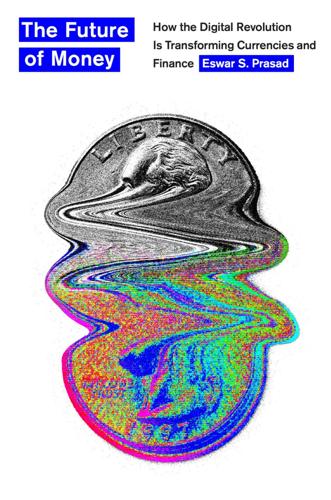
The Future of Money: How the Digital Revolution Is Transforming Currencies and Finance
by
Eswar S. Prasad
Published 27 Sep 2021
See Aswin Mannepalli, “Tested by Adversity, Fintech Branch Emerges Stronger (and Better at Risk Management),” Forbes, July 24, 2017, https://www.forbes.com/sites/aswinmannepalli/2017/07/24/tested-by-adversity-fintech-branch-emerges-stronger-and-better-at-risk-management/#16cf6b1afdd3, for a story about Branch’s early struggles with fraud. Fintech Lending Is a Mixed Blessing Fuster et al. (2019) mention the rise in the share of Fintech lenders in US mortgage lending from 2010 to 2016. The figure for 2017 is from Jagtiani, Lambie-Hanson, and Lambie-Hanson (2019). The former paper documents the processing speeds and default rates of Fintech lenders. The latter paper compares lending patterns of banks and Fintech lenders in the United States. The majority of Fintech-originated loans in the US are sold to Fannie Mae and Freddie Mac; hence, those institutions’ guidelines create broad similarities between Fintech and non-Fintech loans in observable characteristics.
…
The majority of Fintech-originated loans in the US are sold to Fannie Mae and Freddie Mac; hence, those institutions’ guidelines create broad similarities between Fintech and non-Fintech loans in observable characteristics. Di Maggio and Yao (2020) find that Fintech lenders in the United States acquire market share by first lending to higher-risk borrowers and then to safer borrowers. Borrowers from Fintechs are more prone to default (after controlling for other characteristics) than those from traditional institutions. Fintech lenders take this into account in their pricing strategies. Parlour, Rajan, and Zhu (2020) note that banks could lose valuable transaction information about consumers’ credit quality to Fintech lending. The recapture of consumer payment data by the broader market mitigates the increased riskiness of bank loans.
…
Highlights of Current Issues in Federal Reserve Board Consumer Compliance Supervision,” Federal Reserve, December 2019, https://www.federalreserve.gov/publications/files/201912-consumer-compliance-supervision-bulletin.pdf. The official press release regarding the Arizona Fintech sandbox is available at https://www.azag.gov/press-release/arizona-becomes-first-state-us-offer-fintech-regulatory-sandbox. The revised legislation is available at https://www.azleg.gov/legtext/54leg/1R/laws/0045.htm; and Lisa Lanham, “Arizona Seeks to Improve FinTech Sandbox with HB 2177,” JD Supra, October 10, 2019, https://www.jdsupra.com/legalnews/arizona-seeks-to-improve-fintech-53415/. The list of current participants is available at https://www.azag.gov/fintech/participants. For information on Verdigris, see https://www.verdigrisholdings.com/.
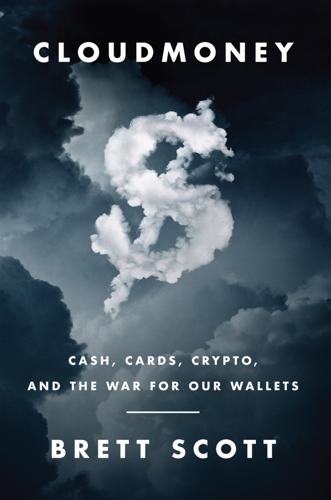
Cloudmoney: Cash, Cards, Crypto, and the War for Our Wallets
by
Brett Scott
Published 4 Jul 2022
Conspirator 3: The financial technology industry The fintech industry specialises in automating broader financial services (such as automating the decision process for who gets loans), but almost all fintechs rely upon the underlying infrastructure provided by banks and payments companies. They have a natural alliance, because to automate finance in general you need to automate payment systems in particular. Put simply, digital finance does not work with non-digital payments, and fintech developers see cash as a bug standing in the way of their financial automation. The last time I visited Level 39 – the big fintech hub in London – they refused to take cash at the bar.
…
Just as Apple is not going to deploy its engineers to build gym training apps, but is happy to serve as an environment to host them, so too are banking oligopolies happy to host accounts for niche fintechs. Rather than a bank trying to deal with the admin of tens of thousands of micro-savers, it can give one account to a fintech who aggregates those, automating the interactions with an app to make them more profitable before plugging into the underlying core ‘operating system’. This ‘operating system’ is underpinned – in the final analysis – by states. If fintech is based on automating access to finance, and finance is about contracts for money, and the monetary system is underpinned by national banking oligopolies, it means fintech companies often need to partner with banks to have any ability to operate at all.
…
Traditional banks start as actual banks and then later develop interfaces to engage the public, but neobanks start as interfaces. Many of these fintechs have about as much chance of disrupting finance as an IOS developer has of disrupting Apple, and they cannot wrench the monetary system away from banks any more than an app company can take control of the iPhone. The only ambiguity that emerges is when fintech companies cut directly into something banks would otherwise do, but after years of fintech rhetoric we have seen, overall, little bank disruption. The apparent death fight between banks and fintech looks more like symbiotic partnership that entrenches the overall power of Big Finance by extending its reach via new players.

The Blockchain Alternative: Rethinking Macroeconomic Policy and Economic Theory
by
Kariappa Bheemaiah
Published 26 Feb 2017
Chapter 2 FDIC. (2000, June 05). History of the 80s. Retrieved from Federal Deposit Insurance Corporation: https://www.fdic.gov/bank/historical/history/vol1.html Fintech Innovation . (2016, April 21). Accenture study says Chinese deals dominate Q1 2016 global Fintech investment . Retrieved from Fintech Innovation: http://www.enterpriseinnovation.net/article/accenture-study-says-chinese-deals-dominate-q1-2016-global-fintech-investment-1052478246 Accenture. (2016). Fintech’s Golden Age: Competition to Collaboration . Accenture. Bernanke, B. S. (2016, May 13). Ending “too big to fail”: What’s the right approach? Retrieved from Brookings: https://www.brookings.edu/2016/05/13/ending-too-big-to-fail-whats-the-right-approach/ Bipartisan Policy Center. (2014).
…
A little over a year after his speech at Davos, Carney once again made some thought-provoking remarks at a speech given on the 16th of June, 2016 at the Lord Mayor’s Banquet for Bankers and Merchants of the City of London.19 In his speech, titled “Enabling the FinTech transformation : Revolution, Restoration, or Reformation?”, Carney went on to state that FinTech and Blockchain could transform the global financial system and UK economy. Here below are a few extracts from his speech, which shed light on his vision of the future and which, coincidently, also touch upon a few topics discussed previously in this book: “FinTech…will change the nature of money, 20 shake the foundations of central banking, and deliver nothing less than a democratic revolution for all who use financial services.” “FinTech [has the] potential to deliver a great unbundling of banking into its core functions of settling payments, performing maturity transformation, sharing risk, and allocating capital.
…
The speech goes on to describe five steps that will be put in place simultaneously over the course of the year to enable the FinTech transformation of banking. These steps include the testing of new proofs of concept, the use of a distributed ledger, and the launch of a FinTech accelerator which will help boost the partnership between the Bank and selected FinTech companies. The point of displaying excerpts of Carney’s speech is not just to show his forward thinking mentality or his vision of the future of finance. It is to show that the fragmentation of banking is already underway in the more subtle and decorous guise of technological change. FinTech is short form for Financial Technology .
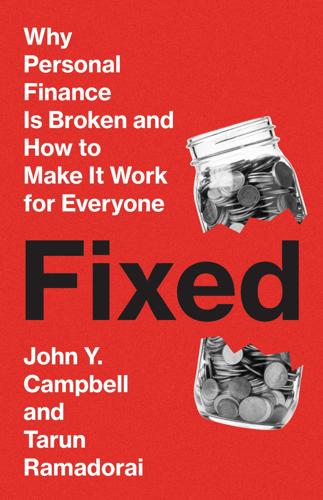
Fixed: Why Personal Finance is Broken and How to Make it Work for Everyone
by
John Y. Campbell
and
Tarun Ramadorai
Published 25 Jul 2025
Finance, January 26, 2023, rb.gy/p43u7a; and “FCA reveals the fourth round of successful firms in its regulatory sandbox,” Financial Conduct Authority, July 3, 2018, https://www.fca.org.uk/news/press-releases/fca-reveals-fourth-round-successful-firms-its-regulatory-sandbox. 32. This potential for cannibalization of existing supervisory resources has recently led the IMF to caution against exclusive reliance on sandboxes. See Parma Bains and Caroline Wu, “Institutional arrangements for fintech regulation: Supervisory monitoring,” June 26, 2023, https://www.imf.org/en/Publications/fintech-notes/Issues/2023/06/23/Institutional-Arrangements-for-Fintech-Regulation-Supervisory-Monitoring-534291. 33. See Coinbase.com, “What is Dogecoin?,” accessed August 9, 2024, https://www.coinbase.com/learn/crypto-basics/what-is-dogecoin. 34. Tarun Ramadorai and the Household Finance Committee, Indian Household Finance, Reserve Bank of India, 2017, Appendix F, outlines a rights-based data protection framework for financial information. 35.
…
Technology Is Part of the Solution, but Also Part of the Problem Fintech for Good: to Infinity … and Beyond! One seemingly obvious solution to the problems of personal finance is to deploy better technology. The suite of technological tools at our disposal today is already impressive and improving rapidly. The generative artificial intelligence revolution and the emergence of large language models promise to upend service provision in many areas of economic life, and personal finance appears ripe for disruption.1 Financial technology (“fintech” for short) is more easily accessible than ever. The arrival of the Internet began a process of technological connection that started with the personal computer and has greatly accelerated with the advent of the mobile phone and, most recently, the smartphone, as figure 8.1 shows.
…
But the benefits of technological innovation in finance go far beyond providing access through ubiquitous handheld devices. Fintech bears such great promise because of the age-old underlying economic problems that it helps to solve. FIGURE 8.1. Mobile phone penetration. Source: World Bank Group, https://data.worldbank.org/indicator/IT.CEL.SETS.P2. One such problem, described in chapter 1, is that any fixed costs that must be incurred to provide or effectively use financial services cut deeper for poorer people, as such costs represent a larger proportion of their relatively smaller transactions. Fintech is exciting in part because it can cut these fixed costs dramatically, both for users and for financial firms.
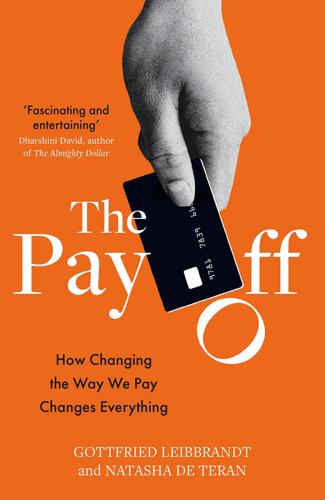
The Pay Off: How Changing the Way We Pay Changes Everything
by
Gottfried Leibbrandt
and
Natasha de Teran
Published 14 Jul 2021
Ever keen on a tax-take and a photo op, political leaders are anxious to see the next PayPal built in their backyard. They have bent over backwards to attract FinTech business and are quite happy for their regulators to hold FinTechs to lower standards.1 The regulators have meanwhile been keen to encourage competition, hoping that new providers will challenge banks on price and service and reach underserved markets, such as the unbanked. The FinTech revolution has largely lived up to its billing thus far, unleashing a wave of innovation in financial services and repairing some of its prevailing shortfalls.
…
Needless to say, venture capital money has pooled behind FinTech, much of which is backed by the belief that banking in general and payments in particular must be ripe for disruption. Similar to what has been happening in music, retailing, travel and cars, these investor-cheerleaders believe banks are ‘facing a Kodak moment’ – for those of us who remember Kodak, that does not mean a photo opportunity for senior management.2 Over the past few years, investors have sunk some $30–40 billion per year into FinTech. Few, if any, parts of the financial sector have been spared FinTech’s attentions, but perhaps none have received quite so much attention as payments.
…
Compare that with, say, Google’s 40 per cent and Facebook’s 20 per cent share of the US online advertising market, and several billion users around the globe. Given the relative disadvantages of the incumbent banks, you might wonder why the FinTechs have not yet put them out of business. The night is still young, of course, but those FinTechs that have tried directly competing with banks – the so-called ‘challenger’ or ‘neo-banks’ – might well find it closing in quite soon. For the most part, this type of FinTech offers full payment accounts based on cards. Their offering sounds very similar to pre-paid cards (see Chapter 7), but they typically target existing bank (or bankable) customers, offering cooler and cheaper alternatives to bricks-and-mortar banks.
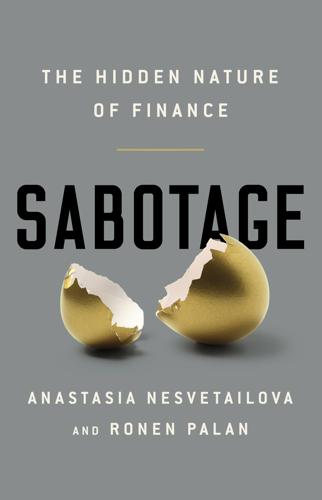
Sabotage: The Financial System's Nasty Business
by
Anastasia Nesvetailova
and
Ronen Palan
Published 28 Jan 2020
It appears that they will hold those till eternity.2 THE FINTECH SECTOR Fintech is a technology-anchored universe that involves, among other things, cryptocurrencies, blockchain, data mining, peer-to-peer lending, crowdfunding, money transfer services and smart contracts. Many of the innovations extend beyond financial services, where they have facilitated a range of new fundraising and investment opportunities on various platforms in cyberspace. The evolution of fintech has been both rapid and diverse, and it is clear that it can develop in any imaginable and, as yet, unimaginable direction. Broadly, fintech is seen as a positive development.
…
Broadly, fintech is seen as a positive development. Mark Carney, the governor of the Bank of England, recognized fintech’s ‘huge potential for making the financial system more inclusive, efficient, effective and resilient’.3 In March 2018 the European Commission adopted an action plan on fintech to foster a more competitive and innovative European financial sector.4 The Fed is embracing fintech, too, although with some apprehension. So is fintech really one of the greatest sets of innovations in finance, about to democratize the system and finally break through the strong grip that big money and big banks have on society? Not so, says Izabella Kaminska of the Financial Times, a sceptic.
…
Noonan, ‘How Deutsche Bank’s high-stakes gamble went wrong’, Financial Times, 9 November 2017, www.ft.com/content/60fa7da6-c414-11e7-a1d2-6786f39ef675. Josephson, M., The Robber Barons: The Great American Capitalists 1861–1901, Harcourt Brace, 1962. Kaminska, I., ‘Fintech’s security/access paradox problem’, Financial Times, 3 October 2016, https://ftalphaville.ft.com/2016/10/03/2176471/fintechs-securityaccess-paradox-problem. Kaminska, I., ‘Fintech as a gateway for criminal enterprise’, Financial Times, ‘Alphaville’, 12 January 2018, https://ftalphaville.ft.com/2018/01/12/2197610/fintech-as-a-gateway-for-criminal-enterprise. Katz, L., ‘Criminals may ditch Bitcoin for Litecoin, Dash, study says’, Bloomberg, 8 February 2018, https://www.bloomberg.com/news/articles/2018-02-08/criminals-are-ditching-bitcoin-for-litecoin-and-dash-study-says.

Reinventing Capitalism in the Age of Big Data
by
Viktor Mayer-Schönberger
and
Thomas Ramge
Published 27 Feb 2018
No digital currency is capable of: For more on blockchain, see Don Tapscott and Alex Tapscott, The Blockchain Revolution: How the Technology Behind Bitcoin Is Changing Money, Business, and the World (New York: Portfolio/Penguin Books, 2016). fintechs attracted investments exceeding $19 billion: Andrew Meola, “The Fintech Report 2016: Financial Industry Trends and Investment,” Business Insider, December 14, 2016, http://www.businessinsider.de/the-fintech-report-2016-financial-industry-trends-and-investment-2016-12?r=US&IR=T; KPMG, “The Pulse of Fintech: Global Analysis of Fintech Venture Funding,” November 13, 2016, https://assets.kpmg.com/content/dam/kpmg/xx/pdf/2016/11/the-pulse-of-fintech-q3-report.pdf. a fintech bubble: Alessandro Hatami, “After the Fintech Bubble—the Winners and Losers,” BankNXT, February 15, 2016, http://banknxt.com/55760/fintech-bubble-winners-and-losers.
…
They are even teaming up with new entrants in the financial services sector, in preparation for a world after money. There is some logic in the fact that banks are providing capital for fintechs, companies that use data technologies to provide financial services, many of which aim to push conventional banks off their pedestals. The banks’ bet is: if you get disrupted, you should at least own some of the players that take away your business. In 2015 alone, these fintechs attracted investments exceeding $19 billion worldwide. Some pundits have described the frantic activity as a fintech bubble. Although a number of fintechs focus on payment solutions, many of them focus squarely on offering disruptive innovation in two areas we’ll examine briefly: lending and investment planning.
…
This translates into a better assessment of actual default risk, and thus enables SoFi to offer loans to many of its customers at lower rates than what conventional lenders charge. SoFi’s model has been a resounding success: by 2017, the lender had funded more than $16 billion in loans, saving its customers, it says, an estimated $1.45 billion in interest. Another new entrant, Upstart, is a fintech that uses educational data in addition to traditional credit scores to assess credit risk and capture the risky end of the credit market. And fintechs such as Avant and ZestFinance (founded by former Google CIO Douglas Merrill) combat payday loan-sharking. By using machine learning and analyzing a huge number of data points per credit applicant, they believe they can calculate risk far better than traditional banks and thus can offer loans to individuals who otherwise would be at the mercy of the payday loan industry.
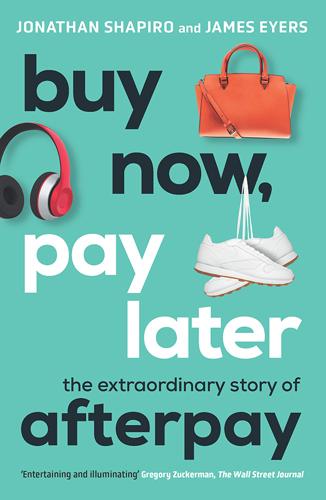
Buy Now, Pay Later: The Extraordinary Story of Afterpay
by
Jonathan Shapiro
and
James Eyers
Published 2 Aug 2021
This inquiry had far more positive connotations than the Labor-led inquiry, which had explored the possibility that unregulated credit was putting borrowers under pressure and Afterpay on the back foot. For Afterpay, the timing of Bragg’s inquiry could not have been better. From the outset, the select committee would be pro-fintech, intending to report on ‘the progress of fintech facilitation reform and the benchmarking of comparable global regimes’ and the ‘effectiveness of current initiatives in promoting a positive environment for fintech and regtech start-ups’.12 After failing to win pre-selection for the Senate and the lower house before the 2016 federal election—which saw Liberal prime minister Malcolm Turnbull sneak home to victory over Labor’s Bill Shorten—Bragg had joined the Menzies Research Centre, the policy think tank for the Liberal Party, as policy director, before shifting to the Business Council of Australia, the peak lobby group for Australia’s largest corporations.
…
Morrison realised he would need a new way to frame the inevitable march of progress for a sceptical electorate. After visiting the United Kingdom in early 2017, Morrison had been influenced by the pro-fintech policies of the UK government under Conservative chancellor of the exchequer George Osborne. At a speech to a high-level conference of G20 leaders in January 2017, Morrison said Australia would support fintech to boost banking competition and help facilitate access to new forms of finance. Australia wanted fintechs to ‘grow big, to thrive and deliver benefits for consumers and the economy’, he told heads of governments in Wiesbaden, Germany. Now the Senate’s powerful committee process would be used to quiz regulators, incumbents and start-ups—including Afterpay and Zip—on how the government’s policy settings could be improved.
…
Morrison had appointed one of his mentors and close advisers, Peter Verwer, who was based in Singapore, as special envoy to attract talent to Australia, and had included fintech in his mandate. The prime minister told the audience Australia wanted to attract more ‘highly skilled people to develop and commercialise the next wave of cutting-edge innovations’, and fintech entrepreneurs should consider Australia a place to build their businesses. Fintech was still his happy place. Afterpay was specifically mentioned by Morrison in his speech. Buy now, pay later was ‘an Australian innovation’, he proclaimed. • • • After the COVID-19 roller-coaster, Afterpay finished a tumultuous 2020 triumphantly.
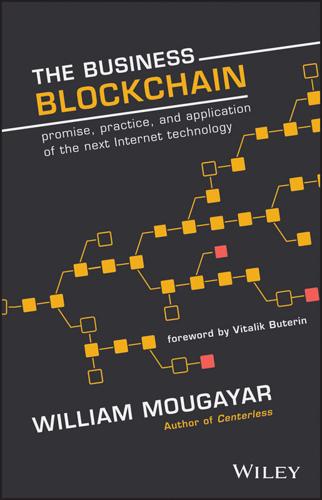
The Business Blockchain: Promise, Practice, and Application of the Next Internet Technology
by
William Mougayar
Published 25 Apr 2016
After all, you know your business better than anyone else. ATTACKED BY THE INTERNET AND FINTECH To understand how the blockchain will affect financial services institutions, we must go back to their recent history with the Internet, and also look at the advent of FinTech companies that offered competing services by embracing a technology-forward product approach. Banks have been relying on information technology (IT) since the early introduction of the mainframe computers in the late 1950s, but the term FinTech only became popular around 2013. It is ironic that technology has always played a key role in a bank’s operations, yet one could argue that banks did not innovate much with the Internet.
…
Fast forward to 2016, more than 20 years into the Web’s commercialization, and one could argue that banks only gave their customers Internet banking (with mobile access later), online brokerage, and online bill payments. The reality is that customers are not going to the branch as often (or at all), and they are not licking as many stamps to pay their bills. Meanwhile, FinTech growth is happening; it was a total response to banks’ lack of radical innovation. PayPal was the quintessential payment disruptor. Thousands of FinTech companies followed their lead and started offering alternative financial services solutions. With 179 million active users and $282 billiion total payments volume by the end of 2015, PayPal was “a truly global platform that is available in more than 200 markets, allowing customers to get paid in more than 100 currencies, withdraw funds from their bank accounts in 57 currencies and hold balances in their PayPal accounts in 26 currencies.”1 PayPal has direct relationships with hundreds of local banks around the world, making them arguably the only global financial services provider that virtually knows no boundaries.
…
If you talk to any banker in the world, they will admit that ApplePay and PayPal are vexing examples of competition that simply eats into their margins, and they could not prevent their onslaught. By 2015, more than $19 billion in venture funding had been poured into FinTech startups.2 Many of them were focused on just a few popular areas: loans, wealth management, and payments. Some startups have gone as far as offering full banking services via mobile-only, an approach that is appealing to millennials. This proves that a new form of bank can be created from scratch, without legacy baggage. What is interesting is that FinTech startups didn’t initially attack incumbents head-on, knowing it is risky and costly. Rather, their entry points were in adjacent, uncontested, neglected, or underserved territories; they appear at first to be avoiding the incumbents.
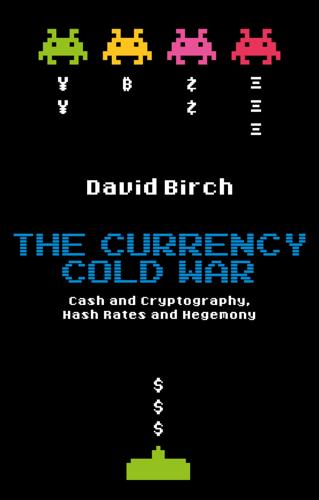
The Currency Cold War: Cash and Cryptography, Hash Rates and Hegemony
by
David G. W. Birch
Published 14 Apr 2020
Kharkiv, Ukraine: Distributed Lab. Krupps, M., and H. Murphy. 2019. ‘DeFi’ movement promises high interest but high risk. Financial Times, 29 December. URL: https://on.ft.com/2suqwKm. Lagarde, C. 2017. Central banking and fintech: a brave new world? Speech, Central Banking and Fintech, London, Bank of England. Lagarde, C. 2018. Winds of change: the case for new digital currency. Speech, Singapore Fintech Festival, Singapore, MAS. Lanchester, J. 2019. The invention of money. The New Yorker, 29 July. URL: http://bit.ly/2tYR3QD. Lanier, J. 2013. How will we earn and spend? In Financial Identity: Who Owns the Future?
…
Bots It is hardly radical to say that artificial intelligence (AI) will change the financial sector and, therefore, money. It will change the way the IMFS and financial markets work. It is not only technologists who envisage a new future that combines fintech and regtech to create a better financial sector. The Bank of England’s Working Paper 274 (published in September 2017), which looked at machine learning in central banks and explored banking supervision, came to similar conclusions. AI is not only a fintech that can help organizations to shift their cost–benefit ratios around products and services, but also a regtech that can help jurisdictions to create better financial services sectors.
…
There are good reasons to think that using this kind of ‘hierarchical double-permissioned’ ledger will be the choice of the IMFS (Birch et al. 2016). Customers can use it, provided their financial institution gives them permission, but they are not responsible for maintaining its integrity: banks and regulators are. There are financial technology (fintech) advantages to the reliability, innovation, integrity and flexibility that come from the combination of a shared ledger and shared ledger applications. We are sure that innovators in this space will continue to surprise us all, since we are only in the earliest stages of the evolution of a new family of shared ledger technologies.

The Pyramid of Lies: Lex Greensill and the Billion-Dollar Scandal
by
Duncan Mavin
Published 20 Jul 2022
It was like winning the lottery a hundred times over. Lex had taken to calling Greensill a fintech too. In reality, it was nothing like that, culturally or in a business sense. In contrast to the uber-casual tech scene, Greensill’s senior executives were buttoned-up and formally dressed. And while the company shared much of the ‘move fast and break things’ ethos of big tech companies, it had little in the way of actual new or proprietary technology. But that didn’t really matter. If Lex said the business was a fintech enough times, others would repeat it, and the money flowed in. There was another term frequently applied to Greensill: ‘shadow bank’.
…
The final Lex twist was to add new technology. In the wake of the financial crisis, there had been an explosion in new financial technology companies, or fintechs. Some of these were in the payments processing space, and included PrimeRevenue, Orbian, Taulia and Demica. Lex was no techie. Instead, he hooked up with a series of other aspiring entrepreneurs who carried the bulk of the technology he needed to run the business. And then he liberally applied the fintech tag to Greensill Capital too. To make it all work, Lex created a tangle of special purpose vehicles (SPVs), trusts, offshore companies and subsidiaries that each played a critical role.
…
He rarely mentioned his wife or his children at work. Very few, if any, people seemed to feel they knew him well. But there were signs of how his new, vast wealth was changing his life. He donated £2.5 million to Manchester University to support the appointment of a ‘Greensill Chair in FinTech Investment’. The vice chancellor said the donation would help boost the university’s fintech credentials. In a press release, Lex said, ‘We are delighted to be able to give back to an institution that was so important to the foundation of our firm.’ The old vicarage where Lex and his family lived underwent a multimillion-pound makeover that included a hi-tech wine cellar, games room and pool.
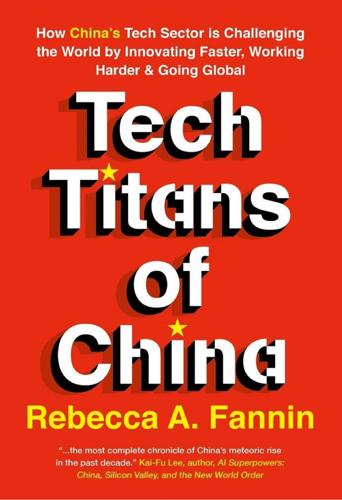
Tech Titans of China: How China's Tech Sector Is Challenging the World by Innovating Faster, Working Harder, and Going Global
by
Rebecca Fannin
Published 2 Sep 2019
Alibaba Builds Anthills A major component of the Alibaba vast empire is fintech giant Ant Financial, with its black, ant-shaped logo, a throwback to Ma’s first Chinese startup, which he described as an ant up against an elephant. The elephant was Chinese government-owned China Telecom, which paid Ma $185,000 in a joint venture that ultimately killed his little startup. Ma once told me that you “use your brain when you’re small,” and no Chinese entrepreneur has managed to look bigger. If taking over Yahoo! in China and beating eBay weren’t big enough accomplishments, his move into fintech with Ant Financial is the one to watch.
…
Riding high on China’s growing trend toward online knowledge platforms, LAIX attracted 110 million registered users in 2018, including 2.5 million who paid for courses for the full year. Revenues soared in its first year as a publicly traded company by 285 percent to $93 million. AI at Work in Fintech: WeLab An example of AI disrupting traditional banking comes from Hong Kong–based fintech startup WeLab, which provides small consumer loans in an online instant, with fewer than average defaults by relying on AI and data to determine creditworthiness. WeLab technology combs through online data such as bill payment records and social media profiles to figure out which potential borrowers are likely to pay their loans on time.
…
PART THREE Tech Sectors that Matter Most: China’s Grab for Superpower Status A look at key market sectors with strong potential to shake up leadership and overturn technology standards in the world as East and West vie for tech superpower status. Chapter 6 Face-off in AI China and the United States are racing to dominate the high-stakes AI market. China could bypass the United States with its wealth of data and quicker rollout of self-driving vehicles, facial recognition for public security, and AI technologies for fintech, edtech, and health-care startups. Chapter 7 A Shared Economy The fad in China’s booming sharing economy for hitching a ride has been very bumpy for bike-sharing startup Ofo, but ride-hailing leader Didi has had a good run in beating Uber. Now shared umbrellas, mobile chargers, and even takeout kitchens are here.
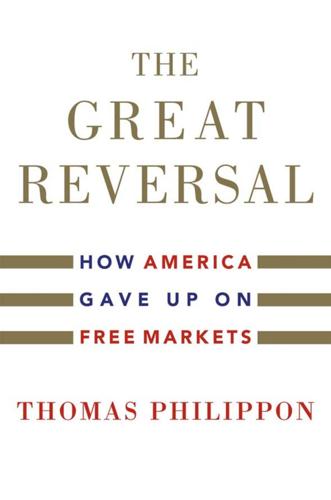
The Great Reversal: How America Gave Up on Free Markets
by
Thomas Philippon
Published 29 Oct 2019
Banks generate large spreads on deposits (Drechsler, Savov, and Schnabl, 2017). This might be changing, however, thanks to the entry of financial technology (fintech) players. Fintech includes digital innovations that can disrupt financial services. As usual, innovation is a double-edged sword. Innovations can provide new gateways for entrepreneurship and democratize access to financial services, but they also create significant privacy, regulatory, and law-enforcement challenges. Examples of innovations that are central to fintech today include mobile payment systems, crowdfunding, robo-advisors, blockchains, and various applications of artificial intelligence and machine learning.
…
My point here is that implementing these regulations would have been a relatively straightforward process when the industry was small, and they would have guided market evolution and encouraged innovations consistent with sound principles of finance. It is significantly more difficult to change the regulations when the industry has several trillion dollars under management. Thus the challenge for regulators is to look ahead when dealing with fintech. Effective regulation requires them to identify some basic features they would like fintech to have and mandate them as early as possible. I think that is a key lesson for the regulation of fintech. I recall a fascinating exchange at a recent conference about blockchains and privacy. There is a tension between the principles of blockchains (such as their permanence) and the right of individuals to request that their personal data be erased.
…
For instance, the cost of sending $200 in the World Bank sample of forty-eight sending countries has fallen from 9.8 percent to 7.1 percent over the past decade. Of course, 7.1 percent is still expensive. But at least the trend is in the right direction. For fintech to really succeed, however, regulations must be adapted. As in other industries, fintech startups propose disruptive innovations for the provision of specific services. The key advantages of incumbents are their customer base, their ability to forecast the evolution of the industry, and their knowledge of existing regulations. The key advantage of startups is that they are not held back by existing systems and are willing to make risky choices.
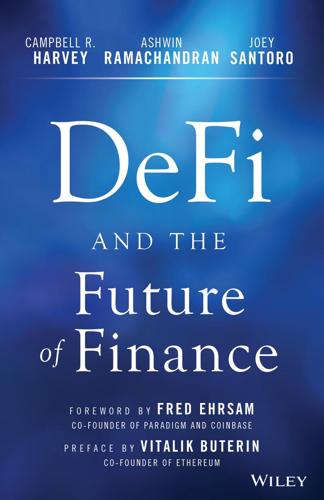
DeFi and the Future of Finance
by
Campbell R. Harvey
,
Ashwin Ramachandran
,
Joey Santoro
,
Vitalik Buterin
and
Fred Ehrsam
Published 23 Aug 2021
Importantly, all these innovations were built on the backbone of centralized finance. While there have been some technological advances, the structure of today’s banking system has not changed much in the past 150 years. That is, digitization still supported a legacy structure. The high costs associated with this legacy system has spurred further advances known as fintech. FINTECH When costs are high, innovation will arise to capitalize on inefficiencies. Sometimes, however, a powerful layer of middle people can slow this process. An early example of decentralized finance emerged in the foreign currency (forex) market 20 years ago. At the time, large corporations used their investment banks to manage their forex needs.
…
Many large institutions moved their trading large blocks to these dark pools, where they traded peer to peer with far lower costs than traditional exchange-based trading. The excessive costs of transacting has ushered in many fintech innovations. PayPal,3 founded more than 20 years ago, is a forerunner in the payments space; in 2017, seven of the largest U.S. banks added their own payment system called Zelle.4 An important commonality of these cost-reducing fintech advances is that they rely on the centralized backbone of the current financial infrastructure. BITCOIN AND CRYPTOCURRENCY The dozens of digital currency initiatives beginning in the early 1980s all failed.5 The landscape shifted, however, with the publication of the famous Satoshi Nakamoto Bitcoin white paper6 in 2008, which presents a peer-to-peer system that is decentralized and uses the concept of blockchain.
…
Table of Contents COVER TITLE PAGE COPYRIGHT FOREWORD PREFACE I INTRODUCTION FIVE KEY PROBLEMS OF CENTRALIZED FINANCIAL SYSTEMS IMPLICATIONS NOTES II THE ORIGINS OF MODERN DECENTRALIZED FINANCE A BRIEF HISTORY OF FINANCE FINTECH BITCOIN AND CRYPTOCURRENCY ETHEREUM AND DeFi NOTES III DeFi INFRASTRUCTURE BLOCKCHAIN CRYPTOCURRENCY THE SMART CONTRACT PLATFORM ORACLES STABLECOINS DECENTRALIZED APPLICATIONS NOTES IV DeFi PRIMITIVES TRANSACTIONS FUNGIBLE TOKENS NON-FUNGIBLE TOKENS CUSTODY SUPPLY ADJUSTMENT INCENTIVES SWAP COLLATERALIZED LOANS FLASH (UNCOLLATERALIZED) LOANS NOTES V PROBLEMS DeFi SOLVES INEFFICIENCY LIMITED ACCESS OPACITY CENTRALIZED CONTROL LACK OF INTEROPERABILITY VI DeFi DEEP DIVE CREDIT/LENDING DECENTRALIZED EXCHANGE DERIVATIVES TOKENIZATION NOTES VII RISKS SMART CONTRACT RISK GOVERNANCE RISK ORACLE RISK SCALING RISK DEX RISK CUSTODIAL RISK ENVIRONMENTAL RISK REGULATORY RISK NOTES VIII CONCLUSIONS: LOSERS AND WINNERS NOTE ACKNOWLEDGMENT REFERENCES GLOSSARY INDEX End User License Agreement List of Tables Chapter 6 Table 6.1 The Problems That MakerDAO Solves Table 6.2 Problems That Compound Solves Table 6.3 Problems That Aave Solves Table 6.4 Problems That Uniswap Solves Table 6.5 Problems That the Yield Protocol Solves Table 6.6 Problems That dYdX Solves Table 6.7 Problems That Synthetix Solves Table 6.8 Problems That Set Protocol Solves List of Illustrations Chapter 2 Figure 2.1 Western Union transfer from 1873 Figure 2.2 Iraqi Swiss dinars and new dinars Chapter 4 Figure 4.1 Linear bonding curve Figure 4.2 Superlinear bonding curve Figure 4.3 Logistic/sigmoid bonding curve Figure 4.4 Different bonding curves for purchases and sales Figure 4.5 The mechanics of automated market makers Chapter 6 Figure 6.1 The Mechanics of MakerDAO's DAI Figure 6.2 Collateralization Ratios in Compound Figure 6.3 Savings and Lending Rates in Compound Figure 6.4 The Mechanics of Compound's Equity Token (cToken) Figure 6.5 The Mechanics of an Aave Flash Loan Figure 6.6 The Mechanics of a Uniswap Automated Market Maker Figure 6.7 The Mechanics of a Flash Swap in Uniswap Figure 6.8 The Mechanics of Fixed-Rate Borrowing in the Yield Protocol Figure 6.9 The Mechanics of Arbitrage with dYdX Figure 6.10 Perpetual Futures with dYdX Figure 6.11 The Mechanics of Synthetix DeFi and the FUTURE of FINANCE Campbell R.

API Marketplace Engineering: Design, Build, and Run a Platform for External Developers
by
Rennay Dorasamy
Published 2 Dec 2021
February 2021 – other banks Access type API Product scope Credit and debit cards, deposit and transaction accounts, mortgage and personal loan data Status • 2018: Australian government approved a framework for Open Banking • July 2020: Implemented in a phased approach, with the four big banks legally required to make consumer usage data available to consumers on credit and debit cards as well as deposit and transaction accounts • November 2020: Mortgage and personal loan data to be shared • February 2021: Other banks to start sharing data Table 2-2Open Banking – China Jurisdiction China Approach Market-driven Lead FinTechs Service providers AliPay, FinTechs Access type API Product scope As per the consumer (any financial data) Status • Open Banking is not being promoted by regulators but rather driven by FinTech companies Table 2-3Open Banking – European Union Jurisdiction European Union Approach Prescriptive Lead EU Commission Service providers All banks and payment service providers Access type API, Screen scraping Product scope Current and savings accounts Status PSD2 directs banks to open up their systems to allow third-party access to certain customer account information, in order to make payments on their behalf (via credit transfers) and to provide them with a view of their various payment accounts, subject to customer consent • The aim is to increase competition and promote innovation through data sharing Table 2-4Open Banking – Hong Kong Jurisdiction Hong Kong Approach Facilitative Lead Hong Kong Monetary Authority Service providers 20 participating retail banks have made available more than 500 open APIs, offering access to information of a wide range of banking products and services Access type API Product scope As per the consumer (any financial data) Status July 2018: The Hong Kong Monetary Authority introduced the Open API Framework.
…
From simply capturing credit card details to paying for the items in an electronic shopping basket, the capability has improved significantly. On the face of it, the participants in the transaction should simply be the end user, the online retailer, and the Financial Institution. Due to the myriad of banks, complex agreements, and interfacing mechanisms, innovative Financial Technology (FinTech) companies have established themselves as a new, integral participant by stepping in to abstract the complexity and providing an easy to consume service for online retailers. One such service is payment initiation. Figure 2-1 shows how an online retailer can simply integrate into a single payment provider which can leverage its network of interfaces into various banks instead of directly integrating with each bank.
…
Payment Initiation Service Providers (PISP) initiate a payment transaction on behalf of the customer via a different platform than the one belonging to the bank where the account is held. Third-Party Provider (TPP) is an entity authorized to access accounts on behalf of customers but that does not operate those accounts themselves. Types of TPPs include PISPs and AISPs. An example of a TPP is a FinTech. Account Servicing Payment Service Provider (ASPSP) provides and maintains a payment account for a payer. This is essentially the Bank or Financial Institution which holds the customer’s account and money. Figure 2-2 provides a visual representation of the terms and classifications and how it fits together.

The Future Is Asian
by
Parag Khanna
Published 5 Feb 2019
Across these middle- and low-income countries, the penetration of fintech products around lending and insurance is less than 5 percent, promising an enormous pool of nearly 2 billion customers ready to leapfrog. About $50 billion in fintech investment is expected every year until 2025 to upgrade Southeast Asia. Mobile banking is also taking off in Asia’s poorest countries. By 2025, there may not be any more “unbanked” Asians. China’s fintech leadership is an important reason why. Chinese invest more than $100 billion per year in fintech products (far ahead of Americans at $35 billion).44 The People’s Bank of China (PBOC) already has a digital currency running parallel with the renminbi between government and banks to help scale traceable and secure financial transactions.
…
WeChat has evolved from messaging to payments to personal finance with the launch of WeBank, an online-only bank, in 2014. Together, Alipay and WeBank account for an estimated 50 percent or more of bank deposits in China. 45 According to “EY FinTech Innovation Index, 2017,” China and India rank ahead of the United Kingdom, Germany, and the United States in providing large-scale digital consumer banking and other financial products to the masses. https://www.ey.com/Publication/vwLUAssets/ey-fintech-adoption-index-2017/$FILE/ey-fintech-adoption-index-2017.pdf. 46 Mayuko Tani, “Asia’s ‘Tiger Cubs’ Will Feast on FDI for the Next Decade,” Nikkei Asian Review, August 2, 2017. 47 Geely’s 800,000 car sales in Europe in 2016 were less than Volkswagen’s 4 million, but for Geely, Europe is far less important than its core market of China itself.
…
New York: Columbia University Press, 2007. Mishra, Pankaj. From the Ruins of Empire: The Intellectuals Who Remade Asia. New York: Farrar, Staus and Giroux, 2012. Mittal, Sachin, and James Lloyd. “The Rise of FinTech in China: Redefining Financial Services.” DBS and Ernst & Young, November 2016. https://www.ey.com/Publication/vwLUAssets/ey-the-rise-of-fintech-in-china/$FILE/ey-the-rise-of-fintech-in-china.pdf. Miyoshi, Masao, and H. D. Harootunian, eds. Japan in the World. Chapel Hill, NC: Duke University Press, 1993. ———, eds. Learning Places: The Afterlives of Area Studies. Chapel Hill, NC: Duke University Press, 2002. ———, eds.

The Industries of the Future
by
Alec Ross
Published 2 Feb 2016
Yet even as the industries of the future offer new opportunities to rising hotbeds of innovation around the world, it’s interesting to watch how Silicon Valley’s influence lingers and continues to draw start-ups in almost every industry. Consider the example of digital currency and fintech, industries of the future that blend old world and new. New York and London are the world’s two dominant centers of domain expertise in global banking today, and both are home to substantial fintech investment. Over the past five years, the United Kingdom and Ireland were home to 52 percent of all the fintech financing in Europe. And New York drew even larger levels of fintech financing than London, with dozens of deals putting hundreds of millions of dollars into the bank accounts of technology companies trying to make the banking sector smarter.
…
The application of big data to enhance operations and product development in retail banking is known as “fintech.” The technology that undergirds the banking system’s current infrastructure is obsolete. As Shakil Khan, the creator of the Bitcoin news service CoinDesk, describes, the systems behind basic banking functions like processing loans and monitoring accounts are “very, very old in today’s day and age. Where technology companies are innovating and bringing out new products every six months, banks are running on systems that were built in the 1980s and 1990s.” Fintech seeks to change that. In 2008, financial technology firms raised approximately $930 million in investments globally.
…
“Engaging with the start-up and venture capital community forces us to think about innovation in a different way, more revolution than evolution.” One representative of the fintech community is 29-year-old Zac Townsend. Zac cofounded Standard Treasury, a start-up company recently bought by Silicon Valley Bank that was established to figure out how technology can help banks better interact with their customers. Over breakfast in downtown San Francisco, Zac explained what brought him to fintech. Born and raised in New Jersey, he started a career in government innovation, working for both Mayor Michael Bloomberg of New York City and Mayor Cory Booker of Newark.
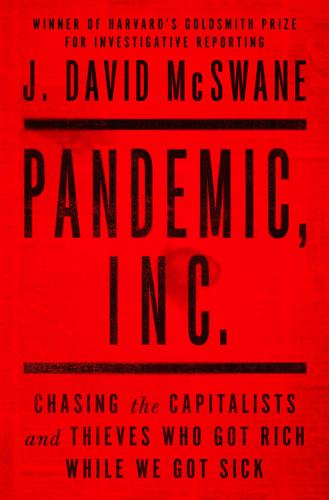
Pandemic, Inc.: Chasing the Capitalists and Thieves Who Got Rich While We Got Sick
by
J. David McSwane
Published 11 Apr 2022
Some of that unequal relief would be addressed through millions of smaller loans churned out by financial tech companies, commonly referred to as “fintech.” These online lenders aren’t banks but rather work as intermediaries to connect applicants with lenders and investors. Fintech entered the mainstream with the advent of companies like SoFi, which offered more favorable rates than banks for those looking to consolidate student loan debt. But the model found a niche—and billions in easy profit—in servicing small and struggling businesses that banks had overlooked or turned away. Through automation, data, and statistical models that help determine if applicants will repay a loan, fintechs removed much of the human work from the loan approval process.
…
With less human involvement, it appears, came less racial bias. Researchers at New York University, for instance, found that businesses owned by Black people were 70 percent more likely to have gotten their PPP loan from fintech than a small bank. The robots were more human than human. While that was good for millions of small businesses eking by, it was a multibillion-dollar boon for fintech companies, including two that entered the fray during the pandemic. The PPP program offered lenders a 5 percent cut on every loan they approved that totaled less than $350,000, which was most loans. Because the federal government had guaranteed the loans, those lenders had almost no risk and all upside to approve as many loans as possible.
…
Like the federal contracting data we’d parsed months before, the inquiry led to a year of fruitful investigations that revealed rampant fraud and waste. Of all the wacky fraud stories to fall out of the pandemic relief funds, none were so outrageous and entertaining as theirs. They grouped loans by lenders, ran a few filters, made dozens of calls, and found that one fintech company had awarded nearly 400 forgivable loans worth $7 million to fake companies. Kabbage, an Atlanta-based fintech, had awarded sizable loans to nonexistent farms, which should have raised red flags. “Ritter Wheat Club” and “Deely Nuts,” one a wheat farm and the other a nut farm, were each awarded the maximum amount for sole proprietors, nearly $21,000.

The Flat White Economy
by
Douglas McWilliams
Published 15 Feb 2015
The UK and Ireland (which is, in practice, chiefly a London measure) accounts for more than 50% of European technology venture capital measured by number of deals – and 69% measured by funds invested. Deal volume in London has been growing at an annual rate of over 70% since 2008 and grew by 117% in the year to Q1 2014. London is now home to at least five fintech laboratories: the Fintech Innovation Lab set up by Accenture in 2012; the Level 39 Fintech accelerator in Canary Wharf; the Techstars/Barclays lab in Mile End; the StartUpBootCamp backed by Lloyds, Rabobank and MasterCard; and Bold Rocket in Great Eastern Street. These all provide a mix of finance, training and support for high-tech startups.
…
And with the traditional banking system still inhibited by the aftermath of the financial crisis, which has held back its ability and willingness to lend, there is a niche that needs filling. Fintech – the business of financing technology – is still in its infancy in London. But it has shown substantial growth in the past decade, and particularly since 2008. London accounts for 8.9% of world technology finance – a long way short of the 30% contributed from Silicon Valley but nevertheless a figure which indicates an emerging growth. In the five years to 2013 London fintech growth was twice that of Silicon Valley. The UK and Ireland (which is, in practice, chiefly a London measure) accounts for more than 50% of European technology venture capital measured by number of deals – and 69% measured by funds invested.
…
‘Entrepreneurship and Innovation in the North’ Paper 3, Northern Economic Agenda Project, Michael Johnson and Howard Reed, January 2008. (Institute for Public Policy Research www.ippr.org/assets/media/images/media/files/publication/2011/05/entrepreneurship_and_innovation_1619.pdf). 11. See for example research.upjohn.org/cgi/viewcontent.cgi?article=1021&context=confpapers INDEX Accenture Fintech Innovation Lab ref1 accommodation ref1, ref2, ref3 cheap ref1, ref2, ref3 cramped ref1 displacement of ref1 proximity to amenities ref1 Advanced Card Systems ref1 advertising/marketing ref1, ref2 campaigns ref1 digital ref1 investment in ref1 online ref1, ref2, ref3, ref4 role of creativity in ref1 Aerob ref1 AirWatch ref1 Alibaba ref1, ref2 floated on NYSE ref1 Allegra Strategies ref1 Allford, Simon ref1 Allford Hall Monaghan Morris ref1 Amazon.com, Inc. ref1, ref2, ref3 Apple, Inc. ref1, ref2, ref3 development kits ref1 facilities of ref1 product lines of ref1 Argentina Buenos Aires share of GDP ref1 Association of London Councils ref1 AT&T Inc. ref1 Australia ref1 Sydney ref1 Austria Vienna share of GDP ref1 Bangladesh economy of ref1 Dhaka ref1 Bank of England investment guidelines ref1 BASF SE ref1 Bell Telephones personnel of ref1 Bennet, Natalie leader of Green Party ref1 bicycles ref1 fatalities associated with ref1 sales of ref1 use in commuting ref1 big data ref1 Birmingham Science Park Aston Innovation Birmingham Complex ref1 Bold Rocket ref1 bonuses ref1 use in property market ref1 Boston Consulting Group ref1, ref2 British Bars and Pubs Association ref1 British Broadcasting Corporation (BBC) BBC Scotland ref1 Brough, Graham ref1 Brown, Gordon ref1, ref2 Burkina Faso Ouagadougou ref1 Burt, Prof Ronald ref1, ref2 Cable and Wireless assets of ref1 Cameron, David economic policies of ref1, ref2 immigration policies of ref1 Canada ref1 Montreal ref1 Toronto ref1, ref2 Vancouver ref1 capital rate of return ref1, ref2 capitalism ref1, ref2, ref3 profits ref1 Catholicism ref1 Centre for Cities ref1, ref2 Centre for Economics and Business Research (Cebr) ref1, ref2, ref3, ref4, ref5, ref6, ref7, ref8, ref9 estimates of UK economic growth ref1 offices of ref1 personnel of ref1, ref2 Centre for Retail Research ref1, ref2 champagne sales figures ref1, ref2 Channel 4 ref1 China Beijing ref1, ref2, ref3 Haidian district ref1 economy of ref1 Golden Shield firewall (Great Firewall of China) ref1 government of ref1, ref2, ref3 Hong Kong ref1, ref2, ref3, ref4, ref5, ref6 Cyberport ref1 Hong Kong Stock Exchange ref1 People’s Liberation Army (PLA) ref1, ref2 special economic zones Hangzhou ref1 Shenzhen ref1 Zhongguancun Innovation Way (Z-innoway) ref1 China Mobile ref1 China Telecom ref1 China Unicom ref1 Cisco Systems facilities of ref1 cloud computing ref1, ref2 Coalition Government immigration policy of ref1, ref2 coffee shops culture of ref1 cyber cafes ref1 growth of market ref1 Commonwealth migration from ref1 Companies House ref1 Confederation of British Industry (CBI) ref1, ref2 personnel of ref1 Confucianism ref1 Conservative Party ref1 Cooper, Wayne ref1 Corporation of London ref1, ref2, ref3 Crafts, Nick ref1 creative economy ref1 Cridland, John leader of CBI ref1 Cromwell, Oliver ref1 Crow, Bob ref1 Daily Mail ref1 Danone ref1 Danticat, Edwidge ref1 Davis, Charles ref1 Decoded ref1 Deloitte ref1 deregulation of financial markets (1986) ref1 digital economy ref1, ref2, ref3, ref4 emergence of ref1, ref2 role of creativity in ref1 Dorling, Danny ref1 Dunne, Ronan CEO of O2 (UK) ref1 Durden, Tyler ref1 Economic Journal, The ref1, ref2 Economist, The ref1, ref2, ref3 Edinburgh University ref1 Eggers, Dave Circle, The (2013) ref1 Egypt Cairo ref1 share of GDP ref1 employment ref1 growth ref1 immigrant labour ref1 in FWE ref1, ref2, ref3, ref4 job creation ref1 low-skilled jobs ref1 public sector 1112 science, technology, engineering and mathematics (STEM) ref1 growth of ref1 shortages ref1 end user demand ref1 Engels, Friedrich ref1 Entrepreneurs for the Future (E4F) ref1 entrepreneurship ref1, ref2, ref3 e.Republic Center for Digital Government and Digital Communities Digital Cities award programme ref1, ref2 Esquire (magazine) ref1 European Economic Area (EEA) ref1 migrants from ref1 contribution to fiscal system ref1 migrants from outside ref1 contribution to fiscal system ref1 European Union (EU) free movement of labour in ref1 member states of ref1, ref2, ref3 taxation regulations ref1 Eurostar ref1 Eurozone ref1, ref2 Crisis (2009–) ref1, ref2, ref3 economy ref1 Facebook ref1, ref2, ref3, ref4 IPO of ref1 Falmouth University ref1 Fan, Donald Senior Director for Office for Diversity of Walmart ref1 FanDuel ref1 Farage, Nigel leader of UKIP ref1 feudalism ref1 financial services ref1, ref2, ref3, ref4, ref5 lifestyles associated with ref1, ref2 Financial Times (FT) ref1 FT Global Top 500 Companies ref1 Fintech ref1 First World War (1914–18) ref1 fiscal transfer ref1, ref2, ref3 net ref1 potential use to cover local deficits ref1 Flat White Economy (FWE) ref1, ref2, ref3, ref4, ref5, ref6, ref7, ref8, ref9, ref10, ref11, ref12, ref13, ref14, ref15, ref16, ref17 advantages of immigration for ref1, ref2, ref3 business model for ref1 development and growth of ref1, ref2, ref3, ref4, ref5, ref6, ref7, ref8, ref9 employment in ref1, ref2, ref3, ref4 shortages ref1 impact on UK economy ref1, ref2 model of ref1, ref2, ref3 replicating ref1-ref2 role of creativity in ref1 startups in ref1 business model ref1 Flat Whiters ref1 accommodation data for ref1 social culture of ref1 fashion ref1 nightlife ref1 transport ref1 technology used by ref1 Forbes (magazine) ref1 France ref1 education system of ref1 Paris ref1, ref2, ref3 share of GDP ref1 Paris-Sarclay ref1 creation of (2006) ref1 potential limitations of ref1 promotion of ICT in ref1 Forst and Sullivan ref1 France ref1, ref2 Freeman, Prof Christopher ref1 Fujitsu Ltd. ref1 Funding Circle ref1 Gates, Bill ref1 Germany ref1, ref2, ref3 Berlin ref1 economy of ref1 Glaeser, Edward ref1 Triumph of the City, The ref1 Global Financial Crisis (2007–9) ref1, ref2 Banking Crises (2008) ref1 impact on migration ref1 UK recession (2008–9) ref1 Global Innovation Index ref1 globalisation ref1, ref2, ref3 Glyn, Andrew ref1 Goodison, Sir Nicholas Chairman of the Stock Exchange ref1 Google, Inc. ref1, ref2, ref3, ref4, ref5, ref6, ref7, ref8 acquisitions made by ref1 development kits ref1 offices of ref1, ref2 Greater London Authority (GLA) ref1, ref2 Green Party members of ref1 Gröningen Growth and Development Centre ref1 Guardian, The ref1, ref2, ref3 Harbron, Rob ref1, ref2 Harrison, Andy Chief Executive of Whitbread ref1 Harvard Business School ref1 Harvard University Harvard Lab for Computer Graphics and Spatial Analysis ref1 HCL Technologies ref1 Heisnberg, Werner uncertainty principle ref1 Hewlett-Packard Company (HP) ref1 Huawei Technologies ref1 immigration ref1, ref2, ref3, ref4, ref5, ref6 advantages for FWE ref1, ref2, ref3 economic impact of ref1, ref2 impact on social cohesion ref1 impact on wages ref1 legislation ref1 access to state benefits ref1 quota systems ref1 non-EEA ref1, ref2 restrictions on ref1, ref2, ref3 Imperial College, London facilities of ref1 India ref1, ref2 Calcutta ref1 IT sector of ref1 Karnataka ref1 Bangalore ref1, ref2, ref3, ref4 Electronics City ref1 Mumbai ref1 inequality ref1 potential role of London in ref1, ref2 sources of wealth ref1 Infosys Ltd ref1 initial public offering (IPOs) ref1 innovation ref1, ref2, ref3, ref4, ref5, ref6, ref7, ref8 hubs ref1, ref2 independent ref1 investments in ref1 projects ref1 Institute for Public Policy Research ref1 intellectual property protection of ref1, ref2 Intel Corporation ref1, ref2, ref3 facilities of ref1 personnel of ref1 International Business Machines (IBM) ref1, ref2 facilities of ref1, ref2, ref3 personnel of ref1, ref2, ref3 internet usage ref1 investment ref1, ref2, ref3 advertising and marketing ref1 capitalising of ref1 in innovation ref1 process of ref1 Israel ref1, ref2 Defence Ministry ref1 Haifa ref1 tech sector of ref1 IT spending ref1, ref2 accounting for ref1 software ref1 Italy ref1 Frascati ref1 Rome ref1 ITC Infotech India Ltd ref1 Japan ref1 economy of ref1 Tokyo ref1 share of GDP ref1 Johnson, Boris Mayor of London ref1, ref2, ref3 Johnson Press plc ref1 Judaism ref1 Kaldor, Nicholas ref1 Keynes, John Maynard ref1 Economic Consequences of the Peace, The ref1 KPMG ref1 labour ref1 division of ref1 immigrant ref1, ref2, ref3, ref4 market ref1 shocks ref1 share of income ref1, ref2 supply of ref1, ref2, ref3, ref4 Labour Party ref1 immigration policies of ref1 Lai, Ian ref1 Laserfiche ref1 Lawson, Nigel ref1 Leeds Beckett University ref1 Level 39 ref1 Liberal Democrats immigration policies of ref1 lifestyles ref1 associated with financial services ref1 Livingstone, Ken ref1 Lloyds ref1 London School of Economics (LSE) ref1 MadRat games ref1 MagnetWorks Engineering ref1 Mahindra Satyam ref1 Mainelli, Michael Gresham Professor of Commerce ref1 Malaysia ref1 Kuala Lumpur ref1 Manchester Science Parks (MSP) ref1 market capitalisation ref1, ref2 market economy ref1 Marx, Karl ref1, ref2 Labour Theory of Value ref1 Marxism ref1 Massachusetts Institute of Technology (MIT) ref1 campuses of ref1 Technology Review ref1, ref2 MasterCard ref1 McAfee, Inc. ref1 McKinsey Global Institute ref1 McQueen, Alexander ref1 McWilliams, Sir Francis ref1 Pray Silence for Jock Whittington (2002) ref1 Medvedev, Dmitry ref1 technology policies of ref1 Metcalfe, Robert ref1 Metcalfe’s Law concept of ref1 Mexico ref1 Mexico City ref1 share of GDP ref1 Microsoft Corporation ref1, ref2, ref3, ref4 facilities of ref1 Future Decoded conference ref1 personnel of ref1 Windows (operating system) ref1 Migration Advisory Committee ref1 Miliband, Ed immigration policies of ref1 MindCandy ref1 Moshi Monsters ref1 offices of ref1 Mitsui Chemicals ref1 Mohan, Mukund CEO of Microsoft Ventures in India ref1 Mongolia Ulan Bator ref1 Moore, Gordon Earle Moore’s Law ref1 MphasiS ref1 National Institute of Economic and Social Research (NIESR) ref1, ref2 Netherlands Amsterdam ref1 network effects ref1 relationship with supereconomies of scale ref1 Network Rail offices of ref1 New Scientist ref1 New Statesman ref1 Nitto Denko ref1 Nokia Oyj ref1 O2 (Telefónica UK Limited) ref1 offices of ref1 personnel of ref1 Office of Communications (Ofcom) ref1 Olympic Games (2012) ref1, ref2 online shopping ref1, ref2 Organisation for Economic Cooperation and Development (OECD) ref1, ref2, ref3, ref4 Osborne, George ref1 Outblaze ref1 Pareto Principle concept of ref1 Passenger Demand Forecasting Council ref1 PayPal ref1 PCCW ref1 Poland accession to EU (2004) ref1 Pollock, Erskine ref1 Procter & Gamble Co. ref1 property markets ref1, ref2 commercial ref1, ref2 housebuilding ref1, ref2 house/property prices ref1, ref2, ref3, ref4 property crisis (2007) ref1 residential ref1 use of bonuses in ref1 public spending ref1, ref2, ref3 Barnett formula ref1 relationship with taxation ref1 Qualcomm facilities of ref1 Reinartz, Werner ref1 Republic of Ireland ref1 research and development (R&D) ref1, ref2, ref3 definitions of ref1, ref2 expenditure ref1, ref2 hubs ref1, ref2 industrial ref1 Research Council for the Arts and Humanities ‘Diasporas, Migration and Identities’ ref1 Rogers, Everett Diffusion of Innovations (1962) ref1 Russian Federation ref1 economy of ref1 Defence Ministry ref1 Moscow ref1, ref2 Skolkovo Innovation Centre ref1, ref2 Saffert, Peter ref1 sales and advertising ref1 Sarkozy, Nicolas technology policies of ref1 Scottish Media Group (STV) ref1 Second World War (1939–45) Blitz, The (1940–1) ref1 shared accommodation ref1 Silicon Canal ref1 Silicon Roundabout ref1, ref2, ref3, ref4, ref5 Silicon Valley ref1, ref2, ref3, ref4, ref5, ref6 role of US government defence spending in development of ref1 social culture of ref1 Silva, Rohan Senior Policy Advisor to David Cameron ref1 Singapore ref1, ref2, ref3, ref4 government of ref1 Research, Innovation and Enterprise Plan (RIE 2015) ref1 research centres of ref1 A*Star Biopolis ref1 Fusionopolis ref1 Campus for Research Excellence and Technological Enterprise (Create) ref1 CleanTech Park ref1 Singapore Science Park ref1 Tuas Biomedical Park ref1 skills drain ref1 Skyscanner ref1 small- and medium-sized businesses (SMBs) ref1 small- and medium-sized enterprises (SMEs) ref1 Small Business Service Household Survey of Entrepreneurship ref1 Smith, Adam Wealth of Nations, The ref1 Smith, Michael Acton founder of MindCandy ref1 Social Democratic Party (SDP) formation of (1981) ref1 social media ref1 restrictions on ref1 Solow, Robert ref1 South Africa Johannesburg share of GDP ref1 South East Regional Assembly ref1 South Korea Seoul ref1 share of GDP ref1 Spain Barcelona ref1 Ibiza ref1 Sprint Corporation ref1 startups ref1 business models of ref1 in FWE ref1 Stigler, George ref1 supereconomies of scale concept of ref1 relationship with network effects ref1 Sweden Stockholm share of GDP ref1 Tata Consultancy Services ref1 taxation ref1, ref2, ref3, ref4, ref5 allowance ref1 corporation ref1 EU regulations ref1 National Insurance ref1, ref2, ref3 regional variation of ref1 relationship with public spending ref1 Tech City ref1, ref2, ref3 technology clusters ref1, ref2, ref3 identification of ref1 Techstars/Barclays ref1 telecommunications ref1 Thatcher, Margaret ref1, ref2 Thile, Peter ref1 trade unions ref1 Transport for London (TfL) ref1, ref2 UK Independence Party (UKIP) members of ref1, ref2 United Kingdom (UK) ref1, ref2, ref3, ref4, ref5, ref6, ref7, ref8, ref9, ref10 Bath ref1 Birmingham ref1, ref2 Bristol ref1 Cambridge ref1 Cheshire ref1 Civil Service ref1 Department for Business, Innovation and Skills ref1, ref2 Department for Transport ref1 economy of ref1, ref2, ref3, ref4, ref5, ref6, ref7, ref8, ref9 contribution of creative industries to ref1 growth of ref1, ref2, ref3, ref4, ref5 Edinburgh ref1 GDP per capita ref1, ref2, ref3, ref4, ref5, ref6 Glasgow ref1, ref2 media clusters in ref1 government of ref1, ref2, ref3 Index of Multiple Deprivation ref1 ‘Innovation Report 2014’ ref1 Hounslow ref1 labour market of ref1 Leeds ref1, ref2, ref3 London ref1, ref2, ref3, ref4, ref5, ref6, ref7, ref8, ref9, ref10, ref11, ref12, ref13, ref14, ref15, ref16, ref17, ref18, ref19, ref20, ref21, ref22, ref23 business sector of ref1 Camden ref1, ref2 City Fringes ref1, ref2 City of London ref1, ref2, ref3, ref4, ref5, ref6, ref7 cultural presence of ref1 economy of ref1, ref2, ref3, ref4, ref5, ref6, ref7, ref8, ref9, ref10 migrant labour in ref1 expansion of ref1, ref2, ref3 GDP per capita ref1, ref2 GVA of ref1, ref2, ref3 Hackney ref1, ref2, ref3 Haringey ref1, ref2 Islington ref1, ref2 Old Street ref1, ref2, ref3, ref4, ref5, ref6 share of national GDP ref1 Shoreditch ref1, ref2, ref3, ref4 Tower Hamlets ref1 transport infrastructure of ref1 Crossrail ref1 Westminster ref1, ref2, ref3 Manchester ref1, ref2, ref3 Midlands ref1 Milton Keynes ref1, ref2 Newbury ref1 Newcastle ref1 Northern Ireland ref1 Northampton ref1 Office for National Statistics (ONS) ref1 Oxford ref1 Parliament House of Commons ref1 House of Lords ref1 pub industry of ref1 Reading ref1 Salford ref1 Slough ref1 United States of America (USA) ref1, ref2, ref3, ref4 Baltimore, MD ref1 Boston, MA ref1, ref2 Buffalo, NY ref1 Cambridge, MA ref1 Chicago, IL ref1 Columbus, OH ref1 Detroit, MI ref1 economy of ref1 government of ref1, ref2 Irving, TX ref1 Jacksonville, FL ref1 Los Angeles, CA ref1 Minneapolis, MN ref1 Nashville, TN ref1 New York City, NY ref1, ref2, ref3, ref4 New York Stock Exchange (NYSE) ref1 Palo Alto, CA ref1 Portland, OR ref1, ref2 Raleigh, NC ref1 Salt Lake City, UT ref1 San Diego, CA ref1 San Francisco, CA ref1 Seattle, WA ref1, ref2 Washington DC ref1 Winston-Salem, NC ref1 University of Chicago faculty of ref1, ref2 University of London ref1 University of Sussex faculty of ref1 venture capital ref1, ref2 Visa facilities of ref1 Vodafone offices of ref1 wages ref1, ref2, ref3, ref4, ref5, ref6 depression of ref1, ref2 growth of ref1 impact of immigration on ref1 low ref1, ref2 Walmart personnel of ref1, ref2 Waze acquired by Google ref1 We Are Apps ref1 Whitbread Costa Coffee ref1 personnel of ref1 Wikipedia ref1 Wilson, Harold ref1 administration of ref1 Wipro Technologies ref1 Wired (magazine) ref1 Woolfe, Steven UKIP spokesman on migration and financial affairs ref1 World Bank ref1 Xiaomi ref1 Yorkshire Post, The ref1 ZopNow ref1

New Laws of Robotics: Defending Human Expertise in the Age of AI
by
Frank Pasquale
Published 14 May 2020
And why try to look out for consumers when AI gets better and better at determining who can repay a loan? Emboldened by fintech utopianism, regulators around the world are loosening the reins for new firms. The United States and Hong Kong have endorsed “regulatory sandboxes” for fintech firms, limiting scrutiny. This is a misguided approach, since the use of AI in fintech has just as many problems as traditional underwriting, if not more. It leads to a “scored society” where individuals lack basic information about how they are being judged.45 These problems are troubling in the abstract. Their concrete implications are chilling, as one Privacy International report revealed. Fintech firms have already scored creditworthiness based on political activity, punctuation, and assumed sleeping patterns.
…
Danielle Keats Citron and Frank Pasquale, “The Scored Society: Due Process for Automated Predictions,” Washington Law Review 89 (2014): 1–34. One of the most ambitious proposals to address the many threats to privacy discussed in this chapter is U.S. Senator Sherrod Brown's Data Accountability and Transparency Act of 2020. 46. Privacy International, “Case Study: Fintech and the Financial Exploitation of Customer Data,” August 30, 2017, https://www.privacyinternational.org/case-studies/757/case-study-fintech-and-financial-exploitation-customer-data. 47. Ibid. 48. Rachel Botsman, “Big Data Meets Big Brother as China Moves to Rate its Citizens,” Wired, Oct. 21, 2017. For a scholarly analysis of SCS’s, see Yu-Jie Chen, Ching-Fu Lin, and Han-Wei Liu, “ ‘Rule of Trust’: The Power and Perils of China’s Social Credit Megaproject,” Columbia Journal of Asian Law 32 (2018): 1–36. 49.
…
Machine judgments of people are a far cry from image recognition in medicine, where everyone agrees that improving technology serves humanity.3 Finding a tumor in a lung is not like singling out a ne’er-do-well. There is real controversy over whether all-seeing computational eyes should dot our schools, streets, and hospitals or should be monitoring our every keystroke. The same can be said of new ways of assessing trust and creditworthiness, such as “fringe” data gathering by fintech (financial technology) startups. A movement for fairness, accountability, and transparency in machine learning has proposed many ways of improving the AI now estimating human effort, attentiveness, trustworthiness, and worth.4 There is also a good case for banning many of these technologies preemptively, and then only licensing them in specific, case-by-case instances.
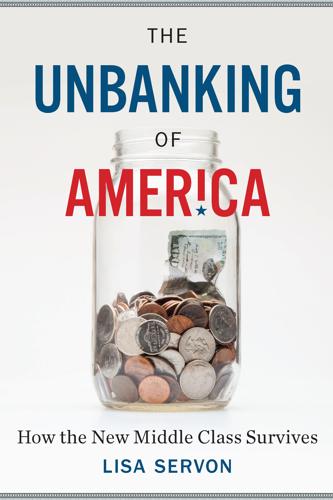
The Unbanking of America: How the New Middle Class Survives
by
Lisa Servon
Published 10 Jan 2017
The Millennial Disruption Index, which identifies which industries are most likely to be transformed by millennials, found banking to be at the highest risk for disruption. The market opportunity is huge. Four out of five millennials carry a supercomputer—also known as a smartphone—everywhere they go. A fast-growing field called fintech, or #fintech for the social-media-savvy, is working around the clock to figure out how to connect to potential customers by way of their phones. Venmo is a free “digital wallet” linked to users’ checking accounts. Once a user signs up, she can use the app to transfer money to other Venmo users immediately and (almost) for free.
…
And it’s responsible for a whole lot of the “friction” that slows the system down. As we saw in Chapter 1, one of the main reasons people use check cashers is because banks make them wait to access their money, whereas check cashers offer instant liquidity—albeit at a price. Chris Larsen, a serial fintech entrepreneur, is betting that his firm, Ripple, can eliminate much of that friction. Like many fintech startups, Ripple is headquartered in San Francisco. Its modern, minimalist-style offices occupy a high floor in a building in the financial district. Larsen, fit and in his midfifties, displays a youthful energy as he describes his firm. Larsen’s vision for Ripple is to create what he calls an “Internet of value” comparable to the Internet of information we’re all familiar with.
…
Mobile phones have already revolutionized financial services in Kenya, where nineteen million (90 percent of adults) of the country’s forty-four million inhabitants manage their money through a system called M-PESA (M for “mobile”; pesa means “money” in Swahili). Others are rethinking the “plumbing” of the financial-services system. There is no reason why it should take several days for the check you deposit to appear as cash in your bank account. It shouldn’t cost so much to send money to relatives overseas. Those in the financial technology, or “fintech,” industry use the term “friction” to describe these inefficiencies, and some entrepreneurs are hell-bent on removing it. This change would lower costs to banks and other financial-services providers, and hopefully they’ll pass these savings on to consumers. The costs of these inefficiencies hit lower-income and disadvantaged groups the hardest, so if savings are passed on to consumers, it would represent a significant gain.
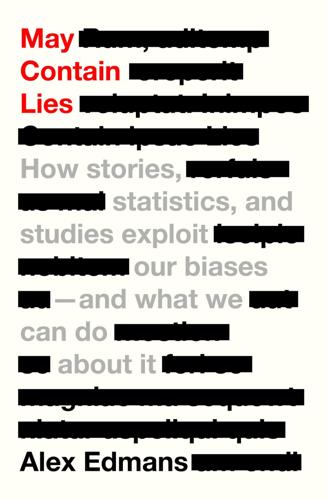
May Contain Lies: How Stories, Statistics, and Studies Exploit Our Biases—And What We Can Do About It
by
Alex Edmans
Published 13 May 2024
In these cases, we can ask whether we can come up with a clear counterexample – the equivalent of ‘checking the facts’ for a statement that can be verified. For Welch’s quote, even the biggest critic of shareholder value could come up with several dumber ideas. Related to superlatives are universal statements. Venture capitalist Angela Strange quipped that ‘Every company will be a fintech company,’ which was catnip to the fintech crowd. But restaurants, theme parks and hardware shops are unlikely to ever become fintech firms. On the other hand, Sir David Attenborough’s warning that climate change is ‘our greatest threat’ is a superlative, but not clearly incorrect. Even though we can think of other threats, such as pandemics and nuclear war, they’re not obviously greater than climate change.
…
An example of the former is ‘Shareholder value is the dumbest idea in the world’; an example of the latter is ‘Every company will be a fintech company.’ 2. If yes, can you come up with a clear counterexample? If you can come up with worse ideas than shareholder value, or companies that might not become fintech firms, the statement is false and so you should put less weight on it. The author won’t have literally meant that every single company will become a fintech company, but the extremism may have been used to mask the lack of actual evidence. 3. Is the statement backed up by evidence, does the evidence exist, and is it publicly available?
…
Even though we can think of other threats, such as pandemics and nuclear war, they’re not obviously greater than climate change. This counterexample check is useful because superlatives prey on black-and-white thinking. We recognize that Strange didn’t literally mean that every single enterprise will become a fintech one but was just conveying the growth of fintech. Yet the fact that she chose to do so with an extreme statement may signal that the actual underpinning is weak. By claiming that ‘shareholder value is the dumbest idea in the world’ rather than ‘shareholder value isn’t always the best goal’, Welch was able to attract huge attention despite providing no evidence.
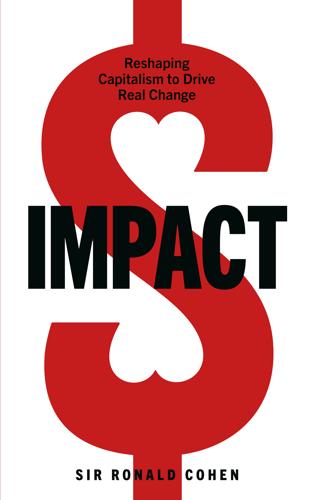
Impact: Reshaping Capitalism to Drive Real Change
by
Ronald Cohen
Published 1 Jul 2020
v=MrpL6SrfgA8 27 https://solve.mit.edu/challenges/teachers-and-educators/solutions/4677 28 https://www.schwabfound.org/awardees/carlos-edmar-pereira 29 https://www.forbes.com/companies/tala/?list=fintech/#64ca4ec84c4d 30 https://www.fastcompany.com/40528750/these-entrepreneurs-are-taking-back-your-credit-score-from-the-big-credit-bureaus 31 Ibid. 32 https://techcrunch.com/2018/04/18/with-loans-of-just-10-this-startup-has-built-a-financial-services-powerhouse-in-emerging-markets/ 33 https://www.forbes.com/companies/tala/?list=fintech/#64ca4ec84c4d 34 https://www.forbes.com/sites/forbestreptalks/2016/08/29/how-tala-mobile-is-using-phone-data-to-revolutionize-microfinance/#1f8f38f82a9f 35 https://www.fastcompany.com/40528750/these-entrepreneurs-are-taking-back-your-credit-score-from-the-big-credit-bureaus and https://www.forbes.com/sites/forbestreptalks/2016/08/29/how-tala-mobile-is-using-phone-data-to-revolutionize-microfinance/#1f8f38f82a9f 36 https://static1.squarespace.com/static/57687604579fb3ab71469c8f/t/5bdc851b21c67c47f9f9a802/1541178690584/Tala+Impact+Report+-+11.18.pdf 37 https://www.forbes.com/sites/forbestreptalks/2016/08/29/how-tala-mobile-is-using-phone-data-to-revolutionize-micro finance/#1f8f38f82a9f 38 https://www.devex.com/news/a-look-at-digital-credit-in-kenya-and-why-access-alone-is-not-enough-93748 39 https://static1.squarespace.com/static/57687604579fb3ab71469c8f/t/5bdc851b21c67c47f9f9a802/1541178690584/Tala+Impact+Report+-+11.18.pdf 40 https://tala-mobile.squarespace.com/series-c-release 41 https://www.reuters.com/article/us-paypal-tala/paypal-backs-emerging-markets-lender-tala-idUSKCN1MW1MT 42 https://medium.com/tala/with-65m-tala-goes-global-q-a-with-shivani-siroya-founder-ceo-and-female-founders-fund-5c4d0699f350 43 https://academic.oup.com/bioscience/article/67/4/386/3016049 44 https://www.theguardian.com/news/2018/mar/26/the-human-microbiome-why-our-microbes-could-be-key-to-our-health 45 https://www.youtube.com/watch?
…
He is eager to scale his business, especially to schools, hospitals and developing countries.28 Lending on the Back of a Cell-Phone While the entrepreneurs leading OrCam, Livox and Zipline are building businesses that can achieve social impact through the use of information technology, Shivani Siroya, the Kenyan founder of Tala, is using fintech and data to provide credit to entrepreneurs who cannot obtain it from conventional banks. The premise of Tala, a mobile lending platform that operates in India, Kenya, Mexico, the Philippines and Tanzania, is that not having a credit history doesn’t mean that a person is not creditworthy. Rather than relying on the usual formal records such as bank statements, Tala makes use of the data that is already sitting on our mobile phones.
…
Tala had raised more than $105 million over three rounds of funding by April 2018,40 with PayPal joining the list of investors that October.41 On the day Tala announced its $65 million third round, Siroya was asked where she saw the company in five years’ time. She responded, ‘We’ll have proved that it’s possible to succeed by doing things differently – that mission and profit are not a zero-sum game, that you can be for both of these things and still win.’42 Fintech is undoubtedly a powerful way for impact entrepreneurs to improve lives. So is biotechnology, which is remastering very traditional fields, such as agriculture, to improve the livelihood of farmers and feed the world. Seeding Innovation to Feed the World With 7.5 billion mouths to feed and the Earth’s climate changing before our eyes, agriculture is arguably the sector on the planet that is capable of delivering the most impact.

MegaThreats: Ten Dangerous Trends That Imperil Our Future, and How to Survive Them
by
Nouriel Roubini
Published 17 Oct 2022
Artificial intelligence, machine learning, big data, 5G, and the Internet of Things can speed transactions, lower costs, and increase reliability. These centralized fintech tools and firms collect and process detailed financial data at blistering speeds without any use of blockchain. Hundreds of firms worldwide have entered the fray with payment systems that handle billions of daily consumer and business-to-business transactions. Companies in the United States and China dominate the industry, but markets have sprouted in other advanced and developing economies. Mobile applications transfer funds and pay bills via Alipay, WeChatPay, M-Pesa, Venmo, PayPal, Square, and other digital providers. Paystack, a Nigerian fintech start-up, sold in December 2020 for $200 million to a US fintech firm.31 Working within the boundaries of a widely accepted monetary system, these nimble companies modernize credit allocation, insurance, capital markets services, and even wealth management.
…
Paystack, a Nigerian fintech start-up, sold in December 2020 for $200 million to a US fintech firm.31 Working within the boundaries of a widely accepted monetary system, these nimble companies modernize credit allocation, insurance, capital markets services, and even wealth management. They may not deliver the libertarian dream of decentralized finance outside the reach of governments, but they cater to consumers with an expanding array of user-friendly products and services. Investor enthusiasm has spawned a growing list of investment vehicles dedicated to fintech, where bullish observers see lofty growth potential in cashless payments. Not everyone welcomes newcomers.
…
Banks trapped in outdated technology face massive costs to convert their legacy systems. If customers bolt for fintech options, money will flow out of traditional banks, draining deposits that underpin lending capacity. By luring money away, disintermediation could put banks out of business. Widespread failures would strain a financial system that barely survived the global financial crisis. A more profound threat to banks may come from the very source of their ability to function. Aware that money has begun departing their jurisdiction for crypto or fintech alternatives, central banks are contemplating the most dramatic innovation yet.

Augmented: Life in the Smart Lane
by
Brett King
Published 5 May 2016
Consequently, we’re likely to see 50 per cent of the household bank names we know today give up their existence to a range of new FinTech providers and technology companies that will own or enable those day-to-day money moments and experiences we’ll have each day. FinTech, HealthTech, Everything Tech The term “FinTech”, like HealthTech, is an amalgam of “finance” and “technology” and has come to represent a group of disruptive technologies, start-ups and innovations that are challenging the traditional financial system. In 2008, US$930 million was invested in FinTech initiatives like Dwolla, StockTwits and other start-ups. By 2013, that figure had ballooned to investments of US$4 billion, and was expected to double in 2014.
…
The single riskiest thing banks do today is have a face-to-face account opening based on a piece of paper with a signature. Put it another way, the single riskiest thing you can do today, the easiest way to be a victim of fraud, is to sign a piece of paper in a financial transaction! Keep in mind that every FinTech company that was founded in the last few years doesn’t use paper or signatures—each of these companies is way ahead of the curve on this. They have got no legacy process to circumvent; they’re just figuring out how to use technology to make it easier for customers. Most physical artefacts of banking will have disappeared for the majority of customers within ten years, not least because 2 billion people who get their first “bank account” on their phone in the next decade will never use a plastic card or chequebook.
…
Aliero and S. S. Ibrahim, “Does Access to Finance Reduce Poverty,” Mediterranean Journal of Social Sciences 3, no. 2 (May 2012): 575–581. 4 The percentage of the population who own a bank account 5 Alliance for Financial Inclusion (AFI) 6 Shwari is the Kiswahili word for “calm”. 7 “Banking on FinTech,” Breaking Banks podcast interview with Mohammed Jama Dalal of CBA, 19 October 2015. 8 Chinese International Capital Corporation (CICC) estimates 9 Starbucks Fourth Quarter Results, 29 October 2015 10 For those sceptical of the “Internet Fridge” example, keep in mind that you can already order groceries from Amazon Echo or Amazon Dash, essentially in the same way a smart fridge could. 11 See “MasterCard’s Cashless Journey” at http://www.mastercardadvisors.com/cashlessjourney/. 12 BTC and XBT are the commonly used abbreviations for bitcoin as a cryptocurrency. 13 As of 1st January 2016, bitnodes.21.co recorded an average of 6,400 nodes on the Bitcoin network, but it has been as high as 10,000 nodes in the past. 14 While the rest of the world calls these current accounts, perhaps we should just now call them digital or mobile spending accounts?

The Autonomous Revolution: Reclaiming the Future We’ve Sold to Machines
by
William Davidow
and
Michael Malone
Published 18 Feb 2020
Snapcash is a payment system designed to allow Snapchat users to “quickly and easily exchange money—such as splitting the bill at a restaurant or paying someone back for concert tickets.”17 Popmoney enables individuals who are online to send money to one another for a fee of $0.95 per transaction.18 Customers of Ally Bank pay nothing to use the service.19 The financial services area is a seething cauldron of innovation, as venture capitalists, entrepreneurs, existing financial firms, and platform providers such as Apple and Google pour billions into financial technology (fintech). There are more than 4,000 fintech start-ups around the world.20 Let’s take a look at some of the other services being offered that are chipping away at the industry: managing assets, managing hedge funds, and transferring money. Managing assets for clients is a big business. Registered investment advisers manage more than $2 trillion in assets.21 These advisers typically charge a commission of 1 percent of the assets they manage.22 Some of them invest clients’ money in actively managed funds that charge additional fees.23 Hedge funds manage another $3 trillion.24 In a fee structure called “two and twenty,” hedge fund managers typically charge clients 2 percent of the assets under management and 20 percent of the capital gains.
…
“Cedar Forest,” Wikipedia, https://en.wikipedia.org/wiki/Cedar_Forest (accessed June 28, 2019). 4. “Gilgamesh and Civilization,” Chamelionfire1, December 17, 2013, https://chameleonfire1.wordpress.com/2013/12/17/gilgamesh-and-civilization/ (accessed June 28, 2019). 5. “Fintech, the Incredible Growth of P2P (Peer to Peer) in China,” Marketing to China, September 22, 2017, https://www.marketingtochina.com/fintech-incredible-growth-p2p-peer-peer-china/ (accessed June 28, 2019). 6. John Maynard Keynes, “Economic Possibilities for Our Grandchildren,” Marxists.org, 1930, https://www.marxists.org/reference/subject/economics/keynes/1930/our-grandchildren.htm (accessed June 28, 2019). 7.
…
In the early 2000s, automated portfolio management software began to be widely used by financial advisers. Today, robo-advisers that manage investment portfolios for consumers are available from companies such as Betterment and Wealthfront for a fraction of the cost of human advisers.3 Scores of other financial applications (Fintech) are available, and countless more are in the development pipeline. When peer-to-peer payment systems are integrated with peer-to-peer lending systems, Internet-only banks, and robo-advisers, the future of credit cards, retail banks, and financial advisers as we know them will be challenged. When much of the financial services industry has been absorbed into virtual space and is operated by automatons, a major structural transformation will have occurred.

Robot Rules: Regulating Artificial Intelligence
by
Jacob Turner
Published 29 Oct 2018
The FCA observed in its impact assessment:The sandbox has enabled a variety of tests from firms with innovative business models that look to address the needs of more vulnerable consumers who may be particularly at risk of financial exclusion. The House of Lords Select Committee on Financial Inclusion published a report in March 2017 which cited the FCA sandbox as a positive way of encouraging fintech solutions to aspects of financial exclusion.51 Promoting the inclusion of the whole of society is essential to creating a sustainable environment for AI regulation and growth in the longer term. As discussed in Chapter 6 at Section 8.1, the FCA FinTech sandbox is now part of a global collaboration of financial regulators—demonstrating that this type of flexible and responsive governance technique presents multiple lessons for future AI regulation. 3.5 Industry Standards Bodies Another type of industry-led regulation comes from standard-setting bodies.
…
Notwithstanding this formal balance between companies and NGOs, it remains to be seen whether the Partnership will present any real challenge to the major technology firms. 47“Regulatory Sandbox”, FCA Website, 14 February 2018, https://www.fca.org.uk/firms/regulatory-sandbox, accessed 1 June 2018. 48“FinTech Regulatory Sandbox”, Moneyart Authority of Singapore Website, 1 September 2017, http://www.mas.gov.sg/Singapore-Financial-Centre/Smart-Financial-Centre/FinTech-Regulatory-Sandbox.aspx, accessed 1 June 2018. 49See Geoff Mulgan, “Anticipatory Regulation: 10 Ways Governments Can Better Keep UP with Fast-Changing Industries”, Nesta Website, 15 May 2017, https://www.nesta.org.uk/blog/anticipatory-regulation-10-ways-governments-can-better-keep-up-with-fast-changing-industries/, accessed 1 June 2018. 50FCA, Regulatory Sandbox Lessons Learned Report, October 2017, para. 4.1, https://www.fca.org.uk/publication/research-and-data/regulatory-sandbox-lessons-learned-report.pdf, accessed 1 June 2018. 51Ibid., para. 4.16. 52Some national standards bodies have promulgated their own AI guidance, such as the British Standards Institute’s BS 8611:2016 on “Robots and robotic devices - Guide to the ethical design and application of robots and robotic systems”.
…
6.1 Balancing Nationalism and Internationalism 6.2 Case Study: ICANN 6.3 Self-Interest and Altruism 6.4 Case Study: Space Law 7 Applying International Law to AI: The Toolbox 7.1 Traditional Structure of Public International Law 7.2 Subsidiarity 7.3 Varying Intensity of Regulation 7.4 Model Laws 7.5 An International Academy for AI Law and Regulation 8 Implementation and Enforcement of AI Laws 8.1 Coordination with National Regulators 8.2 Monitoring and Inspections 8.3 Sanctions for Non-compliance 8.4 Case Study: The EU’s Sanctioning Method for Member States 8.5 Case Study: OECD Guidelines for Multinational Enterprises 9 Conclusions on Building a Regulator 7 Controlling the Creators 1 Creators and Creations 2 A Moral Regulator: The Quest for Legitimacy 2.1 “…of the People, by the People, for the People” 2.2 Case Study: GM Crops and Food Safety 3 Collaborative Lawmaking 3.1 Multidisciplinary Experts 3.2 Stakeholders, Interest Groups and NGOs 3.3 Companies 3.4 Case Study: The FCA FinTech Sandbox 3.5 Industry Standards Bodies 3.6 Case Study: The UK Human Fertilisation and Embryology Authority 3.7 A Minister for AI? 4 Proposed Regulatory Codes 4.1 The Roboethics Roadmap 4.2 The EPSRC and AHRC “Principles of Robotics” 4.3 CERNA Ethics of Robot Research 4.4 Asilomar 2017 Principles 4.5 IEEE Ethically Aligned Design 4.6 Microsoft Principles 4.7 EU Initiatives 4.8 Japanese Initiatives 4.9 Chinese Initiatives 5 Themes and Trends 6 Licensing and Education 6.1 Historic Guilds 6.2 Modern Professions 6.3 A Hippocratic Oath for AI Professionals 6.4 A Global Professional Body 6.5 AI Auditors 6.6 Objections and Responses 7 Regulating the Public: A Driver’s License for AI 7.1 Automatic for the People 7.2 How Might a Public AI License Function?

Radical Technologies: The Design of Everyday Life
by
Adam Greenfield
Published 29 May 2017
The critical vulnerability of all pre-Bitcoin digital cash schemes was that they required parties to a transaction to repose their trust in an intermediary institution, who they’d rely upon to maintain the ledger and update it every time value was passed across the network. That intermediary institution—the “mint,” in fintech jargon—would be the sole arbiter of the legitimacy of a given transaction. This was a hugely undesirable design feature, for a great many reasons. First, the mint would have access to a distressing amount of information about the identity of contracting parties and their patterns of interaction with one another. Especially for those preeminently concerned with safeguarding their privacy —and the fintech subculture is richly supplied with such people—this is prima facie philosophically abrasive. As a consequence, there is tremendous fear that whoever controls the mint would have the power to prevent some transactions from taking place entirely, for whatever arbitrary reasons they chose.5 The notion that the governing body of a mint might take it upon themselves to choke off payments to parties that have fallen into disfavor for political or other reasons isn’t just a theoretical possibility, either.
…
Almost a decade after most of us had committed our music collections to the aether, at a time when millions of us were happily replacing our painstakingly acquired libraries with e-readers, coins and notes were still the most common form of legal tender we encountered in everyday life. Credit-card companies practically howled in frustration at our recalcitrance, releasing a brace of television commercials aimed at shaming consumers for being so retrograde and inconsiderate as to use cash, while futurists working in the field of financial technology (“fintech”) were left to scratch their heads over what went wrong. Perhaps the futurists would have been less puzzled had they attended more closely to what was going on in the world. It’s not such a stretch, after all, to imagine that people might be terrified by the thought of committing their assets to something so intangible, at a time when it felt like the wheels were coming off the entire global economy.
…
It rather elegantly proposed that well-understood cryptographic techniques could be used to resolve, all at once, a cluster of problems that had beset all the electronic cash schemes that came before. At its most abstract, any digital transaction is nothing more than an entry in a database somewhere, specifying the time at which a given amount left one account and was deposited in another. In the context of fintech, such a database is referred to as a “ledger,” a pleasing word that summons to mind a universe of baize desktops and steel-nibbed pens, all watched over by a corps of eyeshaded accountants. However resonant the word itself may be, though, there’s an unavoidable fact about ledgers, and that is that they have to be held by someone in particular.

Reset
by
Ronald J. Deibert
Published 14 Aug 2020
There are also what we might consider hybrid mutations of old- and new-school data surveillance. Firms are employing social media tools to give a new look to well-established business practices, such as loan sharking. Take “FinTech” — it sounds high-tech and futuristic and refers to innovation around the digital delivery of financial services, but in practice FinTech can be about as grimy a tool of commercial exploitation as it gets. In Kenya, mobile banking FinTech apps have proliferated astronomically but have led to widespread debt problems and horrific tales of abuse. California-designed apps like Tala and Branch are given away to Kenyans for free, but then they scan their users’ devices and social media accounts to evaluate their creditworthiness.
…
In International Conference on Detection of Intrusions and Malware, and Vulnerability Assessment (pp. 3-22). Springer, Cham. As noted in Air Canada’s privacy policy: Air Canada. (2019, October 8). Privacy policy. Retrieved January 2019 from https://www.aircanada.com/ca/en/aco/home/legal/privacy-policy.html Tala’s CEO said that “repayment of a loan …”: Aglionby, B. (2016, July 5). “US fintech pioneer’s start-up in Kenya.” Retrieved from https://www.ft.com/content/05e65d04-3c7a-11e6-9f2c-36b487ebd80a What … Keith Breckenridge calls “reputational collateral”: Breckenridge, K. (2018). The failure of the ‘single source of truth about Kenyans’: The NDRS, collateral mysteries and the Safaricom monopoly.
…
African Studies, 78(1), 91–111. http://doi.org/10.1080/00020184.2018.1540515; Johnson, K., Pasquale, F., & Chapman, J. (2019). Artificial intelligence, machine learning, and bias in finance: Toward responsible innovation. Fordham Law Review, 88(2), 499; Demirguc-Kunt, A., Klapper, L., Singer, D., Ansar, S., & Hess, J. (2018). The Global Findex Database 2017: Measuring financial inclusion and the fintech revolution. The World Bank. Zynga … gives its games permission to access … : Levine, S. (2019, May 10). The 5 worst apps for your privacy. Retrieved from https://nordvpn.com/blog/worst-privacy-apps/ The illuminating example of Pokémon Go: Zuboff, S. (2019). The age of surveillance capitalism: The fight for a human future at the new frontier of power.
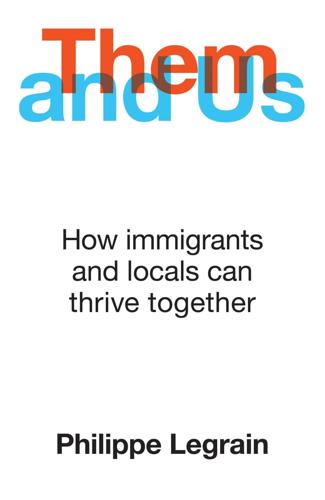
Them and Us: How Immigrants and Locals Can Thrive Together
by
Philippe Legrain
Published 14 Oct 2020
, IZA Discussion Paper 7780, November 2013. https://www.iza.org/en/publications/dp/7780/the-return-of-the-prodigy-son-do-return-migrants-make-better-leaders 60 ‘Khosla Labs’. http://khoslalabs.com/ 61 ‘Veri5 Digital’. https://www.veri5digital.com/ 62 ‘PM Narendra Modi Asks Diaspora To First Develop India’, NDTV, 8 January 2017. https://www.ndtv.com/india-news/pm-modi-asks-diaspora-to-first-develop-india-1646376 63 Leigh Cuen, ‘Refugee-Turned-Fintech Entrepreneur Is Shaking Up The Remittance Market’, International Business Times, 5 September 2017. https://www.ibtimes.com/refugee-turned-fintech-entrepreneur-shaking-remittance-market-2536644 64 Dany Bahar and Hillel Rapoport, ‘Migration, knowledge diffusion and the comparative advantage of nations’, Economic Journal, 128:612, July 2018, pp. F273–305. https://onlinelibrary.wiley.com/doi/abs/10.1111/ecoj.12450 65 William R Kerr, ‘Ethnic scientific communities and international technology diffusion’, Review of Economics and Statistics, 90 (3), 2008, pp. 518–37. https://www.mitpressjournals.org/doi/abs/10.1162/rest.90.3.518?
…
They provide valuable products and services, create jobs and wealth, bolster both local economies and international trade, pay taxes and reduce welfare outlays – and they fuel economic growth, raising everyone’s living standards. All of that adds up to an absolutely huge dynamism dividend. Not just in Silicon Valley ‘F¥€K. Your bank is overcharging you on your overseas money transfers. New time you transfer money, TransferWise.’ Such punchy ads have helped make TransferWise, a fintech start-up that enables people to avoid the rip-off bank charges on foreign currency transactions, famous. The company is the brainchild of two Estonians, Taavet Hinrikus and Kristo Käärmann, who came up with the idea while both working in London. Taavet had worked for Skype in Estonia, so was paid in euros.
…
That is how they how came up with the idea for TransferWise, a crowdsourced currency exchange service. By 2019 it had six million customers worldwide and was helping them to transfer £4 billion a month at a fraction of the previous cost. Unlike many tech start-ups it is profitable, earning £10 million after tax in 2018. And in 2019 it became Europe’s most valuable fintech company, after a funding round gave it a valuation of $3.5 billion (£2.7 billion).11 That makes it one of the rare UK-based unicorns. Taavet Hinrikus and Kristo Käärmann are exceptional but not unique. Nine of the UK’s fourteen unicorns have an immigrant co-founder, including food delivery app Deliveroo and mobile-only bank Monzo.12 More broadly, forty-nine of Britain’s hundred fastest-growing companies have at least one foreign-born founder.
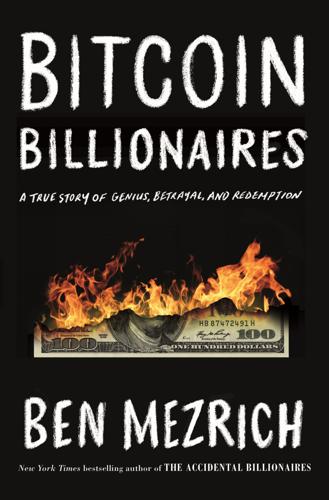
Bitcoin Billionaires: A True Story of Genius, Betrayal, and Redemption
by
Ben Mezrich
Published 20 May 2019
He was usually the more empathetic one, but at that moment, he was having trouble feeling anything less than anger toward their boy wonder CEO. “Train wreck” would have been a grievous understatement to describe the meeting they’d just attended. “Do you know how hard it was to set that up?” Tyler asked. “John is one of the most powerful people in Fintech.” Fintech, a portmanteau of “Financial” and “Technology,” was the fastest-growing sector of venture investing in New York. It essentially included any new technology that had the potential to push the financial world forward, or make it more efficient, such as online banking, robo advisers, statistical consulting, quantitative investing, and of course, blockchain technology.
…
And Tyler was right, John Abercrom, whose office they’d just fled like a circus troupe that had just murdered a member of their audience, and his VC firm, was one of the most influential names in the industry. John and his partners had built a portfolio of investments in over a hundred major companies, many of which were some of the most prominent in the world of Fintech. Through connections and hard legwork, Cameron and his brother had scored a meeting, only to unleash Charlie Shrem—in all his bloodshot and alcohol-drenched glory—on these titans of the industry. Before the meeting, from their email exchanges, it had seemed like John and his partners really understood Bitcoin and were genuinely interested in hearing Charlie’s pitch.
…
The man’s partner, a woman in a denim dress, pointed her cell phone at Cameron, took a quick picture, then kept walking. This type of thing happened almost every day. “I mean,” Charlie continued, “sometimes you guys can be such suits.” Cameron rolled his eyes. Sometimes suits were necessary. Certainly, they were appropriate at a meeting with one of the biggest names in Fintech. “As we’ve told you before,” Tyler said, still moderately controlled, “Roger isn’t the best influence.” Although the twins had avoided meeting with Ver in person in San Jose, they’d been cc’d on numerous emails—and had eventually taken part in multiple hour-long phone conversations with Ver over the past few weeks, discussing BitInstant’s future.
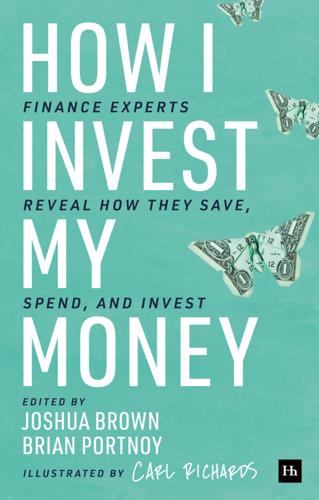
How I Invest My Money: Finance Experts Reveal How They Save, Spend, and Invest
by
Brian Portnoy
and
Joshua Brown
Published 17 Nov 2020
I have a small stake in the social network StockTwits, which keeps me plugged in to what’s going on with the active trader community. I am frequently offered shares in fintech startups with the expectation that I will use my fame to help put the company on the map. I say “no thank you.” I prefer to be involved with companies whose products or services I actually use. There’s no such thing as “free” in this world, and being offered stock in a fintech startup is no different. They may not want my money, but they definitely want my time or my influence or something else that I will not part with. I began casually investing in pre-IPO startups with the EquityZen platform this year.
…
If we don’t need this edge… wonderful. The other reason I do less public market investing is my unique and abundant flow of deals in the private markets. Having started Wallstrip and StockTwits, and invested at the seed stage in Robinhood and eToro, I have a point of view of course, but I also have flow. Fintech founders track me down. I obviously put that vibe out there on my blog. I am easy to find on StockTwits and Twitter, and every day on my blog I share what we are looking for. Knowing what we are looking for is part of that edge that helps me write everyday and live just enough in the future to make a difference.
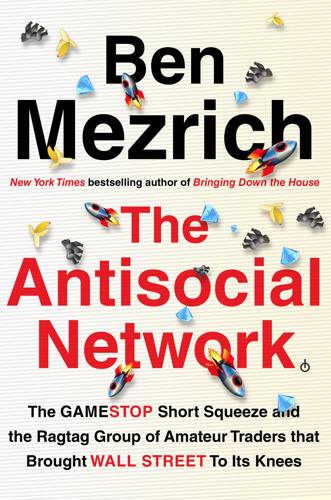
The Antisocial Network: The GameStop Short Squeeze and the Ragtag Group of Amateur Traders That Brought Wall Street to Its Knees
by
Ben Mezrich
Published 6 Sep 2021
Chapter Five Christ, I hate unicorns, Emma Jackson thought to herself as she tried to find a comfortable sitting position on the ultramodern sofa in the center of the vast waiting area of the shiny, absurdly modern, brand-spanking-new Menlo Park headquarters of one of the fastest-growing companies in Silicon Valley. It was a difficult task, considering that the sofa was way too short, which meant Emma’s knees were almost to her shoulders. She’d never thought a piece of furniture could be pretentious before she’d started working with Valley Internet companies, but by her sixth year in the rapidly growing fintech industry, she’d visited enough headquarters to know that anything—and she really meant anything—could be pretentious. Windows could be pretentious—like the enormous, twenty-foot-high ones that doubled as walls, surrounding the open waiting area where she was seated. Ceilings could be pretentious, like the vaulted wooden one above her head, with its exposed beams and deep tones that would have been more suited for a ranch-style country estate or a fancy beach house than a tech company’s lobby.
…
It wasn’t the first time Emma had visited Robinhood to discuss clearing; in fact, when Robinhood had first opened its doors, Emma’s bosses—through one of the companies in their portfolio, Apex Clearing—had helped launch the revolutionary brokerage, taking care of the “boring” side of the business so that the two unicorns could frolic unencumbered by worries of what might be flowing through the roots beneath their hooves. She could still remember that initial meeting, when her bosses—Matt Hulsizer and Jenny Just, brilliant billionaires in their own rights who had built one of the most forward-thinking, if under-the-radar, fintech conglomerates in the world—had tried to explain, in as simple terms as possible, why it was vital that anyone trying to build a business in the banking space had to fundamentally understand clearing. Emma hadn’t even needed to see how quickly Vlad’s eyes had clouded over during that first meeting to know that their words were not hitting home.
…
Lake Mary wasn’t just sleepy; it was delightfully comatose, a wealthy latticework of beautiful homes set around natural reserves, lakes, biking trails, open-air restaurants, boutiques, good school systems, whose main selling point was its proximity to the airport and that it squatted in the shadow of the biggest tourist destination on earth. That shadow had mouse ears, but even so, Lake Mary was a wonderful place to raise a family, and a fairly odd place to put the beating heart of the hottest, most disruptive company in fintech. Of course, the decision to open a satellite office among the palm trees and alligator-infested waterways of Northern Florida had much to do with the complex, cost-benefit calculations that went along with rapid, breakneck expansion; Robinhood was growing so fast, and hiring so many, it made sense that they would expand, geographically, well beyond Menlo Park.
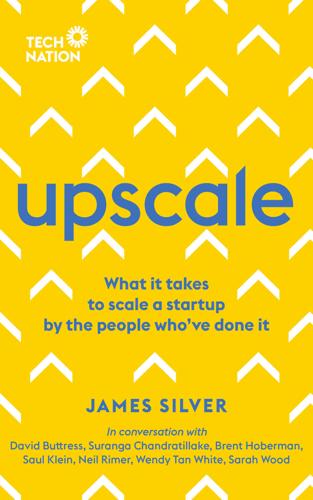
Upscale: What It Takes to Scale a Startup. By the People Who've Done It.
by
James Silver
Published 15 Nov 2018
Founded in 2011 (originally as Tech City), Tech Nation’s programmes cater for businesses at all stages of company growth, from initial idea and early stages (The Digital Business Academy, Founders’ Network and Rising Stars), right through to the mid and late stages (Upscale and Future Fifty). It also recently launched its first sector-specific programme, covering FinTech, while Cyber, Deep Tech and Blockchain will be launching shortly. www.technation.io Twitter@TechNation First published in 2018 by Tech Nation Copyright © James Silver 2018 The moral right of James Silver to be identified as the author of this work has been asserted in accordance with the Copyright, Designs and Patents Act 1988.
…
Whether you want it to be a $100m, $1bn or $10bn business, you’re still going to go through a base camp to get there - and that’s us,’ she says, before conceding: ‘But trying to get that angle across in our brand is very difficult.’ Reshma Sohoni co-founded Seedcamp in 2007 with a strong belief that European entrepreneurs have the power to compete on a global scale. A decade later, Seedcamp has invested in over 250 companies, including the likes of fintech unicorn TransferWise, Revolut and UiPath. Reshma is passionate about the intersection of business and technology, and has degrees in Engineering and Business from UPenn and M&T as well as an MBA from INSEAD. She describes starting Seedcamp as a ’once-in-a-lifetime opportunity and one that I jumped into with a strong desire to help the European founder realise global success’.
…
Grol - who previously worked in product and growth leadership roles on four billion-user products: Gmail, Google Maps, Facebook and Facebook Messenger - says that for every sector, excluding maybe some sorts of travel businesses (‘because they are their own beast’), the number-one thing is user retention. ‘Whether it’s SaaS businesses, marketplaces, consumer, games, fintech, I would say the main thing for those businesses would probably be keeping a user once you have got them; retention is everything.’ The problem is, while most founders focus hard on acquisition, fewer devote the same energy to retention, he says. ‘[Typically] they’ll think about page views, and clicks on their sign-up button.
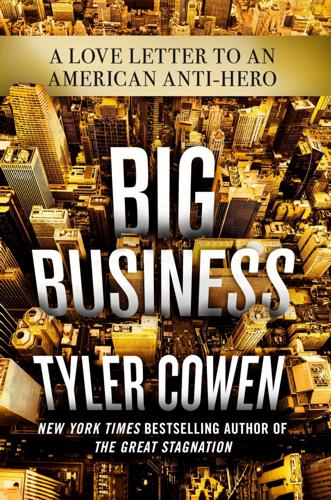
Big Business: A Love Letter to an American Anti-Hero
by
Tyler Cowen
Published 8 Apr 2019
The future of the Apple Watch remains uncertain, but at the very least it is a major achievement along the path of developing higher-quality and more practical internet-connected wearables; its millions of users already find it a convenient way to receive messages and track and measure certain aspects of their behavior. Apple Pay is a major player in fintech, and millions of people use it to pay for goods and services with a simple swipe at a terminal. Even if that doesn’t prove to be the winning technology, it is a stepping-stone for the later improvements of others. Or look at Amazon. The company started off selling books but moved to many different sectors of retail.
…
That is about equal to the growth in the size of insurance and less than the growth in the size of the securities industry, two other components of financial sector growth. Some of that growth was due to the growth in mortgage loans and bank origination fees and thus was connected rather directly to the financial crisis. Nonetheless, that problem of excess credit growth was far from the dominant source of financial sector growth over those years.28 WHITHER FINTECH? One of the simplest questions asked about finance is “What has it done for me lately?” What are the innovations of note since, say, the ATM that have improved the life of the average person? Here I’m not talking about abstractions such as “dark matter” but rather actual stuff—devices or institutions that we use every day to make our lives more convenient.
…
We get the world’s best venture capital markets, we get to be the global center for tech, we get to profit by hundreds of billions by living in the world’s largest and most successful hedge fund, and we get overall a more dynamic economy due to better and more rapid reallocation of capital. Soon enough, fintech may do more for us yet. Again, we’re turning lower-return assets into higher-return assets. To be sure, none of those benefits are free lunches, but if there is one thing that is underrated, it is how much banks and the financial sector do for the American economy, and indeed for the world as a whole.
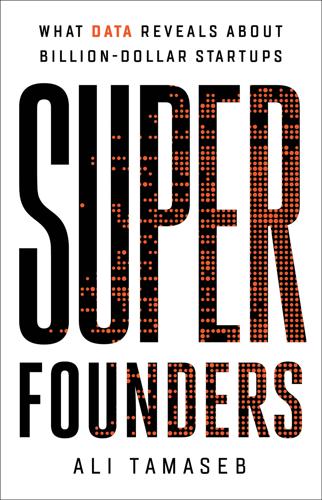
Super Founders: What Data Reveals About Billion-Dollar Startups
by
Ali Tamaseb
Published 14 Sep 2021
For example, one might assume that New York is more likely to produce billion-dollar fintech (financial technology) startups, due to the fact that it is a global financial hub. But actually, New York produced more infrastructure software billion-dollar companies than it did fintech companies. It is also home to Flatiron Health and Oscar Health, companies in the healthcare and insurance industries. Similarly, whereas Boston is perceived as a hub for biotech and pharma, it has produced billion-dollar startups across many other categories as well, including infrastructure software, fintech, e-commerce, and security. It’s important to understand that there are generally reasons why these companies succeeded in the locations where they were founded.
…
As first-time founders, we were itching for an exit and some money—it’s not a pretty thing to say, but every founder thinks about it. We sold the payments company, and it changed our lives. We arrived at Stanford in September of 2016, which had been my dream. But three months in, we didn’t really want to study anymore. We wanted to start another company. We were tired of payments and fintech, so we tried to do something on the bleeding edge. We got into Y Combinator with an idea for a virtual reality company, but after a few months we realized we had no clue what we were doing. We decided to pivot back to payments because that was what we knew a lot about. At Y Combinator, there were a bunch of startups that couldn’t get credit cards, and it gave us the idea of building a corporate credit card for startups.

The Future Is Faster Than You Think: How Converging Technologies Are Transforming Business, Industries, and Our Lives
by
Peter H. Diamandis
and
Steven Kotler
Published 28 Jan 2020
Over the next decade, 4 billion people, the rising billions, will gain access to the internet. Since all of them will need basic banking services, the opportunity is massive. But thanks to converging technology, the downstream result of Nick Hughes’s long shot is that nearly everyone but banks will end up capitalizing on it. The AI Invasion “Fintech” is the term for the convergence of technology and financial services. First colonized by networks and apps, it was then radicalized by AI and blockchain, and now serves as a global wealth redistribution mechanism. Think Robin Hood with a smartphone, taking cash away from banks and putting it back into the hands of customers.
…
By matching customers who have, say, pesos they want to turn into dollars with customers who want to change dollars into pesos, TransferWise is using a modified dating app to take on the entire foreign currency exchange market. In fact, because it’s easier to match people looking to exchange currency than it is to match people looking to date, the company reached a billion-dollar valuation in under five years. Built on networks and apps, TransferWise is also an example of fintech’s colonization wave. The radicalized wave arose when AI entered the picture. Consider the age-old practice of “Buddy, can I borrow a dollar,” otherwise known as peer-to-peer lending. Traditionally, this is a high-risk practice—which is to say, Buddy rarely gets his dollar back. This problem only gets worse with scale.
…
$300 billion: Massolution/Crowdsourcing.org, 2015 CF Crowdfunding Industry Report. See: http://reports.crowdsourcing.org/index.php?route=product/product&product_id=54. crowdfunding as “potentially the most disruptive of all the new models of finance.”: The Future of Finance, the Socialization of Finance (Goldman Sachs Report, March 2015). See: https://www.planet-fintech.com/downloads/The-future-of-Finance-the-Socialization-of-Finance-Golman-Sachs-march-2015_t18796.html. $8.1 billion in 1995 to: See: https://www.nsf.gov/statistics/issuebrf/sib99303.htm#nsb. $61.4 billion in 2016: PwC | CB Insights MoneyTree™ Report Q4 2018, p. 6, found here: https://www.pwc.com/us/en/moneytree-report/moneytree-report-q4-2018.pdf.
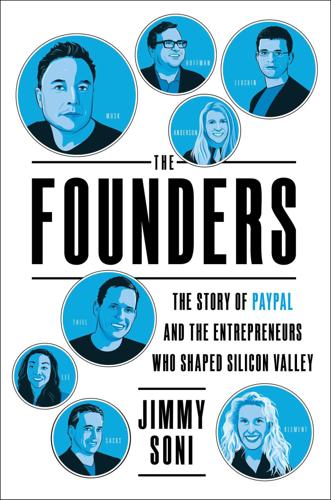
The Founders: The Story of Paypal and the Entrepreneurs Who Shaped Silicon Valley
by
Jimmy Soni
Published 22 Feb 2022
Mark Woolway called the process a “façade.” * * * One candidate made it through the farce. Only in his mid-thirties, David Solo had accumulated a lifetime of financial services experience. After earning electrical engineering and computer science degrees from MIT, Solo worked at O’Connor & Associates, a fintech firm that pioneered derivatives trading technology. He made partner by twenty-six and oversaw a merger between O’Connor and Swiss Bank in his early thirties. “He was a brilliant math guy, understood the whole thing, and he would have fit the spec,” Thiel said. Even before vying for the CEO job, Solo had crossed paths with X.com.
…
He recalled an infamous email he had written to Musk bearing the subject line: “Fraud is love,” a sardonic inside joke. “In retrospect,” he offered, “it was more than a joke. I’ve actually really gotten to like [fraud fighting.] It’s the closest thing you can get to cloak and dagger. I’m a closeted, fanatic reader of spy novels, and this is the closest you can get to spy craft if you’re a fintech nerd.” The fraud team also served as a reminder that for all of PayPal’s advancements in algorithmic and automated fraud fighting, technology companies still needed flesh-and-blood human beings to deliver last-mile protection. “Fraud catching is a combination of people, machine learning, and automated rules,” Cervantes noted.
…
“These guys across the table… are like, ‘We’ve seen this before. We’ve got burned by this. And we’re not buying into this nonsense again,’ ” Selby remembered. As a business, PayPal didn’t slot neatly into investors’ familiar categories. “These guys really hadn’t seen our type of business before.… Do we go into the fintech bucket? Do we go in the tech bucket? Do we go into the services bucket? As a hybrid it was difficult to understand which bucket to go into, and these guys were very rigid,” he recalled. Another concern surrounded the team’s relative youth. As a part of the S-1 filing, companies are required to document the names and ages of their executive teams.
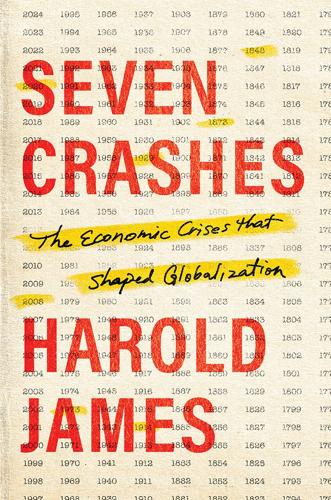
Seven Crashes: The Economic Crises That Shaped Globalization
by
Harold James
Published 15 Jan 2023
As with the nineteenth-century railway routes, it was not at the outset obvious which new payments systems would be profitable and which would simply be white elephants sinking investors’ money in the sand. States and investors needed to allow multiple experiments with how payments could be reconstituted. The unknowability of eventual outcomes is very clear in the story of an iconic firm at the heart of the world’s transition to fintech. A crucial part of its success depended on relations with very different kinds of government. SoftBank was founded in Tokyo in September 1981 by twenty-four-year-old Masayoshi Son, the son of Korean immigrants who graduated from the University of California at Berkeley with degrees in computer science and economics.
…
Now it is necessary to start learning.”76 Alibaba was fined a large amount for market abuse. In April 2021, Ant Financial Group had a $2.8 billion antitrust penalty imposed. The struggle between entrepreneur and planning authorities was a battle for control of data: the campaign against Ma and Ant Financial was interpreted as a push to force private fintech groups to hand over large amounts of big data to the public-sector banks. China’s private tech “BAT” firms—Baidu, Alibaba, and Tencent—received about 67 percent of digital ad revenues in 2018, up from 61 percent in 2015, and accounted for about half of venture-capital investment in China.77 By the time of the pandemic, it was widely assumed that the power of the tech titans was on the retreat, broken by a trade war between China and the United States that threatened the central connection of ideas from California to Hangzhou and Shanghai.
…
In 2006 it moved into lending by buying the online bank XCOM and renamed itself Wirecard Bank, with a license from the payments giants Visa and Mastercard. From 2011 to 2014 the company raised €500 million from shareholders and bought up a wide range of payments companies across Asia, from a base in Singapore. Even as it was unraveling in early 2020, Wirecard concluded an agreement to be preferred payments processor for Visa’s Fintech Fast Track Program in the Middle East.79 In 2017 Ernst and Young (EY) gave the company a clean audit, reported cash generation increased dramatically, and investors’ enthusiasm was fired up. The shares more than doubled in price. The group announced that it would manage Citibank’s payments-processing operations across eleven countries in Asia.
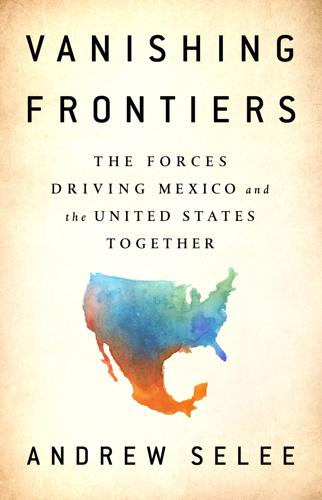
Vanishing Frontiers: The Forces Driving Mexico and the United States Together
by
Andrew Selee
Published 4 Jun 2018
The lab develops new technologies to help clients manage their money more responsibly, in hopes of providing solutions to improve customers’ lives. BanRegio also invests in four venture capital funds that support start-ups in fintech. They hope to learn from others in the innovation ecosystem by participating actively in it. By engaging with start-ups through the funds, he says, “we started to learn what people were thinking in the ecosystem of fintech.” He recognizes that traditional banks have only been able to get so far in reaching potential customers in Mexico. “The start-ups are appropriating the last mile” of financial access, he says.
…
A legal change in 2009 also allowed Mexico’s private pension funds to invest a small percentage of their holdings in higher-risk investments, which has provided a new, though still incipient, source of funding for the venture capital funds. An even more significant funding flow has come from banks, which have also begun investing heavily in start-ups, realizing that much of the innovation in financial technology—fintech, as it’s often called—may help them reach potential customers among the majority of Mexicans who currently lack a bank account. Most of Mexico’s major banks have some investment in venture capital funds and often host their own innovation labs where aspiring innovators can work. A visit to the headquarters of BanRegio, a midsized bank in Monterrey known for its loans to small and medium-sized businesses, feels like a field trip to a hip coworking space in Silicon Valley.
…
See agricultural industry fast-food industry, 261, 262 fears, 21, 22, 29, 185, 279 Federal Bureau of Investigation (FBI), 153–154, 174–175 Federal Electricity Commission (CFE), 118, 119, 120, 123, 126, 127 Federal Police, 170, 171 Félix, Arellano, 136, 137 Femsa, 86–87 fentanyl, 179 Fernández, José Antonio, 86–87 Fernandez, Marissa, 247, 252 film festivals, 6, 229, 233, 238, 240, 241, 242, 243 film industry awards, 229, 230–231, 232, 233, 254, 271 competition in, 237–238 evolution in, 234–239 global/international, 234, 237, 238, 244 golden age in, 234–235, 237 government-backed production in, 234–235 market in, 224–225, 226, 227–228 privatization of, 235–239 public-private partnerships involving, 229–230, 232, 237 social sensibility in, promotion of, 239–240, 241 success in, key to, 238–239 talent sourced for, 226, 229, 230, 232, 236, 237, 239 ties in, 6, 23 viability in, 238 See also Hollywood production/studios; independent filmmaking film institutes, 228, 229 financial crisis (2008) beginnings of, effect of, 190 recession resulting from, 79, 195 recovery from, 97 financial sector, 77, 110–111, 176 fintech, 110, 111 Fisk, Dan, 147, 148 Flint, Michigan, 56, 89 Flores, Adal, 99, 100–101, 106, 107 fluidity, 71, 72, 135, 281 food industry, 4–5, 9, 76, 79–82, 84–85, 90, 185 See also agricultural industry; restaurant industry football leagues, 246–248, 272 Ford, 56, 57, 58, 77, 271 Fortes, Elena, 240 Fortune 50 companies, 94 Fortune 100 companies, 86 Fox, Vincente, 114, 116, 133, 208 Fox Deportes, 247 Franco, Michel, 233, 242 free trade agreement, negotiating, 51–52 See also North American Free Trade Agreement Frida (film), 232 Fuentes-Berain, Rossana, 77, 78, 278–279 Fukunaga, Cary, 241 Fukuyama, Francis, 41 Fund of Funds, 109 Fusion, 255 fusion center domestic, 170 international, 169–170, 171, 172–174, 175, 178 See also specific agencies future, direction of the, 283 Galicot, José, 40–41, 42, 43, 44, 46, 47 gang violence decline in, 31, 41, 150, 168, 177 hotbed of, 19, 180 innocent victims of, 165, 166, 180 prevalent, 31, 138, 166 spike in, 19, 139, 147, 161, 166, 172, 179, 180 spread of, 142, 150 Garcetti, Eric, 266 Garcia, Jeff, 246 García Bernal, Gael, 232, 237, 239–240, 243 Garza, Armando, 113, 117 Garza, Tony, 144, 146, 148, 215 Garza Sada, Eugenio, 86, 87 Gates Foundation, 102 gays/lesbians, safe zone for, 197 General Motors, 56 generational differences, 248, 250, 275, 276 generational transition in leadership, 85–86, 88 George Lopez (TV show), 253 George Weston, 79 Germany, 5, 50, 99, 104 Giorguli, Silvia, 207 glass industry, 76 Global Agreement on Tariffs and Trade, 63, 78 global debt crisis, 51 global economy, 18, 59 global trade, concerns about, shorthand for, 21 González, Vidal, 106 González Iñárritú, Alejandro, 230, 231–232, 237, 271 Gore, Al, 41 government.

The Truth Machine: The Blockchain and the Future of Everything
by
Paul Vigna
and
Michael J. Casey
Published 27 Feb 2018
Similarly, the UK Financial Conduct Authority’s “sandbox” strategy, which sets a relatively lightweight regulatory environment for startups to develop and test new fintech products, has been applauded by technologists as a way to drive innovation. It’s also smart for Britain’s economy: after Brexit, the city of London’s all-important financial district needs to make sure it can stay ahead of New York and competing money hubs in Europe. Establishing itself as a fintech leader offers the best bet at sustaining dominance. Under pre-Brexit prime minister David Cameron, the UK government even saw fit to dedicate £10 million to digital currency research.
…
When Stephan Tual, the founder of Slock.it: Paul Vigna, “Chiefless Company Rakes in More Than $100 Million,” The Wall Street Journal, May 16, 2016, https://www.wsj.com/articles/chiefless-company-rakes-in-more-than-100-million-1463399393. in November 2016, when a site called Golem: Roger Aitken, “Fintech Golem’s ‘Airbnb’ For Computing Crowdsale Scores $8.6M in Minutes,” Forbes, November 12, 2016, https://www.forbes.com/sites/rogeraitken/2016/11/12/fintech-golems-airbnb-for-computing-crowdsale-scores-8-6m-in-minutes/#324579c73583. An initial high-water mark came: Alyssa Hertig, “ICO Insanity? $300 Million Gnosis Valuation Sparks Market Reaction,” CoinDesk, April 25, 2017, https://www.coindesk.com/ethereum-ico-irrationality-300-million-gnosis-valuation-sparks-market-concerns/.
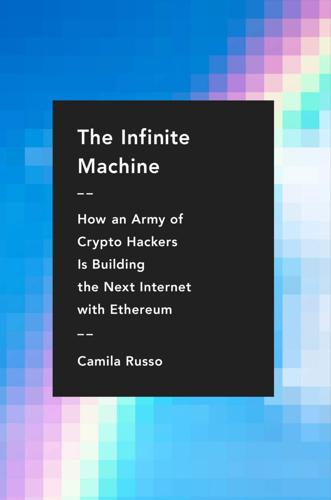
The Infinite Machine: How an Army of Crypto-Hackers Is Building the Next Internet With Ethereum
by
Camila Russo
Published 13 Jul 2020
Three board members were also hired. The middle-aged, corporate men didn’t exactly mesh with the typical Ethereum developer. Lars Klawitter held a high-level job at Rolls-Royce, Vadim David Levitin ran business development for Fortune 500 companies, and Wayne Hennessy-Barrett was founder and CEO of 4G Capital, a mobile money fintech business based in Kenya. Kelley had worked with art nonprofits in San Francisco before moving to Berlin and started work at Ethereum in February 2015 with the goal of creating standards and bylaws for the foundation. But she realized very early on that there were more urgent matters. Cash was drying up.
…
Instead, he was starting 2017 in the best way he could imagine, his snowboard pressing into virgin snow and his arms holding on to a kite pulling him forward and sometimes over the ground. He had gone home to Britain for the holidays, then spent some time in the French backcountry slopes kiteboarding, and now he was traversing the Norwegian tundra. He had just started a fintech company with two cofounders, which was able to sustain his addiction to kitesurfing, but it had been a rocky journey for him to get there. After getting a one-year accounting degree, he proceeded to kitesurf wherever the waves called, from Indonesia to South Africa, with the money he made selling hoodies online.
…
He parted ways when he couldn’t make his next credit card payment. He never thought anybody owed him anything, but when Ethereum launched, he was surprised to get a slice of the contributors’ share, which added to the ether he bought at the crowdsale. After doing some freelance web design for a while, he had cashed out some of his ether to cofound a fintech called Balance, but he still had a big chunk left when he left for his snowbound vacation. As he was racing down the slopes, the price of ether had started to go in the opposite direction. About 95 percent of his assets were in the digital currency. That meant every small tick up in the price had a huge impact on him.
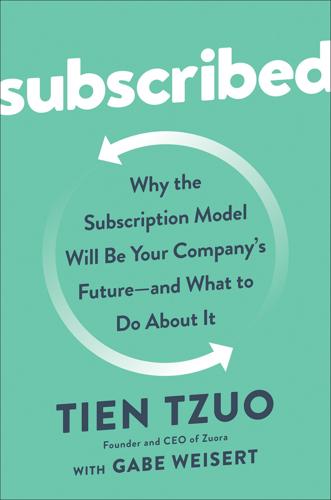
Subscribed: Why the Subscription Model Will Be Your Company's Future - and What to Do About It
by
Tien Tzuo
and
Gabe Weisert
Published 4 Jun 2018
Not only are renewables playing a far bigger role “All Change: New Business Models,” The Economist, January 15, 2015, www.economist.com/news/special-report/21639019-power-industrys-main-concern-has-always-been-supply-now-it-learning-manage. only 7 percent of bank credit products Karen Mills and Brayden McCarthy, “How Banks Can Compete Against an Army of Fintech Startups,” Harvard Business Review, April 2017, https://hbr.org/2017/04/how-banks-can-compete-against-an-army-of-fintech-startups. CHAPTER 9: THAT WTF MOMENT you have to think about the long term Emanuel Maiberg, “Final Fantasy Producer Says Subscriptions Still Make Sense for MMOs,” GameSpot, March 30, 2014, www.gamespot.com/articles/final-fantasy-producer-says-subscriptions-still-make-sense-for-mmos/1100-6418646.
…
Whether you’re a small business or an individual, you’re free to look up your account and swap some money around online, but the basic mechanics of accepting deposits, raising capital, making loans, or buying securities have stayed firmly inside the vaults. According to HBR, a recent analysis by Bain and SAP found that only 7 percent of bank credit products could be handled digitally from end to end. That’s all about to change. New fintech services are dispersing those mechanics in all sorts of interesting ways. If the health care industry is moving to your wrist, the financial sector is moving to your phone. Wealthfront uses algorithms to help you invest responsibly, save for retirement, or contribute to their own 529 college savings plan.

The Smartphone Society
by
Nicole Aschoff
Anindya Ghose, a professor of business at New York University, breathlessly describes turning one’s smartphone into a “pocket butler”: “If you, the consumer, let marketers learn your habits and read your mind, you will let that smartphone become your concierge and save you time.”64 In this shopper’s paradise, a combination of beacons, geocoding, Wi-Fi, RFID, near-field communication, and other digital identification and communication technologies will tell companies where we are at all times, and leave us open for suggestions and offers. iBeacon and Google’s Eddystone for Android phones show that Ghose’s fantasy is fast becoming a reality. Fintech companies—businesses that use modern technology and algorithms to compete with traditional financial service providers—are equally enthusiastic about capitalizing on the data we continuously generate with our smartphones. Admiral, a small UK start-up, hoped to mine Facebook data to create a new formula for generating credit scores.
…
Specifically it wanted to read people’s Facebook posts and on the basis of the wording determine what people’s credit scores should be. “The use of exclamation marks, for example, could suggest that the writer is overconfident. Lists, on the other hand, could signify a more organized, cautious person.” Sounds kooky, but Admiral isn’t alone. Kreditech, a fintech start-up in Hamburg, Germany, caters to people with little or no credit history, offering them loans, checking accounts, and so forth based on applicants’ voluntarily submitted tweets and Facebook posts.65 Facebook shut down Admiral’s party before it could get started, but not because it thought it was a bad idea.
…
“Abrams, Jenna,” 109 ACLU (American Civil Liberties Union), 21, 22, 96, 148–49, 153, 176n28 Acxiom, 72, 77 addiction to social media, 65–69 Admiral, 78, 79 Adolfsson, Martin, 84 AdSense, 52 Advanced Research Projects Agency Network (ARPANET), 80 advertising: data collection and, 76–77, 83–84; on Facebook, 47–48; on Google, 52; political, 149 AdWords, 52 Afghanistan, politics in, 95–96 age discrimination, 149 AI Now, 129, 157 Airbnb, 42, 119, 120, 148 al-Abed, Bana, 90 al-Abed, Fatemah, 90 Aldridge, Rasheen, 91 algorithm(s): for consumer categories, 77; in dystopian future, 129–30, 131; in politics, 109–10; recommender, 67; search, 51–52, 53 algorithmic accountability, 151, 157–59 “algorithmic management,” 32–34 Alibaba, 4, 42 Allard, LaDonna Brave Bull, 104 aloneness, 7 Alphabet, 41, 55, 76, 122, 150 Alpha Go Zero program, 122 alter-globalization activists, 91 Amazon: acquisitions by, 41; and CIA, 81; in Europe, 150; marketplace model of, 150; as monopoly, 53–54; and new capitalism, 118–19; as new titan, 38–41, 44, 45; power of, 54–55; Rekognition software of, 149; tax evasion by, 49; warehouse workers at, 31–32, 33, 34; working conditions at, 46 Amazon Shopping, 30 Amazon Web Services (AWS), 41 American Academy of Pediatrics, 9 American Association of People with Disabilities, 55 American Civil Liberties Union (ACLU), 21, 22, 96, 148–49, 153, 176n28 American Dream, 120–21 American Library Association, 55 amplification, 91 analog networks, in cognitive mapping, 143 Android operating system, 39, 41, 53, 69, 70–71, 72 “angel investor,” 120 Ant Financial, 42 antidiscrimination laws, 149 antitrust laws and practices, 43–44, 52–53, 55, 150 AOL, data collection from, 81 app(s): top ten, 38 “app dashboard,” 69 app jobs, 30–34, 35, 137 Apple: data collection from, 81; in Europe, 150; low-paid workers at, 147; as new titan, 42; refusal of “right to repair” by, 155; supply chain of, 28–29; tax evasion by, 49–50; working conditions at, 46 appropriation, frontiers of, 73–76 appwashing, 34, 35, 146 “Arab Spring,” 97 Ardern, Jacinda, 93 ARPANET (Advanced Research Projects Agency Network), 80 artificial intelligence, 121–22, 123, 130 aspirational story, 120 assembly workers, 28–29 Athena, 42 AT&T, 29, 42, 43, 71 attention, 7 Audible, 41 Australia, justice in, 21 automation, 128, 131 automobiles, analogy between smartphones and, 2–3, 161, 162 autonomy, 117, 124 AWS (Amazon Web Services), 41 bad behavior, 138–39 Baidu, 42 Bannon, Steve, 105 Barlow, John Perry, 124 Bellini, Eevie, 24 Berners-Lee, Tim, 40 Beyoncé, 61, 107 Bezos, Jeff, 38, 44, 49, 54, 118–19 Bharatiya Janata Party (India), 93 big data, 76, 83–84, 145 Binh, Huang Duc, 95 black(s): police violence against, 17–23, 35, 169n6, 169n13 Blackberry, 6 “black-box algorithms,” 151 Black Lives Matter (BLM), 89–90, 100–102, 104, 107, 111 Blades, Joan, 91 blockchains, 124 body cameras worn by police, 22 book publishers, 172n40 boredom, 11 bots, 109 Boyd, Wes, 91 boyfriend, invisible, 24 Boyle, Susan, 63 Brazil, politics in, 97 Brin, Sergei, 38, 41, 54, 119, 148 Brown, Michael, Jr., 22, 89–90, 91, 101–2 Buffett, Warren, 41 Bumble, 23, 91 Bumblehive, 81 Burke, Tarana, 108 Bush, George W., 99 Calico, 41 California Consumer Privacy Act, 150 “CamperForce,” 31–32 Canales, Christian, 21 cancer, 7 candidates, social media use by, 103–5 Capital G, 41 capitalism: chameleonesque quality of, 116–17; crony, 105; and frontiers, 72–79; maps of, 143–44; neoliberal, 69, 102, 112–13, 117–18, 144–45; smartphones as embodiment of, 161–62; spirit of, 115–18; surveillance, 8 capitalist frontiers, government and, 80–81 carbon footprint, 82, 175n77 Carnegie, Andrew, 37, 54, 57 Castile, Philando, 20, 35 CatchLA, 62 caveats, 14–15 celebrities, in digital movements, 91 celebrity culture, 64–65 censorship, 95 Center for American Progress, 55 Center for Responsive Politics, 56 Central Intelligence Agency (CIA), 81, 95, 96, 138, 175n74 centrism, 112 Chadaga, Smitha, 89 change agent, 12 Chan, Priscilla, 56 Chan Zuckerberg Initiative (CZI), 56 Charles, Ashley “Dotty,” 109 Charlottesville, Virginia, 106–7, 111 Chesky, Brian, 120 children, 8, 9, 11–12, 84 China, 4, 42, 94–95 Chronicle, 41 CIA (Central Intelligence Agency), 81, 95, 96, 138, 175n74 Cienfuegos, Joaquin, 20–21 City of the Future, 124 Clinton, Bill, 43, 91, 99 Clinton, Hillary, 50, 107 Clooney, George, 91 “the cloud,” 82 cloud storage facility, 81 coercive relationships, 137–38, 152–54 cognitive maps and mapping, 143–59; algorithmic accountability in, 151; antidiscrimination laws in, 149; coercive and unjust relationships in, 152–54; defined, 143; digital and analog networks in, 143; digital commons in, 156–59; ecological externalities in, 145; economic implications in, 151–52; internet access for poor and rural communities in, 149–50; lacunae in, 145; low-paying jobs in, 146–49, 153–54; monopoly in, 150; political advertising in, 149; power in, 145; and principles of smartphone use, 152–59; privacy in, 150–51; selfish or immoral behavior in, 154–56; sociotechnical layers of, 145 collateral damage, 96 collective action, 155–56 Comcast, 29, 71 comic books, 11 commodification of private sphere, 144 Communications and Decency Act, 51 communities, on-line, 64 community broadband initiative, 149–50 Community Legal Services, 171–72n32 Compass Transportation, 147 Computer and Communications Industry Association, 55 “connected presence,” 6 connection, 44, 63–64, 143, 162 connectivity, 122 Connolly, Mike, 94 consumer(s): vs. producers, 28–29 consumer categories, 77 consumer scores, 77–78 consumption, 83, 138–39 content algorithms, 51–52 content creation, 74–79 contingent workers, 30 convenience, 29–30, 35 Cooperation Jackson, 155 cop-watch groups, 20–21 “The Counted,” 19, 169n6 “creative monopoly,” 44 creativity, 117 credit scores, 78–79 creepin”, 65 critiques, 7–8 crony capitalism, 105 CrushTime, 24 Cruz, Ted, 92 “Cuban Twitter,” 95 Cucalon, Celia, 48 Cullors, Patrisse, 100–102 cultural capital, 62 “custom breathers,” 69 “customer lifetime value score,” 78 “cyberspace,” 82 CZI (Chan Zuckerberg Initiative), 56 Dakota Access Pipeline Protests, 103–4, 110 dashboard apps, 132 data brokers, 72, 77 data centers, energy use by, 82 data collection, 70–72, 83–84, 137, 150–51, 156–59 data mining, 76–79 data ownership, 135–36 “data smog,” 72 Data & Society, 151, 179n20 data vendors, 76 datification, 156–57, 161 dating apps, 23–27, 35 decentralization, 101–2, 120 decommodification, 156–57 DeepMind, 41, 79, 122, 157 Deliveroo, 32–33, 153 Department of Homeland Security, 149 Desai, Bhairavi, 146 Descartes, René, 67 Diallo, Amadou, 19 Diapers.com, 41 dick pics, 25 Dick’s Sporting Goods, 91 digital-analog political model, 104, 110–12, 145, 162 digital commons, 139–41, 156–59 digital divide, 28–29, 35 “digital exclusion,” 29 digital frontier, limits of, 82 digital justice, 17–23, 152, 157, 169n6, 169n13 digital networks, 143 digital platforms, 44 “digital redlining,” 29 “digital well-being,” 69 disconnection, 132–33 discrimination in housing, 47–48 divides, 17–36; built-in, 28–34, 35; related to justice, 17–23, 169n6, 169n13; related to sexuality, 23–27, 35 division of labor, 74–75 Dobbs, Tammy, 129 documentation, 62 domestic violence, 25 DoorDash, 33–34, 146–47 dopamine driven feedback loops, 67 double standard, 25–27, 35 drone warfare, 95 “dual economy,” 12–13 dumbness, 7, 9 “dumb phone,” 1, 8, 132, 167n15 dystopian future, 125–26, 128–30, 131 eBay, 147, 148 Echo Look device, 84 ecological externalities, 145 ecological limit of digital frontier, 82–83, 175n77 economic crisis (2008), 98–100, 117–18 economic divide, 13–14 economic implications, in cognitive mapping, 151–52 economic nationalism, 105 “ecosystems,” 40 Eddystone, 78 education, 13 Edwards, Jordan, 18 Egypt, 92, 97 elderly Americans, 63–64, 84 Electronic Frontier Foundation, 55, 124 Elliot, Umaara, 90 Ellison, Keith, 45 emails: vs. phone calls, 6; scanning of, 70–71 Emerson, Ralph Waldo, 133 employment relationships, 137 encryption, 81, 175n74 energy consumption, 151–52, 154–55; by physical elements of digital life, 82, 175n77 entrepreneurship, 120–21 environmental justice, 154–55 Epsilon, 72 Equal Credit Opportunity Act, 78 Estrada, Joseph, 90–91 Europe, American tech titans in, 150 European Union (EU), 49, 52–53, 150–51 experience economy, 62, 83 exploitation of labor, 75 externalization of work and workers, 31 Facebook: acquisitions by, 41; addiction to, 66–67, 69; and antidiscrimination laws, 149; credit ratings by, 79; data collection by, 71–72, 76, 81, 84; demographics of, 84; discrimination in advertising by, 47–48; employees organizing at, 148; in Europe, 150; Free Basics by, 41–42, 50; low-paid workers at, 147; managing impressions on, 63; as monopoly, 53–54, 172n46; and new capitalism, 124, 136; as news source, 50–51; as new titan, 38–39, 40, 41–42, 44–45; power and influence of, 56; tax evasion by, 49; time spent on, 60 Facebook Live, 84 Facebook Pixel, 72 “Facebook Revolution,” 97 facial recognition software, 129, 149 Fair Housing Act, 48 fake news, 50–51, 56 Federal Bureau of Investigation (FBI), 149 feedback loop, 66–67 “Feminist Five,” 108 feminist movement, 107–8 Ferguson, Missouri, 89–90, 101–2 Fields, James Alex, Jr., 106 filter bubbles, 53, 109–10 financial crisis (2008), 98–100, 117–18 fintech companies, 78–79 flexibility, 117 FlexiSpy, 25 FOIA (Freedom of Information Act) requests, 149 food delivery apps, 32–33 food pictures, 62 forced arbitration, 148 Ford, Henry, 37, 124 Fordlandia, 124 Ford Motor Company, 37, 38, 44 Fowler, Susan, 126–27 FoxConn, 28 framing of analysis of cell phones, 12–14 Free Basics, 41–42, 50 Freedom of Information Act (FOIA) requests, 149 “free market” competition, 98 free speech, 138 Friedman, Patri, 124 frontier of social media, 59–86; addiction to, and fears about, 65–69; and big data, 82–86; characteristics of, 59–65; and government, 80–81; and privacy, 69–72; and profit, 72–79 Fuller, Margaret, 133 Galston, Bill, 45 gamification, 23–24, 146 Garza, Alicia, 100–102 Gassama, Mamoudou, 115 Gates, Bill, 56, 130 General Data Protection Regulation (GDPR), 150–51, 156 Geofeedia, 96 geopolitics, 95–96, 144 Germany, 3 Ghostbot, 24 gig economy, 137 Gilded Age, 1–2, 11, 54 global divides, 28–29 globalization, 98 Global Positioning System (GPS), 5 Gmail, 38, 71 Goodman, Amy, 104 Google: addiction to, 69; advertising on, 76; companies owned by, 41; data collection by, 70–71, 76, 81, 150; employees organizing at, 147–48; in Europe, 150; immoral projects at, 154; and intelligence agencies, 81; lobbying by, 55; low-paid workers at, 147; molding of public opinion by, 55; as monopoly, 52–54; and new capitalism, 119–20, 123, 136; as new titan, 38, 39, 40, 41, 43–45, 56; for online search, 52; power and influence of, 55–56; research funding by, 55; “summer camp” of, 55; tax evasion by, 49, 50; use by children, 84; working conditions at, 47 Google Calendar, 71 Google Chrome browser, 53 Google Drive, 71 Google Earth, 123 Google Fiber, 41 Google Images, 131 Google News, 50 Google Play, 72 Google Search, 38, 41, 53 Google Shopping Case, 52–53 Google Translate, 10 government: and capitalist frontiers, 80–81; and Silicon Valley, 124; surveillance by, 137–38, 144, 148–49 government tracking, 94–95 GPS (Global Positioning System), 5 Grant, Oscar, III, 18 Gray, Freddie, 22, 96 Great Pessimism, 118, 119 Great Recession, 118 Greece, 97 greenhouse emissions, 82 Green New Deal, 103, 151–52, 154, 179n22 Greenpeace, 157 Grindr, 23 gun violence, 90, 91, 110, 111 GV, 41 habitus, 62 Happn, 23, 24 Harari, Yuval Noah, 129–30, 132 Hearst, William Randolph, 50 Herndon, Chris, 56 Heyer, Heather, 106 Hirschman, Albert, 133 household expenses, 13 housing, discrimination in, 47–48 human, fear of becoming less, 67–68 iBeacon, 78 IBM, 149 ICE (Immigration and Customs Enforcement), 21, 148 ICT (information and communication technologies) sector, energy used by, 82 ideals, 120 “identity resolution services,” 77 ILSR (Institute for Local Self-Reliance), 149–50, 153 Immigration and Customs Enforcement (ICE), 21, 148 immoral behavior, 138–39, 154–56 impressions, management of, 62–63 income discrepancy, 12–13 independent contractors, 33–34, 137, 153 India, 4, 42, 60, 93 individualism, 117, 118 information and communication technologies (ICT) sector, energy used by, 82 injustice, 17–23, 169n6, 169n13 In-Q-Tel, 96 insta-bae principles, 61–62 Instacart, 30, 146 Instagram: addiction to, 69; content on, 60, 61, 62; creepin’ on, 65; data collection from, 72; demographics of, 61; microcelebrities on, 60; as new titan, 38, 41; time spent on, 60; value of, 74 Institute for Local Self-Reliance (ILSR), 149–50, 153 insurance companies, data mining by, 79 intelligence agencies, and capitalist frontiers, 81 internet: access for poor and rural communities to, 149–50; access to high-speed, 5, 29; creation of, 80; early days of, 40; government shutdown of, 94; smartphone connection to, 10 Internet Association, 45 Internet Broken Brain, 66 Internet.org, 41 Internet Research Agency, 109 internet service providers, and privacy, 71–72 inventions, new, 11 investors, 120–21 invisible boyfriend, 24 iPhone, 6, 42 Iron Eyes, Tokata, 104 Jacob’s letter, 127 Jacobs, Ric, 127 Jaffe, Sarah, 91 James, LeBron, 92 Jenner, Kris, 59 Jigsaw, 41 Jobs, Steve, 2, 6, 42 Joint Special Operations Command, 95 Jones, Alex, 111 Jones, Keaton, 109 justice, 17–23, 152, 157, 169n6, 169n13 Kalanick, Travis, 126, 127 Kardashian, Kim, 59 Kardashian, Kylie, 59 Kasky, Cameron, 90 Kattan, Huda, 60 Kellaway, Lucy, 1 Kennedy, John F., 88 Kerry, John, 56 Keynes, John Maynard, 117 Khosla, Sadhavi, 93 King, Martin Luther, Jr., 97 King, Rodney, 19 Klein, Naomi, 104 Knight First Amendment Institute, 93, 175n14 Knoll, Jessica, 108 Kreditech, 78–79 Kristol, Bill, 45 Kurzweil, Ray, 123 Lanier, Jaron, 67, 70, 135 Lantern, 95 law enforcement, surveillance by, 96–97, 137–38, 176n28 “leaners,” 29 Lean In (Sandberg), 107 Lehman Brothers, 98 Levandowski, Anthony, 123 LGBTQ community, 10, 64 “lifestyle politics,” 133 “like” button, 66 Lind, William, 105 “listening tour,” 56 Liu Hu, 94 live chats, 5 livestreaming of police violence, 20–21 lobbying, 55, 56 location data, 71 logistics workers, 31 Loon, 41 Loop Transportation, 147 Losse, Katherine, 124 love, 23–27, 35 low-income households, access to high-speed internet by, 29 low-paying jobs, 146–49, 153–54 Luxy, 23 Lyft 30, 31, 33, 146, 153 Lynd, Helen, 2, 3 Lynd, Robert, 2, 3 Lynn, Barry, 56 machine learning, 76, 121–22, 174n52 “machine zone,” 8 Macron, Emmanuel, 93 mainstream media, bypassing of, 91 Ma, Jack, 42 Makani, 41 mamasphere, 64 March for Our Lives, 104 March of the Margaridas, 108 Marjorie Stoneman Douglas (MSD) High School, 90 marketification, 161 Markey, Ed, 152, 179n22 marriage, expectations and norms about, 24–25 Marshall, James, 17–19 Marshall, Tanya, 17–19 Martin, Trayvon, 22, 100 Marx, Karl, 67 mass shootings, 90, 91, 110, 111 Match.com, 23, 24 Match Group, 24 Matsuhisa, Nobu, 62 Maven, 147–48 McDonald, Laquan, 18 McInnes, Gavin, 106, 107, 111 McSpadden, Lezley, 101 meaning, sense of, 64–65, 162 Medbase200, 77 men’s work, 75 mental health of children, 8 meritocracy, 121 Messenger: data collection from, 72 Messenger Kids, 84 metadata, 72 #MeToo movement, 108 microcelebrities, 60 microchoices, 69 Microsoft: and City of the Future, 124; data collection from, 81; employees organizing at, 148; in Europe, 150; immoral projects at, 154; as new titan, 42, 43, 55, 56 Middleton, Daniel, 60 “Middletown,” 2–3 Middletown: A Study in Contemporary American Culture (Lynd and Lynd), 2–3 military, 80–81, 95 mind-body divide, 67–68 miners, 28 Minutiae, 84 misogyny, 25 Mobile Devices Branch of CIA, 81, 95 Mobile Justice MI app, 21, 169n13 Modi, Narendra, 93 Mondragon, Elena, 22–23 monetization, 59, 79 money accounts, mobile, 10 monopolies, 43–46, 52–53, 150 Morgan, J.
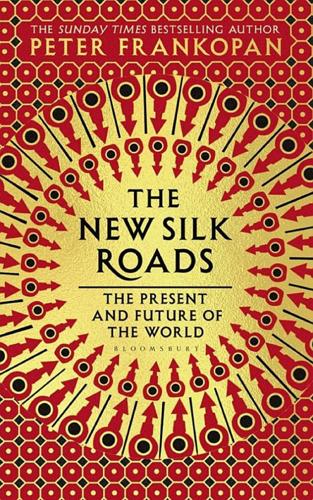
The New Silk Roads: The Present and Future of the World
by
Peter Frankopan
Published 14 Jun 2018
It is perhaps hard to believe that one of the most vibrant centres for tech start-ups in the world today is Iran, where one unexpected side effect of being distanced from western competition has been a surge in new businesses and incubators for start-up companies, like Sarava, that help fledgling concepts off the ground.59 Among those selected to appear at the appropriately named Silk Road Startup in Kish in the spring of 2018 were a marketplace for water-friendly food and agriculture products, an eco-friendly and online fashion marketplace for women to buy and sell pre-owned wearables, and a handheld device that measures the level of blood glucose with infrared spectroscopy and artificial intelligence.60 Such successes do not scratch the surface of what is going on India and China, whose adoption rates of new financial technologies (FinTech) for money transfers and payments, savings and investments and borrowing are far higher than any other country in the world – including the US.61 In both countries, the scope for growth seems to be almost limitless. Ant Financial, hived off from the e-commerce giant Alibaba before the latter floated in the world’s largest initial public offering (or IPO) in history in 2014, is itself preparing to undertake a fundraising round that will value the cashless payment business at a jaw-dropping $150bn.62 This makes the valuation of India’s Paytm (in which Alibaba is a shareholder) of just $10bn look conservative – not bad for a company only founded a few months before Prince William and Kate Middleton got engaged in autumn 2010.63 This all sounds impressive – because it is.
…
World Cities Report 2016 (2016), p. 5. 56The New Arab, ‘Saudi Arabia welcomes Ramadan with a spate of arrests’, 19 May 2018; Chris Gelardi, ‘Saudi Authorities Arrest Women’s Rights Activists Ahead of Lifting Driving Ban’, Global Citizen, 21 May 2018. 57Abdullah bin Zayed al Hahyan, ‘In the Middle East, momentum for women must pick up speed’, Globe and Mail, 30 May 2018; Al-Jazeera, ‘UAE rights activist Ahmed Mansoor sentenced to 10 years in prison’, 30 May 2018. 58State Council of China, ‘China looks to regulate city growth’, 22 February 2016. 59Adam Schreck, ‘Isolation by the West fuels a tech start-up boom in Iran’, Phys Org, 5 June 2017. 60Techrasa Press Release, ‘Silk Roads Start-up Announces Irnas’ Top 10 Start-ups’, 5 November 2017. 61For a useful infographic, see https://www.statista.com/chart/10012/fintech-adoption-rates/ 62Don Weinland and Sherry Fe Ju, ‘China’s Ant Financial shows cashless is king’, Financial Times, 13 April 2018. 63Shrutika Verma, ‘Paytm valuation pegged at $10 billion after secondary share sale’, Livemint, 23 January 2018. 64See for example Indikator.ru, ‘Предприниматели стали меньше финансировать науку’, 2 November 2017. 65United States Senate Committee on Armed Services, ‘Advance Policy Questions for Lieutenant General Paul Nakasone, ISA Nominee for Commander, US Cyber Command’, 1 March 2018. 66Pavel Kantyshev, ‘Путин предложил госкомпаниям закупать российский софт’, Vedemosti, 30 March 2016. 67US Computer Emergency Readiness Team, Alert (TA18-106A), ‘Russian State-Sponsored Cyber Actors Targeting Network Infrastructure Devices’, 16 April 2018. 68See, for example, Sergei Brilev, ‘Хочется плакать’: вирус атаковал Минздрав, МЧС, МВД, РЖД, ‘Сбербанк’ и ‘Мегафон’, Vesti.ru, 13 May 2017. 69RIA Novosti, ‘Клименко объяснил слова главы Роскомнадзора о “блокировке Facebook” ’, 26 September 2017. 70Donie O’Sullivan, Drew Griffin and Curt Devine, ‘Russian company had access to Facebook user data through apps’, CNN Tech, 11 July 2018. 71Interfax, ‘Роскомнадзор будет блокировать инструменты для обхода запрета на Telegram по запросу’, 16 April 2018. 72See Ella George, ‘Purges and Paranoia’, London Review of Books 40.10 (2018), pp. 22–32; Turkish Minute, ‘Turkish govt ready to block “abnormal” social media messages on election day’, 26 May 2018. 73Sarah Zheng, ‘Beijing tries to pull the plug on VPNs in internet “clean-up”, South China Morning Post, 13 July 2017. 74See, for example, Peter Frankopan, The Silk Roads: A New History of the World (London, 2015), pp. 202ff. 75Madeleine Albright, ‘Will We Stop Trump Before It’s Too Late’, New York Times, 8 April 2018.
…
W. here Deng Xiaoping here, here, here Desai, Lord here dictatorial leaders here Djibouti here Doklam Plateau here Dominican Republic here, here donkeys here drones here, here, here, here Duan, Rachel here Dunford, General Joseph here Duterte, Rodrigo here Dzagaryan, Levan here East China Sea here East Jerusalem Hospital Network here El Salvador here, here, here Ellena, Jean-Claude here Erdoğan, Recep Tayyip here, here, here, here, here and annexation of Crimea here Essar Oil here Eurasian Economic Union here, here, here European Monetary Fund here European Union (EU) here, here, here, here, here Exxon here Facebook here, here Fernandes, Tony here Fiat Chrysler here Fierravanti-Wells, Concetta here FinTech here Foges, Clare here football here, here Fox, Vincente here Franz Ferdinand, Archduke here freedom of speech here Gabriel, Sigmar here Galkynysh gas field here, here Gama, Vasco da here Gao Feng here, here General Electric here, here General Motors here Germany here, here, here, here Ghadir-class submarines here Ghani, Ashraf here, here Gilmour, Andrew here Giuliani, Rudy here, here Goldberg, Jeffrey here Google here, here Gorazde massacre here Gove, Michael here Grand Tours here ‘Great Game’ here Grenell, Richard here Guam here Gul, Abdulhamit here Gülen, Fethullah here Gulf War here Gwadar port here, here, here, here Haase, Richard here Hagel, Chuck here Hahn, Johannes here Haiti here Haley, Nikki here, here Hamas here, here Hambantota port here, here Harris, Admiral Harry B. here, here Haspel, Gina here heroin here Hezbollah here Hillman, Jonathan here Hitler, Adolf here Hong Kong here, here Hook, Brian here Hu Lianhe here Hun Sen here hydrated magnesium silicate here hydroelectric projects here, here India economic development here Eurasian trade here intimidation of journalists here military exercises here relations with China here, here, here relations with Iran here, here relations with Pakistan here, here relations with Russia here and US–Turkey crisis here water resources here US policy and here, here see also TAPI pipeline Indian Ocean here Indonesia here, here Infosys Technologies here intellectual property theft here, here International Atomic Agency here, here International Wushu competition here International Yoga Day here Iran electricity exports here foreign interventions here nuclear deal here, here, here, here relations with Russia here relations with Saudi Arabia here street protests here US policy and risk of escalation here, here Iraq here, here, here, here, here, here, here, here, here, here, here, here, here, here ISIS here, here Israel–Palestine conflict here, here, here Ivanov, Gjorge here Jahangiri, Es’haq here Japan here, here, here Jerusalem here Jiang Shigong here Jin Liqun here Johnson, Boris here Juncker, Jean-Claude here, here Karimov, Islam here Kashmir here, here Kazakhstan here, here, here, here, here, here, here, here, here, here, here, here relations with China here Kelly, John here Kelly, Tom here Kenyatta, Uhuru here Khamenei, Ayatollah Ali here, here, here Khan, Imran here Khan, Khurram Dastgir here Khorgos ‘dry port’ here Kiam, Victor here Kim Jong-un here, here, here King of Zhao here Kipling, Rudyard here Kishanganga dam here Kissinger, Henry here, here, here Koolhaas, Rem here Korean War here Ku Klux Klan here Kushner, Jared here Kyrgyzstan here, here, here, here, here, here, here Lagarde, Christine here, here, here Lahore metro here Lake Baikal here Laos here, here, here Lapis Lazuli corridor here Latin America, China and here Lavrov, Sergei here, here, here, here Le Maire, Bruno here Le Pen, Marine here Le Yucheng here Li Keqiang here, here Li Yonghong here Libya here Lighthizer, Robert here, here Lisbon Treaty here Liu He here Ma, Jack here Maas, Heiko here, here McKenzie, Lt General Kenneth F. here McMaster, H.
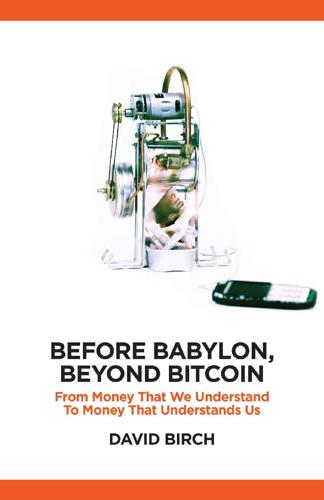
Before Babylon, Beyond Bitcoin: From Money That We Understand to Money That Understands Us (Perspectives)
by
David Birch
Published 14 Jun 2017
London is the principal wholesale market for the euro, even though the United Kingdom has never been part of the eurozone (and soon will not even be part of the European Union). All things considered, there doesn’t seem to be any reason for the City to be worried about the blockchain or quantum computers, provided it does what it always has and takes advantage of technological change. To be fair, recent governments have done much to advance the City’s position as a ‘fintech’ crucible, and Brexit or no Brexit I am sure that London will remain a place of monetary experiment and innovation. A warning from history From wooden tally sticks we move on to the first great paper money experiment in China. That it was in China is unsurprising: they were the first to invent paper and printing, the precursor technologies.
…
This culminated in 2015 with the decision to create a new category of financial institution (similar to the ‘Payment Institution’ approach adopted in Europe) and issue licences to these new ‘payment banks’. The Reserve Bank of India granted the first eleven licences in this new category to a variety of fintech, tech and telecoms companies and consortia. Among the successful bidders were the mobile operators Vodafone M-Pesa and Bharti Airtel, the technology companies Fino PayTech and Tech Mahindra, as well as the Department of Posts. These payment banks can accept deposits from individual customers, with a maximum limit of Rs 1 lakh (around €1,300); issue debit and ATM cards for transactions, but not credit cards; and allow transactions through Internet and leverage technology to offer low-cost banking solutions.
…
Importantly, a key to overall systemic risk evaluation is that a payments bank cannot undertake any lending activity. This makes it possible to expand the systemically less risky payments business while keeping the more systemically risky core banking credit activities under tight control. The Reserve Bank of India granted the first eleven licences in this new category to a variety of fintech, tech and telecoms companies and consortia. Among the successful bidders were the mobile operators Vodafone M-Pesa and Bharti Airtel, the technology companies Fino PayTech and Tech Mahindra, the Department of Posts, and Vijay Shekhar Sharma, the founder of m-commerce outfit Paytm. By the time of the Modi shake-up, Bharti Airtel had only just begun operations, having launched its payments bank in Rajasthan.
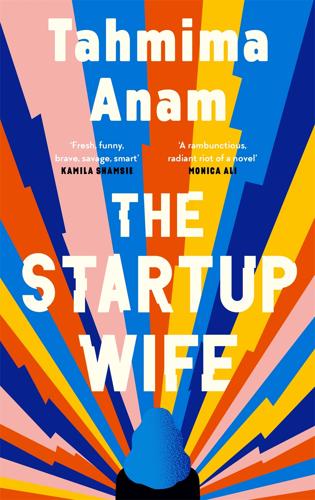
The Startup Wife
by
Tahmima Anam
Published 2 Jun 2021
I’ve gone as far as leafing through copies of Harvard Business Review, and subscribing to daily updates from various websites that promise to tell me how to do it, but all I can see is funding for self-driving cars, for putting stuff up in the cloud like it’s one giant safe-deposit box in the sky, and subscriptions to everything from dye-free tampons to vegan protein powder. There’s fintech, biotech, oiltech, real estate, bento boxes of skin care, and tiffin carriers of meat-free protein. There are no funds for quasi-religious platforms. We are not solving a problem, at least not one that anyone has identified as important or, crucially, an opportunity to get rich. I ask Li Ann. She’s launched apps before, and she knows how to raise money—after all, she’s the one who got all those bigwigs to fund Utopia’s endowment in the first place.
…
I’ve made a word cloud of the reasons.” Jules turns his computer to me. The word VERTICAL is the biggest, followed by UNUSUAL and then RISK. “They didn’t give us money because we were too vertical?” “Our business didn’t fit into any of their verticals.” “What were their verticals?” Jules runs down the list. “Fintech, agritech, real estate, cloud, and gaming.” “I have some good news,” I announce. I always have the good news. The good news is that the community continues to grow. Every day there are new people joining the platform. They chat, share photographs, form little groups, call one another family. Recently, there was a cat funeral, and the cat’s mother, someone by the name of Rose, live-streamed it to two hundred thousand other cat lovers.
…
—but they know they’re going to walk into that office or that pitch meeting, and they’re going to feel like they have to bro it up with all the other guys, because who wants to be the uptight girl who makes everyone shush the minute she walks into the room? We want to be on the inside, we want to hang. We want to be cool. And we want to win. Manishala is talking about how she started A Friend in Need, a fintech company focused on lending money to women. She tells us no one would fund her until a female VC stepped up and saw the opportunity. “We have to back each other,” she says. “Not because we’re being nice or because of the sisterhood. We have to back each other because we see things—financial opportunities—that men don’t.
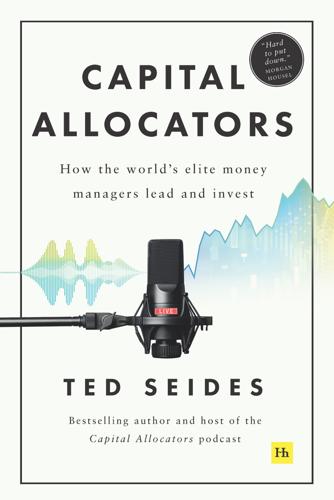
Capital Allocators: How the World’s Elite Money Managers Lead and Invest
by
Ted Seides
Published 23 Mar 2021
That continuity allowed Scott the luxury of a deep understanding of the process, familiarity, and efficient dialogue. Even with a strong committee chair, the size of boards can get unruly. Steve Galbraith serves on boards of a university, a large family office, a public company, a government agency, and two early-stage fintech companies. He found that large committees suffer from a deferral of responsibility and lack a sense of ownership in getting things done. Michael Mauboussin reflected research in Chapter 4, “Decision-Making,” that the optimal size of boards is four to six people. When Ellen Ellison reduced the size of her committee in half, it shrunk from 18 to nine and was well on its way to an efficient structure.
…
Nudges assist managers in moving away from their instinctive, reptilian brain – Daniel Kahneman’s System 1 thinking – and towards their contemplative part of the brain – System 2. There is one aspect of Essentia that needs mentioning. Charley Ellis, the same outspoken proponent of index fund management described in the Introduction, is a Non-Executive Director of Essentia. Yes, Charley advises a fintech company whose tools seek to improve the wares of active managers in the public equity markets. As Clare described on the show, Charley “never said there wouldn’t be active managers, he said there would be fewer of them.” Touché. Cameron Hight had an insight that has helped hedge fund managers big and small optimize portfolio construction.

Life After Google: The Fall of Big Data and the Rise of the Blockchain Economy
by
George Gilder
Published 16 Jul 2018
Adept in network and graph theory, he explains that the bitcoin’s resistance to attack is measured not by the number of nodes but by the number of edges—that is, links between the nodes. He shows that bitcoin nodes, compared with any other blockchain, are interconnected with nearly biological neuronal density as every node propagates new blocks back and forth to all the others through a so-called randomized gossip protocol. Marching to and fro across stages at Fintech conferences, Wright declares the bitcoin a superior platform for any kind of smart contract or “Turing-complete” thaumaturgy. “Smart contracts,” embodied in rigorous software, were proposed by Nick Szabo in the 1990s along with much of the rest of the bitcoin portfolio. They are self-executing contracts that can ride on an immutable blockchain and bypass lawyers and accountants.
…
While Blockstack is a low-entropy carrier of identity, naming, routing discovery, and property rights, Ethereum is a high-entropy platform for Internet money-making, fundraising, and ingenious programming. As the Blockstack people readily acknowledge, all these Ethereum “faults” are strengths today. It is Ethereum that has accomplished a spectacular breakthrough, overcoming the fundraising freeze for high-tech startups and fin-tech innovators. But Ali and his team were determined to restore a distributed Internet first and develop financial devices only after trust was restored. In this campaign, Ali and Shea and their software chief Nelson are part of a throng of hundreds of new companies raising billions of dollars to launch new capabilities for a reformed Internet based on the blockchain-distributed ledger innovations of Satoshi.
…
His declaration that “after years of tireless effort and billions of dollars invested, nobody has actually come up with a use for the blockchain—besides currency speculation and illegal transactions” went viral. Announcing that the crypto party is over, he said it’s time to pack up the toots and touts, bitcoin caps and cups, books and brochures, time to close down the CoinSummits, fintech hackathons, initial coin offering jubilees, and blockchain revues. With a note of sanctimony, he called us instead to return to the laborious creation of real trust and real value in the existing global economy.1 Previously hidden in the crowd along Satoshi’s parade, Stinchcombe stepped forth with bravado to tell us that not only is the pseudonymous founder himself nakedly a nincompoop, but similarly bare-brained are all his Byzantine VC generals touting “blockchain.”

The Coming of Neo-Feudalism: A Warning to the Global Middle Class
by
Joel Kotkin
Published 11 May 2020
psid=bwGGn; Aria Bendix, “San Francisco’s homelessness crisis is so bad, people appear to be using poop to graffiti the sidewalks,” SFGate, November 20, 2018, https://www.sfgate.com/technology/businessinsider/article/Meet-the-guy-in-charge-of-tackling-San-8331836.php. 27 Chris Brenner and Manuel Pastor, Equity, Growth, and Community: What the Nation Can Learn from America’s Metro Areas (Oakland: University of California Press, 2015), 167. 28 Rachel Massaro, “Silicon Valley Index,” Joint Venture, 2016, https://jointventure.org/images/stories/pdf; Dylan Wittenberg, “These Bay Area FinTech Companies Are Revolutionizing the Lending Space,” Benzinga, July 25, 2017, https://www.benzinga.com/fintech/17/07/9816489/these-bay-area-fintech-companies-are-revolutionizing-the-lending-space/index2016.pdf. 29 Issie Lapowsky, “Silicon Valley’s Biggest Worry Should Be Inequality, Not a Bubble,” Wired, February 4, 2015, https://www.wired.com/2015/02/silicon-valley-inequality-study/. 30 Gabriel Metcalf, “Four Future Scenarios for the San Francisco Bay Area,” SPUR Regional Strategy, August 2018, https://www.spur.org/sites/default/files/publications_pdfs/SPUR_Future_Scenarios_for_the_SF_Bay_Area.pdf; Alex Thomas, “The Demographics of Poverty in Santa Clara County,” New Geography, January 10, 2017, https://www.newgeography.com/content/005501-the-demographics-poverty-santa-clara-county; Jeff Desjardins, “Which Companies Make the Most Revenue Per Employee?”
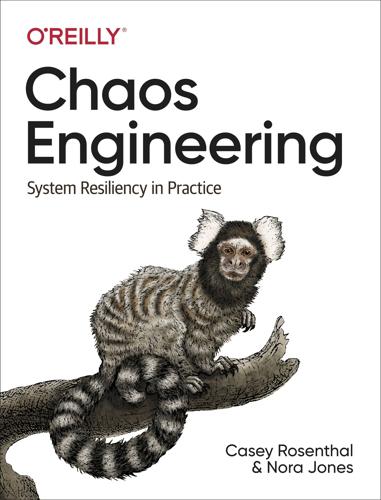
Chaos Engineering: System Resiliency in Practice
by
Casey Rosenthal
and
Nora Jones
Published 27 Apr 2020
Calling these out and explicitly naming it Chaos Engineering allows us to strategize about its purpose and application, and take lessons learned from other fields and apply them to our own. In that spirit, we can explore Chaos Engineering in industries and companies that look very different from the prototypical microservice-at-scale examples commonly associated with the practice. FinTech, Autonomous Vehicles (AV), and Adversarial Machine Learning can teach us about the potential and the limitations of Chaos Engineering. Mechanical Engineering and Aviation expand our understanding even further, taking us outside the realm of software into hardware and physical prototyping. Chaos Engineering has even expanded beyond availability into security, which is the other side of the coin from a system safety perspective.
…
For some it could be reactive and for others it could come from the inside out, built in the company’s DNA. This chapter covers how Capital One embraced and evolved Chaos Engineering, and discusses factors you must take into account during such endeavors; we’ll review things to watch out for while designing an experiment for FinTech, how tooling plays an important role in creating necessary audit trails, and necessary metrics to capture while running an experiment. A Capital One Case Study Capital One, the largest direct bank2 in the United States, is known for being a data and tech pioneer in the financial services industry and is seven years into a massive digital transformation.
…
About the Author Nathan Aschbacher began his career writing programs for CNC machines where overlooked edge cases resulted in mangled heaps of metal, broken tools, and lasting impressions of catastrophic failure. Since those early days he has gone on to design fault-tolerant distributed data platforms and global transaction processing networks. Nathan first applied Chaos Engineering principles to problems in the FinTech space, later transferred the practice to autonomous vehicle platform development, and now focuses on developing products and technology, through his company Auxon, which leverages formal methods and sophisticated fault injection to enable engineers to verify and validate complex, highly automated systems.
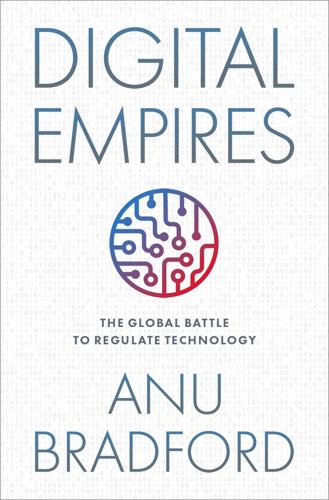
Digital Empires: The Global Battle to Regulate Technology
by
Anu Bradford
Published 25 Sep 2023
Huawei has supplied surveillance equipment for safe cities in Pakistan, including for the Lahore Safe City project, which Huawei described back in 2016 as “the largest comprehensive Safe City architecture in the world.”49 Chinese companies also dominate the e-commerce and fintech markets in the country. Chinese e-commerce giant Alibaba has helped build Pakistani e-commerce infrastructure following a Memorandum of Understanding that the company signed with the Pakistan Trade Development Authority in 2017. With its affiliate Ant Group, Alibaba has also pursued e-commerce and fintech acquisitions in Pakistan, further entrenching Chinese tech companies’ control over the local digital economy. Chinese companies have made similarly significant inroads into other parts of South and Southeast Asia.
…
J. 457, 464 (2022). 9.See Largest Internet Companies by Market Cap, CompaniesMarketCap, https://companiesmarketcap.com/internet/largest-internet-companies-by-market-cap/ [https://perma.cc/Q4PC-X6BB] (last visited Aug. 22, 2022). 10.See Market Capitalization of the Largest Internet Companies Worldwide as of June 2022, Statista, https://www.statista.com/statistics/277483/market-value-of-the-largest-internet-companies-worldwide/. 11.Katharina Buchholz, China’s Mobile Payment Adoption Beats All Others, Statista (July 8, 2022), https://www.statista.com/chart/17909/pos-mobile-payment-user-penetration-rates/; see also Statista, FinTech Report 2021—Digital Payments 4, 7 (2021), https://www.statista.com/study/41122/fintech-report-digital-payments/. 12.Jeanne Whalen & Chris Alcantara, Nine Charts to Show Who’s Winning the US–China Tech Race, Wash. Post (Sep. 21, 2021), https://www.washingtonpost.com/technology/2021/09/21/us-china-tech-competition/. 13.Id. 14.Id.; Kalhan Rosenblatt, TikTok Surpasses Google as Most Popular Website of the Year, New Data Suggests, NBC News, https://www.nbcnews.com/tech/tech-news/tiktok-surpasses-google-popular-website-year-new-data-suggests-rcna9648. 15.Xi Jinping (习近平), Zhashi Tuidong Gongtong Fuyu (扎实推动共同富裕) [Making Solid Progress Toward Common Prosperity], QSTheory.cn (求是网) (Oct. 15, 2021), http://www.qstheory.cn/dukan/qs/2021-10/15/c_1127959365.htm (China), translated in Making Solid Progress Toward Common Prosperity, QIUSHI, http://en.qstheory.cn/2022-01/18/c_699346.htm (Jan. 18, 2022). 16.Zhang, supra note 8, at 471–483. 17.Id. at 471. 18.Xinhua She (新华社) [Xinhua News Agency], Zhonggong Zhongyang Guowuyuan Yinfa “Guojia Chuangxin Qudong Fazhan Zhanlüe Gangyao” (中共中央 国务院印发《国家创新驱动发展战略纲要》) [Outline of the National Innovation-Driven Development Strategy Issued by the CPC Central Committee and the State Council], State Council Gaz., May 30, 2016, at 5 (China), translated in Ctr. for Sec. and Emerging Tech, Outline of the National Innovation-Driven Development Strategy Issued by the CPC Central Committee and the State Council (2019), https://cset.georgetown.edu/publication/outline-of-the-national-innovation-driven-development-strategy/. 19.Zhang, supra note 8, at 476–480. 20.Arjun Kharpal, Alibaba’s Jack Ma Has Been a Communist Party Member Since the 1980s, CNBC, https://www.cnbc.com/2018/11/27/alibabas-jack-ma-has-been-communist-party-member-since-1980s.html. 21.Zhang, supra note 8, at 476–477; Lianghui Jianyi | Ma Huateng Lianghui “Xiance” Xinjiuye yu Shuzi Zhili (两会建议丨马化腾两会“献策”新就业与数字治理) [Proposals in the Two Sessions | Ma Huangteng Submitted Suggestions on New Form of Employment and Digital Regulation], Renmin Youdian Bao (人民邮电报) [People’s Paper on Mails and Telecomm.]
…
This unfolding shift in China’s regulatory approach suggests that the Chinese government is now fundamentally reevaluating the bargain that it initially struck with its tech companies, determined to curtail the influence of large tech companies whose growth it has been nurturing all these years. Its wide-reaching regulatory crackdown of the tech sector started with the suspension of the fintech company Ant Group’s planned $37 billion initial public offering—the largest IPO in history—in November 2020,159 followed by a $2.8 billion antitrust fine for the e-commerce giant Alibaba in April 2021.160 Two days after fining Alibaba, Chinese regulators ordered Ant Group to restructure its operations and become a financial holding company subject to central bank supervision.161 Next in line was the ride-hailing service DiDi Chuxing, whose data practices triggered a government investigation just days after the company’s $4.4 billion IPO on the New York Stock Exchange.162 Citing cybersecurity risks that the company posed to its customers, Chinese regulators ordered DiDi’s app to be removed from app stores in July 2021—within a week following the IPO—sending the company’s stock price tumbling,163 and resulting in a record high $1.2 billion fine imposed on the company in July 2022.164 In July 2021, the government blocked the proposed $5.3 billion Tencent-backed merger between DouYu with Huya, China’s two leading streaming operators.165 Another antitrust action followed in October 2021, with a $530 million fine imposed on Meituan, the food delivery giant, for its monopolistic practices.166 In parallel with targeting specific companies with enforcement actions, the government enacted a flurry of legislative measures between February and August 2021 to further assert control over the tech industry.
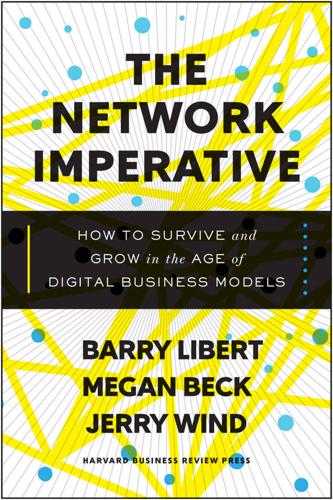
The Network Imperative: How to Survive and Grow in the Age of Digital Business Models
by
Barry Libert
and
Megan Beck
Published 6 Jun 2016
More than half (51 percent) of banking executives surveyed by Business Insider predicted that financial technology (fintech) disruptors would see the most success in retail banking, including areas such as depositing savings, managing transactions, and providing loans.1 Major consumer banks expect retail banking to plummet from 35 percent of revenues to only 16 percent by 2020. What is happening? Network business models are engulfing financial services just as in other industries. In short, fintech start-ups are allowing banking customers to serve themselves, and each other, in novel ways. Rather than get cash or write a check to pay one’s share of the rent, the connected banking consumer can use PayPal or Venmo.

Don't Be Evil: How Big Tech Betrayed Its Founding Principles--And All of US
by
Rana Foroohar
Published 5 Nov 2019
It is the question of whether it will be able to continue to own a large share of the economic value of the automobile industry in the networked era in which the car is becoming a smart device. It’s a question that faces any number of industries, from retail (which has already been decimated by Amazon) to healthcare (under competitive threat from both Amazon and Google), finance (which is under threat from fintech, the merging of tech platform technology and banking), manufacturing, and so on. The businesses that have the best technology in automotive software and apps are, unsurprisingly, technology companies such as Google, Apple, and China’s Baidu, all of which are pouring money into autonomous vehicle technology and platforms to support it.
…
Rana Foroohar, “It Is Time for a Truly Free Market,” Financial Times, March 31, 2019. 19. Rana Foroohar, “U.S. Capital Expenditure Boom Fails to Live Up to Promises,” Financial Times, November 25, 2018. 20. Foroohar, “Tech Companies Are the New Investment Banks.” 21. Rana Foroohar, “Banks Jump on the Fintech Bandwagon,” Financial Times, September 16, 2018; Mark Bergen and Jennifer Surane, “Google and Mastercard Cut a Secret Ad Deal to Track Retail Sales,” Bloomberg, August 30, 2018. 22. Stacy Mitchell and Olivia LaVecchia, “Report: Amazon’s Next Frontier: Your City’s Purchasing,” Institute for Self-Reliance, July 10, 2018. 23.
…
Stacy Mitchell and Olivia LaVecchia, “Report: Amazon’s Next Frontier: Your City’s Purchasing,” Institute for Self-Reliance, July 10, 2018. 23. Lina M. Khan, “A Separation of Platforms and Commerce,” Columbia Law Review, https://columbialawreview.org/content/the-separation-of-platforms-and-commerce/. 24. Foroohar, Makers and Takers, 189. 25. Saule T. Omarova, “New Tech v. New Deal: Fintech as a Systemic Phenomenon,” Yale Journal on Regulation 36, no. 2 (August 1, 2018). 26. “IMF Warns of Giant Tech Firms’ Dominance,” BBC News, June 8, 2019. 27. Cathy O’Neil, Weapons of Math Destruction: How Big Data Increases Inequality and Threatens Democracy (New York: Crown, 2016), 143–44. 28.
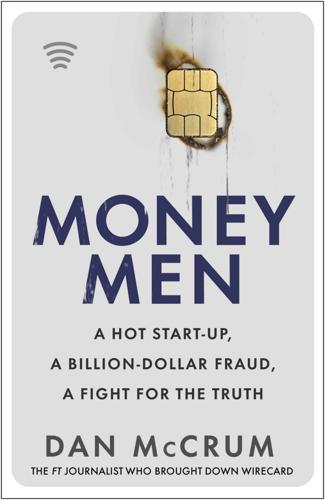
Money Men: A Hot Startup, a Billion Dollar Fraud, a Fight for the Truth
by
Dan McCrum
Published 15 Jun 2022
Hempton spoke to a labourer from a Native American reservation who was part of a team that spent days at the railhead filling sacks of dirt and hefting them into a box car by hand. It didn’t make business sense, but it had happened anyway. The mine was the greatest short that never was. Not long afterwards, I was chatting to Hempton when he posed an irresistible question: ‘Would you be interested in some German gangsters?’ The company was Wirecard, a fintech worth about €4bn. He thought it was a fraud, but it was also rumoured to have a finger in every bit of dirty business online. ‘If you are going to look into it, be careful,’ he said. It was the summer lull, and thoughts of danger seemed ridiculous in the genteel surroundings of a paper where reporters were more likely to doorstep a billionaire on a yacht than a thug.
…
A deed was signed on 25 March for The Boys’ holding company to sell 94 per cent of Hermes to 1A. Something had changed their minds and persuaded them to sell. April Fools’ Day saw Jan Marsalek lend a hand in Munich. The Hermes website was outdated and focused on its travel agency arm. If the company was to be presented as a glittering and valuable fintech, a rebrand was needed. He sent a local web designer a detailed layout for a slick new Hermes website, brazenly using his Wirecard email account. At one point he shared some feedback from India: ‘The Boys have requested the new logo to be incorporated in the banner images.’ The web designers worked regularly with Wirecard and were surprised to deal directly with one of its top executives and by the urgent pace of the commission.
…
‘Because it’s Tuesday.’ O’Sullivan was firmly settled in Singapore, living the good life. His home held an aquarium for hammerhead sharks. He kept a white Rolls-Royce, an ostentatious expense given Singapore’s punitive car duties, and flew by private jet. Even Marsalek seemed jealous of his office at Senjo, a fintech company where O’Sullivan spent much of his time. Senjo was found on the fifty-sixth floor of One Raffles Place, and O’Sullivan’s control was understood, if not clearly documented. His was the largest office, with an expansive view of the bay and a lavish interior. A striking chest of drawers, one half French regency, the other Scandi-minimal, was one designer touch.
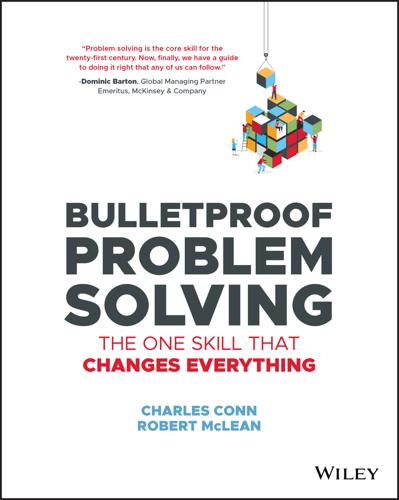
Bulletproof Problem Solving
by
Charles Conn
and
Robert McLean
Published 6 Mar 2019
Sometimes these can involve options, futures contracts, or other financial instruments—although few financial hedging mechanisms are as long‐lasting as many difficult problems require. Acquiring low‐cost strategic options through a portfolio of initiatives, or betting on multiple horses in the race, is another way we deal with uncertainty. Major financial institutions are investing relatively small equity stakes in financial technology (fintech) start‐up companies to be in a position where they can first understand and then capitalize on innovation that challenges established players. We saw how important information gathering is in times of disruptive technologies in our newspaper versus new media example in Chapter 2. These are typically low‐cost options, and often involve bets on competing technologies.
…
See also Problem disaggregation component disaggregation, 180 issues, disaggregation, 5 map, basis, 232 Disaster case, 217 Discrimination, 153 Dissent, obligation, 103–104 Distribution of outcomes, 122–123, 122e Dixit, Avinash, 171–173, 220 Dobbs, Richard, 236 Dobeli, Rolf, 100 Douglass, Frederick, 69 Drivers, understanding, 50 Drones technologies, usage, 163 usage, 162–164 Dummying, 89–90 Dunlap, Al, 120 E Economic outcomes, 158 Education gaps, xvii–xviii Electronic Arts (EA), A/B test (usage), 151 Empathize (step), 44 Equality/liberty (cleaving frame example), 78 Ewenstein, Boris, xvii Execution (Charan/Bossidy), xv Expected value, 117–118 Experiments, types, 150–151 Explicit downside scenario modeling, 105–106 F False negatives, question, 162 Federer, Roger (game analysis), 164 Feynman, Richard, xx Financial/non‐financial (cleaving frame example), 80 Financial technology (fintech), equity stakes, 200 Findings synthesis, 181–184 visualization, 182 Firepower availability, 136–137 case studies, 140–141 selection, 138–140 First Boston Corporation, The (analyst report), 62 First‐cut calculation, 209–210 First‐cut data analysis, 137 First Nations leadership, 56 Fishbone diagrams, 129 Fish species, identification, 165 Flexibility, staircase architecture consideration, 222 Fowler, James H., 241 Foy, Brody, 160 Funke, Joachim, xvii Future of Jobs Report (World Economic Forum), xvi G GameSet MAP, 174 Game theory, 136, 140 case study, 141 example, 171–176 problems, decision trees, 174 thinking, 167 Gandhi, Mahatma, 69 Gannt chart format, usage, 93 Gardner, Dan, xxii, 100, 103, 104, 165 Garemo, Nicklas, 122 General statement, 58 Gigerenzer, Gerd, 114, 124 GIS technology, usage, 174 Goedhart, Marc, 214 Good Judgment Project, 165 Gordon & Betty Moore Foundation (Moore Foundation), 34, 203 Graham, Logan, 160 Grindle, Abe, 130 Growth fund, returns, 212–213 Growth staircases, 220 H Halo effects, 120 Hamilton, Joan O'C, 200 Hammond, J., 73 Hancock, Bryan, xvii Hardin, Garrett, 243 Harvest, change stage, 228 Hawkeye technology, usage, 173–174 Healthcare costs, 121 Heart attack patient classification, 124e Hechinger Hardware, 59, 182 analysis, 60 cost reduction/asset productivity increase, 63e dominance, 96 draft storyline, 189e Hechinger/Home Depot contrast, case study, 59–66 return on invested capital (ROIC) analysis, 61e, 183e sales/operating income, 64e Hedges, usage, 200, 206 Hellistag, Sven, xxii Heuristics, 112–123, 210 examples, 113e question heuristics, 128e usage, 256 Hicks, Jennifer L., 143 Highest‐level problem, defining, 39–41 High‐leverage programs, support, 242 Hirt, Martin, 201 Historical legacies, interaction case study, 68–71 problem, 70e HLMI.

Machine, Platform, Crowd: Harnessing Our Digital Future
by
Andrew McAfee
and
Erik Brynjolfsson
Published 26 Jun 2017
Lawmakers in France, for example, outlawed UberX’s close relative UberPop in 2014 and imposed fines on Uber and key managers. And as of early 2017, Uber was prohibited altogether in Vancouver, Canada. In finance, as in urban transportation, regulation was at times the incumbents’ best defense against digital upstarts. In June 2015 the Economist published an article with the title “Why Fintech Won’t Kill Banks.” Many of the financial technology innovations it discussed were, in fact, platforms, including platforms for payments, foreign exchange, and peer-to-peer lending (a phenomenon we’ll discuss in Chapter 11). The article pointed out that incumbent banks were much, much larger than these newcomers and also “able to create credit more or less at a whim,” and that these were important advantages.
…
Changes in Taxi Ridership and Revenue in Los Angeles 2009–2014,” Policy Brief, July 2015, table 1, p. 3, http://www.irle.ucla.edu/publications/documents/Taxi-Policy-Brief.pdf. 201 Yellow Cab Cooperative, filed for bankruptcy: Tom Corrigan, “San Francisco’s Biggest Taxi Operator Seeks Bankruptcy Protection,” Wall Street Journal, January 24, 2016, https://www.wsj.com/articles/san-franciscos-biggest-taxi-operator-seeks-bankruptcy-protection-1453677177. 201 Less than three years later: Simon Van Zuylen-Wood, “The Struggles of New York City’s Taxi King,” Bloomberg BusinessWeek, August 27, 2015, https://www.bloomberg.com/features/2015-taxi-medallion-king. 202 Lawmakers in France: “Uber Fined in France over UberPop,” BBC News, June 9, 2016, http://www.bbc.com/news/business-36491926. 202 In June 2015 the Economist: “Why Fintech Won’t Kill Banks,” Economist, June 17, 2015, http://www.economist.com/blogs/economist-explains/2015/06/economist-explains-12. 202 “a future as a sort of financial utility”: Ibid. 203 $45 billion: Juro Osawa, Gillian Wong, and Rick Carew, “Xiaomi Becomes World’s Most Valuable Tech Startup,” Wall Street Journal, last modified December 29, 2014, https://www.wsj.com/articles/xiaomi-becomes-worlds-most-valuable-tech-startup-1419843430. 203 Xiaomi had sold 61 million smartphones: Eva Dou, “China’s Xiaomi under Pressure to Prove Value to Investors,” Wall Street Journal, January 10, 2016, https://www.wsj.com/articles/chinas-xiaomi-under-pressure-to-prove-value-to-investors-1452454204. 203 typically selling for $149 in 2015: Eva Dou, “Xiaomi Ends 2015 as China’s Smartphone King,” Wall Street Journal, February 1, 2016, http://blogs.wsj.com/digits/2016/02/01/xiaomi-ends-2015-as-chinas-smartphone-king. 203 less than 5% of revenue: Kevin Kelleher, “Once a Darling, Xiaomi Is Facing Tough Questions about Its Future,” Time, March 21, 2016, http://time.com/4265943/xiaomi-slowdown. 203 Xiaomi’s sales had dropped by almost 40%: David Gilbert, “How Xiaomi Lost $40bn: Where It All Went Wrong for the ‘Apple of the East,’ ” International Business Times, August 18, 2016, http://www.ibtimes.co.uk/how-xiaomi-lost-40bn-where-it-all-went-wrong-apple-east-1576781. 203 closer to $3.6 billion: Ibid. 204 Total unit sales in 2016: James Titcomb, “Samsung Mobile Phone Sales Fall to Lowest Level in Five Years,” Telegraph, January 24, 2017, http://www.telegraph.co.uk/technology/2017/01/24/samsung-mobile-phone-sales-fall-lowest-level-five-years. 204 Apple captured 91% of global smartphone profits: Philip Elmer-DeWitt, “How Apple Sucks the Profit Out of Mobile Phones,” Fortune, February 14, 2016, http://fortune.com/2016/02/14/apple-mobile-profit-2015. 204 analyst Tim Long of BMO Capital Markets estimated: Mikey Campbell, “Apple Captures More than 103% of Smartphone Profits in Q3 despite Shrinking Shipments,” November 3, 2016, http://appleinsider.com/articles/16/11/03/apple-captures-more-than-103-of-smartphone-profits-in-q3-despite-shrinking-shipments. 204 $22 billion in profits: Joel Rosenblatt and Jack Clark, “Google’s Android Generates $31 Billion Revenue, Oracle Says,” Bloomberg, January 21, 2016, https://www.bloomberg.com/news/articles/2016-01-21/google-s-android-generates-31-billion-revenue-oracle-says-ijor8hvt. 207 “The Market for ‘Lemons’ ”: George A.
…
.: Uber Transportation Security Administration (TSA), 89 Tresset, Patrick, 117 trucking industry, 188 T-shirts, 264 tumors, 3D modeling of, 106 Turing, Alan, 66, 67n Tuscon Citizen, 132 TV advertising, 48–51 Tversky, Amos, 35 Twitter, 234 two-sided networks credit cards, 214–16 Postmates, 184–85 pricing in, 213–16, 220 pricing power of, 210–11 switching costs, 216–17 Uber, 200, 201, 218–19 two-sided platforms, 174, 179–80 Two Sigma, 267 Uber driver background checks, 208 future of, 319–20 information asymmetry management, 207–8 lack of assets owned by, 6–7 as means of leveraging assets, 196–97 network effects, 193, 218 as O2O platform, 186 origins, 200–202 and Paris terrorist attack, 55 pricing decisions, 212–15, 218–19 rapid growth of, 9 regulation of, 201–2 reputational systems, 209 routing problems, 194 separate apps for drivers and riders, 214 and Sydney hostage incident, 54–55 value proposition as compared to Airbnb, 222 UberPool, 9, 201, 212 UberPop, 202 UberX, 200–201, 208, 212, 213n Udacity, 324–25 unbundling, 145–48, 313–14 unit drive, 20, 23 Universal Music Group, 134 University of Louisville, 11 University of Nicosia, 289 unlimited service ClassPass Unlimited, 178–79, 184 Postmates Plus Unlimited, 185 Rent the Runway, 187–88 unsupervised learning, 76, 80–81 Upwork, 189, 261 Urmson, Chris, 82 used car market, information asymmetry and, 207 Usenet, 229, 271 user experience/interface as platforms’ best weapon, 211 and successful platforms, 169–74 users, as code developers, 242 “Uses of Knowledge in Society, The” (Hayek), 235–37 utilization rate, O2O platforms, 196–97 Van Alstyne, Marshall, 148 Van As, Richard, 272–74 Vancouver, Canada, Uber prohibition in, 202 venture capital, DAO vs., 302 verifiability, 248 verifiable/reversible contributions, 242–43 Verizon, 96, 232n Veronica Mars (movie), 262 Veronica Mars (TV show), 261–62 Viant, 171 video games, AI research and, 75 videos, crowd-generated, 231–32 Viper, 163 virtualization, 89–93; See also robotics vision, Cambrian Explosion and, 95 “Voice of America” (Wright), 229–30 von Hippel, Eric, 265 wage declines, 332 Wagner, Dan, 48–50 Waldfogel, Joel, 144 Wales, Jimmy, 234, 246–48 Walgreens, 185 Walmart, 7, 47 Wanamaker, John, 8–9 warehousing, 102–3, 188 Warner Brothers, 262 Warner Music Group, 134 Washington Post, 132 Washio, 191n waste reduction, 197 Watson (IBM supercomputer) health claim processing, 83 Jeopardy! victory, 17 p53 kinase study, 116–17 recipes invented by, 118 Waze, 162, 218 Wealthfront, 91 wealth management, 91; See also financial services web, See World Wide Web Web 2.0, 242 Wiener, Norbert, 31 Werbos, Paul, 73 WhatsApp, 140–42, 213, 265–66 Whitehead, Alfred North, 69 “Why Fintech Won’t Kill Banks” (Economist article), 202 Wikipedia, 43, 234–35, 246–49, 260 Williams, Walter, 263 Williamson, Oliver E., 313 Wilson, Mark, 118n Wilson, Timothy DeCamp, 45 Windows Phone, 167–68 Windsor, Richard, 203 wine, 38–39 winner-take-all markets, 217 women, automated trading and, 269 World Wide Web and business process reengineering, 33 as crowd-generated library, 231–32 and enterprise systems, 34 expansion of Internet’s capabilities, 33–34 as platform, 138 Wright, Gavin, 21 Wright, Robert, 229–31, 271 writing, AI-generated, 121 Wu, D.

The Job: The Future of Work in the Modern Era
by
Ellen Ruppel Shell
Published 22 Oct 2018
higher-skilled employees, like loan managers “Digital Disruption: How FinTech Is Forcing Banking to a Tipping Point,” Citi GPS: Global Perspectives and Solutions, March l, 2016, https://ir.citi.com/D%2F5GCKN6uoSvhbvCmUDS05SYsRaDvAykPjb5subGr7f1JMe8w2oX1bqpFm6RdjSRSpGzSaXhyXY%3D. When I visited the Cambridge site, there was only one customer service rep, who told me he had a bachelor’s degree in communications and said his core duties involved “promoting the brand” and directing customers to the “right person, regardless of their banking needs.” demand for skilled bank employees will continue to decline Nathaniel Popper, “ ‘Fintech? Start-Up Boom Said to Threaten Bank Jobs,” New York Times, March 30, 2016, https://www.nytimes.com/2016/03/31/business/dealbook/fintech-start-up-boom-said-to-threaten-bank-jobs.html.
…
Start-Up Boom Said to Threaten Bank Jobs,” New York Times, March 30, 2016, https://www.nytimes.com/2016/03/31/business/dealbook/fintech-start-up-boom-said-to-threaten-bank-jobs.html. Popper reports projections of up to a 30 percent reduction of then-current bank employees due to new technologies. self-interested parties to overproduce graduates Of eight hundred engineers age fifty or older responding to a 2011 survey, 16 percent were unemployed, and 48 percent had been out of engineering entirely for at least two years. See Brian Fuller, “Help for Unemployed Engineers,” EE Times, May 20, 2011, http://www.eetimes.com/author.asp?

Gambling Man
by
Lionel Barber
Published 3 Oct 2024
Cast of Characters Part One Masayoshi Son, CEO and founder of SoftBank, known as ‘Masa’ Mitsunori Son, father of Masa, king of pachinko in Kyushu Tamako, mother of Masa Son Jong-gyeong, grandfather of Masa, Korean-born, emigrated to Japan in 1917 Lee Wong-jo, Korean-born, inspirational grandmother of Masa Masami Son, née Ono, Japanese wife of Masa Hong Lu, Masa’s first business partner at UC Berkeley Forrest Mozer, UC Berkeley professor, entrepreneur who developed Masa’s first product, the pocket speech translator Tadashi Sasaki (1915–2018), legendary engineer, Sharp executive and mentor to Masa Part Two Yasuhiko Omori, CEO of SoftBank Japan, 1983–6, while Masa was recovering from hepatitis B Yoshitaka Kitao, ex-Nomura Securities, CFO SoftBank (1995–9), head of SoftBank Finance, later SBI, the financial services group based in Tokyo Ted Dolotta, Polish-born computer programmer at Bell Labs, Masa’s first ‘eyes and ears’ in the US Bill Gates, co-founder Microsoft, long-time friend of Masa Kazuhiko Nishi, founder of ASCII software, partner to Bill Gates, Masa’s great rival in Japan Jack Ma, co-founder and longtime CEO of Alibaba, member of SoftBank board (2007–20) Joe Tsai, Taiwanese-Canadian lawyer, co-founder and chair of Alibaba Michael Moritz, Welsh-born venture capitalist and top partner at Sequoia Capital Ron Fisher, South African-born SoftBank executive and consigliere to Masa Jordan ‘Jordy’ Levy, venture capitalist, investor for SoftBank in the US Gary Rieschel, ex-Intel executive, venture capitalist and SoftBank executive in the US Jerry Yang, co-founder Yahoo, business partner with Masa Sheldon Adelson, Las Vegas casino magnate, long-time business ally of Masa Part Three Jeff Sine, co-founder of the Raine Group, long-time personal banker and adviser to Masa Kazuhiko Kasai, long-time adviser to Masa, SoftBank board director (2000–2013), head of SoftBank Hawks baseball team Ken Miyauchi, CEO of SoftBank Mobile and SoftBank Group board director (1988–) Yoshimitsu Goto, chief financial officer and SoftBank Group board Member Kazuko Kimiwada, top financial officer SoftBank Group Tadashi Yanai, CEO and founder of Fast Retailing, parent of fashion brand Uniqlo, and SoftBank Group board member (2001–19) Parts Four and Five Nikesh Arora, ex-Google, president of SoftBank Group, heir apparent, left in 2015 Marcelo Claure, Bolivian-American billionaire, CEO of Sprint, COO SoftBank Group Corporation Rajeev Misra, ex-Deutsche Bank, head of SoftBank Vision Fund (2017–22) Sunil Bharti Mittal, Indian telecoms billionaire and member of SoftBank board (2012–14) Akshay Naheta, ex-Deutsche Bank, head of Northstar, SoftBank’s internal hedge fund Nizar al-Bassam, Saudi-born investor and SoftBank adviser, introduced Masa to Gulf sovereign wealth funds Yasir Al-Rumayyan, head of the Saudi Public Investment Fund, major investor in SoftBank Vision Fund Katsunori Sago, ex-Goldman Sachs, chief strategy officer SoftBank Group (2018–21) Mohammed bin Salman (MBS), Crown Prince of Saudi Arabia Lex Greensill, former Queensland melon farmer turned founder of Greensill, fintech company Adam Neumann, CEO and founder of WeWork Prologue On a chilly Wednesday evening, 2 February 2000, more than 2,000 people crammed into a dimly lit discotheque called Velfarre,fn1 Tokyo’s equivalent of Studio 54 in New York.1 The suit-clad professionals streaming onto the giant underground dance floor were not about to twist the night away.
…
All of SoftBank’s family of companies would contribute to the city’s high-tech ecosystem: ARM, Grab, even a revived WeWork providing office space. When asked where the funds would come from, Masa pointed to Lex Greensill, the Australian supply-chain finance entrepreneur backed by the Vision Fund. Greensill, a former Queensland melon farmer, aspired to become a global fintech champion. With his four private planes, Savile Row suits and the former British prime minister David Cameron on the payroll, he looked the part. Lex was the money guy, Masa told ‘Jokowi’ on footage captured on Indonesian TV. Are you good for $100bn on the new Indonesian capital, Masa asked Greensill.
…
In hindsight, he should have held on because Nvidia shares rallied strongly.fn1 Still Naheta was able to present his bosses with a $3bn cheque, and he made sure everyone knew about the windfall. ‘Akshay was very long on Akshay,’ says a SoftBank shareholder. His next investment, involving a Munich-based payments company called Wirecard, appeared equally adroit. Acclaimed as Germany’s fintech champion, Wirecard enjoyed the support of gullible German retail investors and an equally credulous political establishment. For a time, it was worth more than Commerzbank, a mainstream German bank. But, on 30 January 2019, the Financial Times raised multiple questions about its revenues. Wirecard shares fell 40 per cent, wiping several hundred million dollars off the company’s valuation.

The Economic Singularity: Artificial Intelligence and the Death of Capitalism
by
Calum Chace
Published 17 Jul 2016
[cclviii] “Algo trading” has many critics in financial circles, who point out that they chase spurious correlations (such as the fact that divorce proceedings in Maine have consistently tracked sales of margarine), and that they can move markets in ways that are impossible to follow and are potentially dangerous. But in a financial world become so complex that mere humans can no longer follow it, they may not only be inevitable, but also necessary. David Siegel says “People talk about how robots will destroy the world, but I think robots will save it.” What is known as “fintech” is one of the hottest areas for VC investment at the time of writing, and banks are spending considerable amounts of time and energy on working out where the most powerful disruption to their business models will come from, and whether they can do the disrupting themselves rather than be its victims.
…
Banking, especially retail banking, has traditionally been a conservative, slow-moving industry, but the pace is picking up. Goldman Sachs reports that 40% of all US cheques are now processed electronically, despite that service being only four years old.[cclix] Top analysts are among the highest-paid people in investment banks. They are targeted by a number of fintech companies like Kensho, which sorts through thousands of data sets to produce reports in minutes which would take skilled humans days. For instance, asking the system about Syrian Civil War will generate a report showing its impact on companies, currencies and commodities in as many countries as you like.

AI 2041: Ten Visions for Our Future
by
Kai-Fu Lee
and
Qiufan Chen
Published 13 Sep 2021
Consider the example of insurance. The industry has similar benefits to Internet companies’: a large amount of high-quality data within a single domain (insurance) connected to business metrics. The emergence of AI-based fintech (financial technology) companies, such as Lemonade in the United States and Waterdrop in China, are making it possible to buy insurance in an app, or take a loan in an app, with instant approval. These AI-based fintech companies are poised to overtake brick-and-mortar financial corporations because they deliver better financial results (lower default or fraud rate), instantaneous transactions (using AI and the app), and lower costs (no humans in the loop).
…
These AI-based fintech companies are poised to overtake brick-and-mortar financial corporations because they deliver better financial results (lower default or fraud rate), instantaneous transactions (using AI and the app), and lower costs (no humans in the loop). Traditional financial companies are also hurrying to implement AI in their existing products and processes. The race is on. Another interesting benefit of AI fintech is that it can use data beyond those considered by human professionals. It can improve predictive power by tapping into massive heterogeneous data that would not be feasible for a human insurance underwriter to assess, for example, whether you buy more processed foods or vegetables, whether you spend a lot of time in a casino or in a gym, whether you invest in Reddit-group recommendations or hedge funds, whether you have a girlfriend or harass women online.

Going Dark: The Secret Social Lives of Extremists
by
Julia Ebner
Published 20 Feb 2020
No doubt extremists have been skilful in using tech to circumvent laws: from VPNs and redirect mechanisms to Tor services on the Dark Net and private domains such as ‘.name’. If you engage in extremist activities, keeping your information transfers independent and secure is worth nothing if your money transfers aren’t. ‘Fintech is the solution!’ one user on the neo-Nazi platform Stormfront euphorically explains to me. He believes that cryptocurrencies ‘are secure, instant and anonymous’. Using the decentralised, unregulated currency to evade traditional financial services is more than a pragmatic solution to extremists.
…
In the vast market of ideologies, they occupy tiny market niches and the number of loyal supporters is negligibly small. Their goal is to expand into new geographies and reach traditionally impenetrable audiences. As early adopters of technology, they exploit new windows of opportunity provided by social media, big data, ‘black box’ algorithms, fintech and artificial intelligence. Their novel methods of radicalising sympathisers, influencing the mainstream and intimidating opponents change the nature of radicalisation and terrorism. They may also redefine our power structures, information ecosystems and democratic processes. Today, no internet user is safe from radicalisation campaigns, and no election immune to foreign interference.
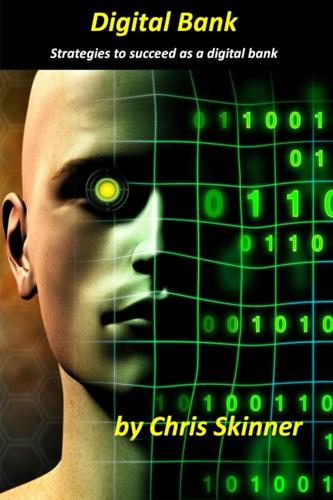
Digital Bank: Strategies for Launching or Becoming a Digital Bank
by
Chris Skinner
Published 27 Aug 2013
As the banking world is being transformed from a world of branches to digital financial experiences, with new partnerships, new forms of commerce, and even new currencies, Chris captures the scope and impact of these changes in an easy to read format. While nobody can be sure exactly how all these changes will impact tomorrow’s financial landscape, Chris combines his perspectives with interviews of some of the today’s most innovative fintech leaders into a book that no traditional or digital banker should ignore.” Copyright © 2013 The Financial Services Club 11 Nelson Villas Quex Road Westgate-on-Sea Kent CT8 8BN Email (for orders and customer service enquiries): kamila@fsclub.co.uk All Rights Reserved. No part of this publication may be reproduced, stored in a retrieval system or transmitted in any form or by any means, electronic, mechanical, photocopying, recording, scanning or otherwise, except under the terms of the Copyright, Designs and Patents Act 1988 or under the terms of a licence issued by the Copyright Licensing Agency Ltd, 90 Tottenham Court Road, London, W1T 4LP, UK, without the permission in writing of the Publisher.
…
The Incubator is a new mechanism created by Innotribe to facilitate exploration of innovative ideas in a collaborative way: it is a framework to enable collaborative innovation at a level up from the ‘proofs of concept’ already facilitated by Innotribe. The Innotribe Start-up Challenge was designed to introduce the most promising FinTech and Financial Services Start-Ups to SWIFT’s community of more than 9,700 banking organisations, securities institutions and corporate customers in 209 countries. THE CURRENCY CLOUD, GLOBAL An interview with Michael Laven, Chief Executive, the Currency Cloud Cloud computing has been around for a while, but still suffers from some extreme views with some considering cloud to just be Amazon Web Services whilst others see this as a way of leveraging new forms of business models.
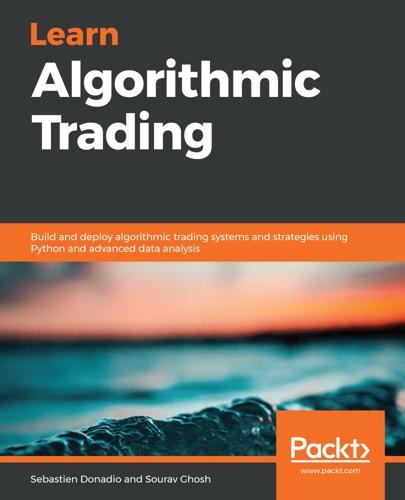
Learn Algorithmic Trading
by
Sebastien Donadio
Published 7 Nov 2019
He specializes in statistical arbitrage market-making, and pairs trading strategies for the most liquid global futures contracts. He works as a Senior Quantitative Developer at a trading firm in Chicago. He holds a Masters in Computer Science from the University of Southern California. His areas of interest include Computer Architecture, FinTech, Probability Theory and Stochastic Processes, Statistical Learning and Inference Methods, and Natural Language Processing. About the reviewers Nataraj Dasgupta is the VP of Advanced Analytics at RxDataScience Inc. He has been in the IT industry for more than 19 years and has worked in the technical & analytics divisions of Philip Morris, IBM, UBS Investment Bank, and Purdue Pharma.
…
Sources of risk Now that we have a good understanding of the different kinds of risk in algorithmic trading, let's look at the factors in algorithmic trading strategy development, optimization, maintenance, and operation that causes them. Software implementation risk A modern algorithmic trading business is essentially a technology business, hence giving birth to the new term FinTech to mean the intersection of finance and technology. Computer software is designed, developed, and tested by humans who are error-prone and sometimes, these errors creep into trading systems and algorithmic trading strategies. Software implementation bugs are often the most overlooked source of risk in algorithmic trading.
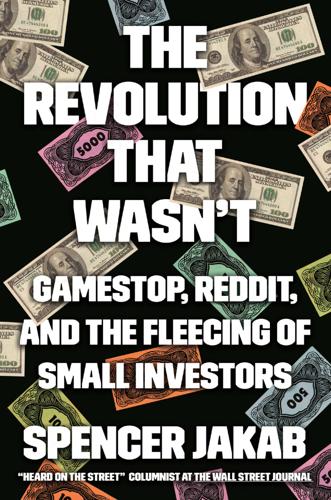
The Revolution That Wasn't: GameStop, Reddit, and the Fleecing of Small Investors
by
Spencer Jakab
Published 1 Feb 2022
The SEC, an organization generally known for bolting the barn door well after the shareholder-abuse horse has bolted, stepped in this time, though only after some of the stock had been sold to the public.[18] Financial pros thought this was funny, but in 2020 it was novices who were laughing all the way to the bank. Aggregating the one hundred most popular stocks bought by Robinhood users in 2020, the fintech blogger Noah Weidner constructed an index called the RH Top 100 Fund that rose by almost 102 percent for the year compared with less than 6 percent for the stodgy Dow Jones Industrial Average.[19] Lottery-Ticket Mentality While it is always better to be lucky than smart, many of the investments favored by Robinhood traders are the sort that do well in times of speculative froth but the worst when the party ends.
…
BACK TO NOTE REFERENCE 4 Telis Demos, “GameStop Stock Frenzy May Not Be So Bad for Wall Street,” The Wall Street Journal, February 1, 2021. BACK TO NOTE REFERENCE 5 Kerry Dolan, Chase Peterson-Whithorn, and Jennifer Wang, “The Forbes World’s Billionaires List,” Forbes, April 6, 2021. BACK TO NOTE REFERENCE 6 Ari Levy, “Fintech Keeps Minting Billionaires as Robinhood Co-founders Prepare for IPO,” CNBC, July 19, 2021. BACK TO NOTE REFERENCE 7 Elizabeth Dilts Marshall, “Client Activity on Morgan Stanley’s E*Trade Is ‘Off the Charts’: CFO,” Reuters, February 25, 2021. BACK TO NOTE REFERENCE 8 Leah Goldman and Dina Spector, “The Sexiest Hedge Fund Managers Alive,” Business Insider Australia, December 23, 2010.
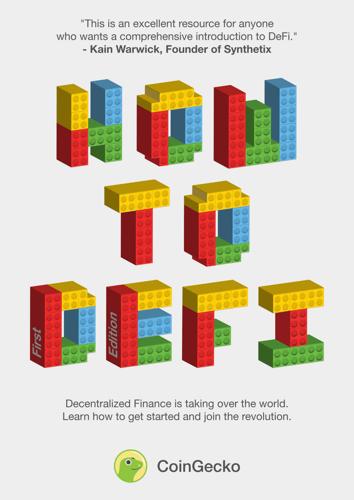
How to DeFi
by
Coingecko
,
Darren Lau
,
Sze Jin Teh
,
Kristian Kho
,
Erina Azmi
,
Tm Lee
and
Bobby Ong
Published 22 Mar 2020
How Long Does It Take to Have a Payment Post Online to Your Bank? Retrieved February 20, 2020, from https://www.gobankingrates.com/banking/checking-account/how-long-payment-posted-online-account/ Demirguc-Kunt, A., Klapper, L., Singer, D., Ansar, S., Hess, J. (2018).The Global Findex Database 2017: Measuring Financial Inclusion and the Fintech Revolution. https://doi.org/10.1596/978-1-4648-1259-0_ch2 How long does an Ethereum transaction really take? (2019, September 25). Retrieved February 20, 2020, from https://ethgasstation.info/blog/ethereum-transaction-how-long/ International Wire Transfers. (n.d.). Retrieved February 20, 2020, from https://www.bankofamerica.com/foreign-exchange/wire-transfer.go Karlan, D., Ratan, A.

Nexus: A Brief History of Information Networks From the Stone Age to AI
by
Yuval Noah Harari
Published 9 Sep 2024
Schlaggar, “The Fallacy of Univariate Solutions to Complex Systems Problems,” Frontiers in Neuroscience 10 (2016), article 267. 40. D’Ignazio and Klein, Data Feminism, 54. 41. Tobias Berg et al., “On the Rise of FinTechs: Credit Scoring Using Digital Footprints,” Review of Financial Studies 33, no. 7 (2020): 2845–97, doi.org/10.1093/rfs/hhz099. 42. Tobias Berg et al., “On the Rise of FinTechs: Credit Scoring Using Digital Footprints,” Review of Financial Studies 33, no. 7 (2020): 2845–97, doi.org/10.1093/rfs/hhz099; Lin Ma et al., “A New Aspect on P2P Online Lending Default Prediction Using Meta-level Phone Usage Data in China,” Decision Support Systems 111 (2018): 60–71; Li Yuan, “Want a Loan in China?
…
Manish Raghavan et al., “Mitigating Bias in Algorithmic Hiring: Evaluating Claims and Practices,” in Proceedings of the 2020 Conference on Fairness, Accountability, and Transparency (2020): 469–81; Nicol Turner Lee and Samantha Lai, “Why New York City Is Cracking Down on AI in Hiring,” Brookings Institution, Dec. 20, 2021, www.brookings.edu/articles/why-new-york-city-is-cracking-down-on-ai-in-hiring/; Sian Townson, “AI Can Make Bank Loans More Fair,” Harvard Business Review, Nov. 6, 2020, hbr.org/2020/11/ai-can-make-bank-loans-more-fair; Robert Bartlett et al., “Consumer-Lending Discrimination in the FinTech Era,” Journal of Financial Economics 143, no. 1 (2022): 30–56; Mugahed A. Al-Antari, “Artificial Intelligence for Medical Diagnostics—Existing and Future AI Technology!,” Diagnostics 13, no. 4 (2023), article 688; Thomas Davenport and Ravi Kalakota, “The Potential for Artificial Intelligence in Healthcare,” Future Healthcare Journal 6, no. 2 (2019): 94–98. 33.

Easy Money: Cryptocurrency, Casino Capitalism, and the Golden Age of Fraud
by
Ben McKenzie
and
Jacob Silverman
Published 17 Jul 2023
Eventually, via sheer force of lobbying muscle, it seemed, the industry would get some version of what it wanted: further legalization of the crypto casino and deeper access to the US banking system—and all the potential retail cash that came with it. This bleak future sent chills down the spines of experts in fraud and financial malfeasance. Mark Hays is senior policy analyst for fintech at Americans for Financial Reform, a nonpartisan, nonprofit coalition of more than 200 groups that aims to address systemic issues within our financial system. Hays made a career out of studying money laundering and other financial crimes. What he saw in crypto gave him flashbacks to the wildly risky financial products that underwrote the 2008 financial crisis.
…
“This is a major red flag that, like, anyone who’s investing should be seriously concerned about, and nobody cares, right?” Practically every claim about Mashinsky’s glittering résumé was inflated, it turned out. He was not nearly the technological trailblazer he had presented himself as. And some of his past companies relied on associations with dubious, even criminal characters, especially in Israel, a center for fintech innovation—and money laundering and fraud. Subsequent reporting by the Times of Israel filled in essential details, helping to form a dark picture of the professional criminal network with ties to Celsius. In many ways, Celsius was a simple Ponzi. It promised payouts that it couldn’t sustain via the gains from its own investments and financial jiujitsu, so it used money from new depositors to pay out previous ones.
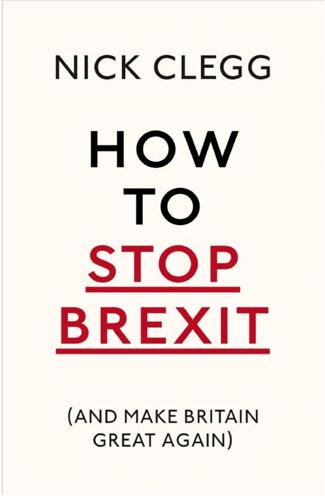
How to Stop Brexit (And Make Britain Great Again)
by
Nick Clegg
Published 11 Oct 2017
In some cases it’s already happening, with companies moving staff and operations to the continent, to be sure of being able to continue to operate there after March 2019: EasyJet’s European HQ is relocating to Vienna. Nestlé Blue Riband production has shifted to Poland. Deutsche Bank, Standard Chartered, J.P. Morgan, Goldman Sachs and other banks have laid out plans to move thousands of jobs out of London, mainly to Frankfurt and Dublin. Money-transfer company Transferwise, one of the biggest fintech firms in Europe, said in early April 2017 that it will move its HQ to the continent. In February, a study from KPMG showed that one in three manufacturing firms plans to shift its operations outside the UK.44 That list will continue to grow, with other banks and insurance companies in particular planning to open new European operations outside the UK.

The AI Economy: Work, Wealth and Welfare in the Robot Age
by
Roger Bootle
Published 4 Sep 2019
For decades, candidates for employment at big firms have had to undergo automated online tests, with the initial weeding-out done without human intervention. Now, though, interviews are increasingly being carried out by computers. Predictably, job candidates are reacting by using AI to prepare themselves to get through job interviews conducted by other forms of AI. A fintech start-up called Finito offers to coach job candidates with its own AI. In China AI is helping to censor the internet, thereby reducing the rapidly increasing burden on human censors. Apparently, machines are very good at recognizing sexual content, and so the human censors need to spend very little time on that, thereby freeing up capacity to concentrate on other, more important, things, such as censoring people saying nasty things about the Communist Party, or President Xi Jinping.
…
But, so far at least, this point remains of only theoretical interest, since Uber currently makes a thumping loss. The benefits of cheaper services The Uber phenomenon is not an isolated example. Most of today’s disruptive technologies are eroding the cosseted position of professionals, skilled workers, and established businesses, thereby benefiting the whole population. This is especially true of the fintech industry, which is eating away at formerly huge margins and spreads in many areas of traditional banking, including foreign exchange, deposit-taking, and lending. The effect is to spread the benefits of the lower costs of providing these services across the whole income distribution. Besides the owners of shares in banks, those losing out will be the various bank workers who have found employment, usually extremely well rewarded, in the banks’ traditional intermediary roles.

Markets, State, and People: Economics for Public Policy
by
Diane Coyle
Published 14 Jan 2020
The financial crisis has also led to higher limits for deposit guarantees in many countries, with the guarantee schemes paid for by a levy on banks. The trouble with this well-meaning regulation is that it is making it harder for new competitors to enter the market. Technology is enabling a wave of “fintech” start-ups offering retail banking services. It will be all the harder for them to challenge the incumbent big-name banks if they have to comply with costly and extensive regulations (box 2.7). Incumbents in many sectors might grumble about red tape, but they do appreciate the way regulation can protect them by acting as a barrier to entry.
…
. *** Metodi Sotirov, Maike Stelter, and Georg Winkel (2017), “The Emergence of the European Union Timber Regulation: How Baptists, Bootleggers, Devil Shifting and Moral Legitimacy Drive Change in the Environmental Governance of Global Timber Trade,” Forest Policy and Economics 81: 69–81. There are other reasons for the prevalence of regulatory capture, as well as unholy alliances: • Powerful potential losers may need to be compensated if regulations are eased or removed. • New sectors, which could counter old lobbies (for example, fintech start-ups versus incumbent big banks), take time to organize their lobbying activity. • Lobbyists may create work to preserve their jobs, even when what they are lobbying for would not be in the interest of their clients. • People hold such strong beliefs that they are unwilling to be pragmatic—like the temperance campaigners or environmentalists in the examples in box 7.3.
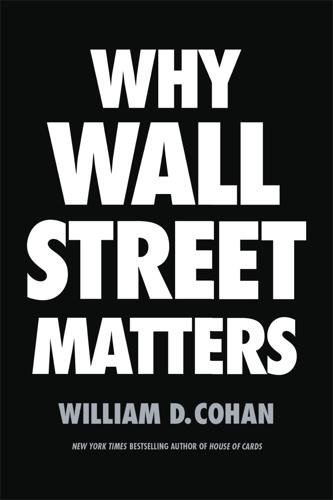
Why Wall Street Matters
by
William D. Cohan
Published 27 Feb 2017
It leads to most people being able to have their own credit card, or many of them—an unsecured line of credit that can be used to buy almost anything. It leads to most Americans being able to get a mortgage to buy a home, or a loan to buy a car or boat, or to borrow money to pay for a college education. It is also leading to a possible new revolution in finance—the so-called fintech industry—where the Internet supposedly eliminates the middlemen and matches investors directly with borrowers. Before the era of financial innovation, spurred on by the IPOs of Wall Street investment banks, it was not possible for an ordinary American to have a credit card or a low-priced mortgage or a car loan.

The Equality Machine: Harnessing Digital Technology for a Brighter, More Inclusive Future
by
Orly Lobel
Published 17 Oct 2022
A 2019 study by researchers at the University of California, Berkeley, found that financial tech algorithms discriminated 40 percent less on average compared to face-to-face interactions for loan pricing.34 The study found that the algorithms did not discriminate in accepting or rejecting loans, and that the strong competition between fintech companies that exclusively deal in electronic lending versus more traditional lenders has led the software to become less biased. Of course, the same commitment to debiasing and detecting exclusions as in hiring and pay must exist in the financial context. The algorithmic model must be designed with a goal of minimizing bias alongside that of maximizing accuracy, and humans must be involved to review and detect any ongoing bias.35 In the credit and lending industry, early decision-making processes replicated past exclusions by considering factors such as marital status, gender, and race.
…
Orly Lobel, “The Debate About How to Classify Workers Is Missing the Bigger Picture,” Harvard Business Review, July 24, 2019, https://hbr.org/2019/07/the-debate-over-how-to-classify-gig-workers-is-missing-the-bigger-picture; Orly Lobel, “The Gig Economy and the Future of Employment and Labor Law,” University of San Francisco Law Review 51, no. 1 (2017): 51; Orly Lobel, “We Are All Gig Workers Now: Online Platforms, Freelancers and the Battles over Employment Status and Rights During the COVID-19 Pandemic,” San Diego Law Review 57, no. 4 (November–December 2020): 919. 34. Robert Bartlett, Adair Morse, Richard Stanton, and Nancy Wallace, “Consumer-Lending Discrimination in the FinTech Era,” Journal of Financial Economics 143, no. 1 (January 2022): 30. 35. Sian Townson, “AI Can Make Bank Loans More Fair,” Harvard Business Review, November 6, 2020, https://hbr.org/2020/11/ai-can-make-bank-loans-more-fair. Chapter 4: #BotToo 1. Jodi Kantor and Megan Twohey, “Harvey Weinstein Paid Off Sexual Harassment Accusers for Decades,” New York Times, October 5, 2017, https://www.ny times.com/2017/10/05/us/harvey-weinstein-harassment-allegations.html. 2.
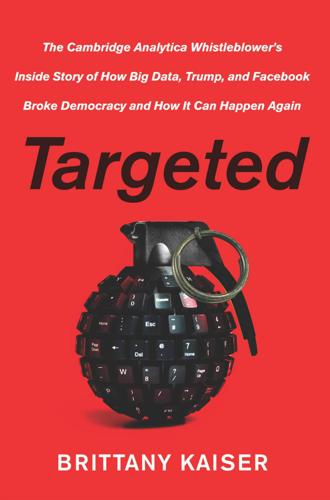
Targeted: The Cambridge Analytica Whistleblower's Inside Story of How Big Data, Trump, and Facebook Broke Democracy and How It Can Happen Again
by
Brittany Kaiser
Published 21 Oct 2019
Between Matt’s contacts in the blockchain industry, my own, and Chester’s contacts around the world, we’d been able to put together a weeklong event called “CryptoHQ,” featuring panels, keynote addresses, and social gatherings of entrepreneurs and thought leaders. Guests included U.S. Treasury Secretary Steve Mnuchin (one of the officials in charge of blockchain policy for the U.S. government); the CEOs of many of the top blockchain companies at the time; mixed with powerful policy leaders such as the head of the European Commission’s FinTech and blockchain strategy. In Davos, Matt and I cochaired the conference with his colleagues from DecentraNet, and we ran the events out of our CryptoHQ “Blockchain Lounge,” a massive three-story affair with a restaurant, après-ski bar, and conference venue, set up on Promenade 67, the main street running through the middle of the World Economic Forum.
…
One of my first big appearances was at the European Parliament, the day before the General Data Protection Regulation was enacted, the first important change to data privacy policy in twenty years. I also spoke on the opening panel of the biggest blockchain conference they had ever had, which was moderated by the former prime minister of Estonia and where I was flanked by a minister of finance and the head of FinTech for the European Central Bank. I appeared at data privacy events and tech meetups, high-level press conferences and news shows. I participated in closed-door meetings with legislators and policy makers worldwide, and became a confidante of reporters around the globe who needed insider information off the record.

Seeking SRE: Conversations About Running Production Systems at Scale
by
David N. Blank-Edelman
Published 16 Sep 2018
A: Early on, we would hear comments from the fintech industry along the lines of, “Sure, chaos engineering is fine at Netflix, but I have actually money on the line. We can’t experiment in production in fintech.” This statement hides a supposition that the likelihood and scope of a failure in the future is known. If the software in question is a complex system, that supposition cannot be true. To put it another way: Would you rather discover chaos in your system in a controlled manner or do you instead want to wait until a failure surprises you? Chaos engineering is now a common practice at many fintech companies as well as large banks and financial asset institutions.

The Lonely Century: How Isolation Imperils Our Future
by
Noreena Hertz
Published 13 May 2020
Douglas Miller and Eric W. Brown, ‘Artificial Intelligence in Medical Practice: The Question to the Answer?’, American Journal of Medicine 131, no. 2 (2018), 129–33, https://doi.org/10.1016/j.amjmed.2017.10.035. 97 ‘The Rise of the Robo-advisor: How Fintech Is Disrupting Retirement’, Knowledge@Wharton, 14 June 2018, https://knowledge.wharton.upenn.edu/article/rise-robo-advisor-fintech-disrupting-retirement/; Charlie Wood, ‘Robot analysts are better than humans at picking stocks, a new study found’, Business Insider, 11 February 2020, https://www.businessinsider.com/robot-analysts-better-than-humans-at-picking-good-investments-study-2020-2?
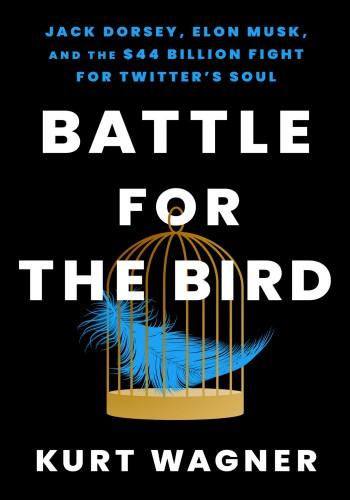
Battle for the Bird: Jack Dorsey, Elon Musk, and the $44 Billion Fight for Twitter's Soul
by
Kurt Wagner
Published 20 Feb 2024
Bitcoin would be worth $100,000 per coin by the end of the year, and $1 million per coin by 2024: Full Send Podcast, “The Secret King of Miami Talks Nightlife & Relationship with Kim Kardashian,” YouTube, 2021, https://www.youtube.com/watch?v=1zwSZwPlO0c. “The whole thing was just poetry”: Africa Fintech Summit, “Fireside Chat with Jack Dorsey—Africa Fintech Summit 2020,” YouTube, 2021, https://www.youtube.com/watch?v=fJqq3STBTgg. Square invested $50 million into Bitcoin to hold on its balance sheet: “Square, Inc. Invests $50 Million in Bitcoin,” press release, Square, October 8, 2020, https://squareup.com/us/en/press/2020-bitcoin-investment.
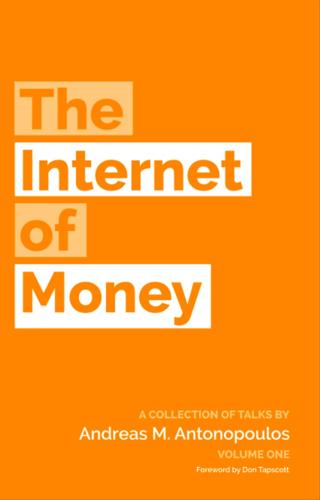
The Internet of Money
by
Andreas M. Antonopoulos
Published 28 Aug 2016
What is the name of your account on Coinbase? It is a checking account, and it has a balance, and it shows you a statement. Who did they hire for this design? What does the word “checking” mean? It means an account on which you can write checks. I know this is America and we’re 25 years behind on fintech. The rest of the world doesn’t do checks, I guarantee you. What is a check? A check is the device by which a grandma can make 20 people in line behind her in the supermarket simultaneously groan. I use it to pay my rent every month. I don’t know why. I can’t do it any other way. It’s insane that I’m signing a piece of paper and sending it through the postal system in 2015.
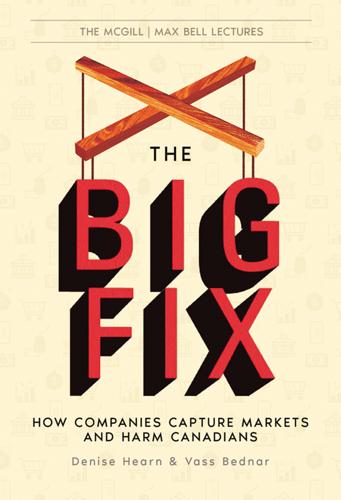
The Big Fix: How Companies Capture Markets and Harm Canadians
by
Denise Hearn
and
Vass Bednar
Published 14 Oct 2024
The company has no-fee banking offerings (PC Money Account), PC Insiders World Elite Mastercard, and boasts the PC Optimum rewards program. Loblaw functions through a few e-commerce platforms, which collectively drove $3.3 billion in revenue in 2023. So, is Loblaw a financial technology company (fintech), a healthcare company, a retailer, a grocer, a real estate company, or something else entirely? Observed through these different functions, the firm seems closer to a super-app than a place you just pop into to grab eggs and milk. Loblaw acknowledged this in its 2023 annual report: The Company competes against a wide variety of retailers including supermarket and retail drug store operators, as well as mass merchandisers, warehouse clubs, online retailers, mail order prescription drug distributors, limited assortment stores, discount stores, convenience stores, and specialty stores.
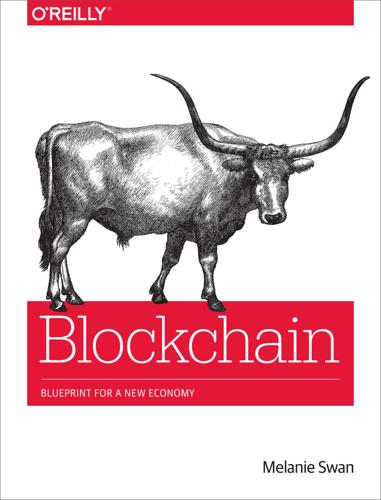
Blockchain: Blueprint for a New Economy
by
Melanie Swan
Published 22 Jan 2014
There are many cryptocurrency security issues to address to engender a crypto-literate public with usable customer wallets, including how to back up your money, what to do if you lose your private key, and what to do if you received a proscribed (i.e., previously stolen) coin in a transaction and now cannot get rid of it. However, these issues are being addressed by the blockchain industry, and alternative currencies can take advantage of being just another node in the ongoing progression of financial technology (fintech) that includes ATMs, online banking, and now Apple Pay. Currency application adoption could be straightforward with trustable usable frontends, but the successful mainstream adoption of beyond-currency blockchain applications could be subtler. For example, virtual notary services seem like a no-brainer for the easy, low-cost, secure, permanent, findable registration of IP, contracts, wills, and similar documents.
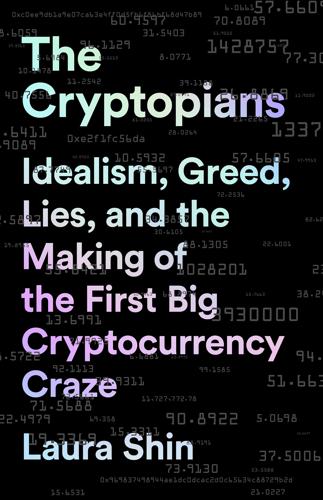
The Cryptopians: Idealism, Greed, Lies, and the Making of the First Big Cryptocurrency Craze
by
Laura Shin
Published 22 Feb 2022
List of Characters Ethereum Cofounders Vitalik Buterin, creator of Ethereum Mihai Alisie, founder of Bitcoin Magazine Anthony Di Iorio, founder and chief executive officer of Decentral, funded Ethereum pre-crowdsale Gavin Wood, started C++ client, chief technology officer (CTO) Jeffrey Wilcke, started Go client (Geth) Charles Hoskinson, CEO Joe Lubin, chief operating officer (COO), founder of ConsenSys Amir Chetrit, cofounder of Colored Coins, a Bitcoin-based project Ethereum Leadership Group Taylor Gerring, director of technology Stephan Tual, community/communications, chief communications officer Staff in Zug, in the Spaceship Roxana Sureanu, executive assistant Mathias Grønnebæk, operational manager Ian Meikle, graphic designer Richard Stott, graphic designer Jeremy Wood, Charles Hoskinson’s assistant Lorenzo Patuzzo, carpenter ETH Dev in Berlin Aeron Buchanan, Gavin Wood’s friend and business partner Jutta Steiner, chief of security Christoph Jentzsch, lead tester Christian Reitwießner, C++ team/Solidity Péter Szilágyi, Geth team Lefteris Karapetsas, C++ team Alex van de Sande (aka Avsa), user experience (UX) designer Bob Summerwill, software engineer, C++ team Kelley Becker, COO Frithjof Weinert, chief financial officer Christian Vömel, office manager Ethereum Foundation Ming Chan, executive director Lars Klawitter, board member from Rolls-Royce Wayne Hennessy-Barrett, board member from Kenyan fintech start-up Vadim Levitin, board member; physician and technologist with United Nations Development Programme background Patrick Storchenegger, board member, Swiss lawyer Hudson Jameson, Ming Chan’s assistant, DevOps (development and operations), helped with DevCons Jamie Pitts, assisted with DevCons Toya Budunggud, Ming Chan’s assistant The DAO/Slock.it Christoph Jentzsch, cofounder, CTO of Slock.it Simon Jentzsch, cofounder, CEO of Slock.it Stephan Tual, cofounder, COO of Slock.it Lefteris Karapetsas, lead technical engineer at Slock.it Griff Green, community organizer at Slock.it Robin Hood Group Jordi Baylina, programmer in Barcelona who took the DAO ninja course Griff Green Lefteris Karapetsas Alex van de Sande (aka Avsa) Fabian Vogelsteller, Ethereum Foundation front-end developer eventually credited as the “father” of the ERC-20 token standard White Hat Group (Known Members) Jordi Baylina Griff Green Lefteris Karapetsas Bity Gian Bochsler, one of four cofounders Alexis Roussel, one of four cofounders, CEO, and chairman of the board MyEtherWallet Taylor Van Orden/Monahan, cofounder and CEO Kosala Hemachandra, cofounder and CTO Poloniex (aka Polo) Tristan D’Agosta, founder and co-CEO Jules Kim, COO and co-CEO Mike Demopoulos, co-CEO and chief experience officer Ruby Hsu, management consultant Johnny Garcia, head of customer support Tyler Frederick, senior compliance specialist Preface IN THE END, it took only seven weeks to trigger the slow-motion toppling of global finance and, though no one saw it then, begin upending the centuries-old method for establishing societal trust.
…
Eventually, they chose a bespectacled Englishman named Lars Klawitter who had an IT background, currently served as a general manager at Rolls-Royce, and had attended London Ethereum meetups and played with Ethereum on his home PCs. He responded to Vitalik’s blog post. The other two selections, Wayne Hennessy-Barrett and Dr. Vadim Levitin, had come in via the Economist, with Wayne having an extensive background in the British army and management consulting; he was now at an African fintech. Vadim had several years’ experience with the UN Development Programme and had been CEO of a global education and training company. Vitalik was the fourth board member. The foundation also advertised for an executive director (ED) to oversee operations in the subsidiaries.1 They interviewed three candidates in person at the upscale, sleek, and minimalist B2 Boutique Hotel + Spa in Zurich, which featured cathedral-like windows and towering bookshelves in its wine library, an infinity pool with views of Zurich and the mountains, and access to thermal baths.
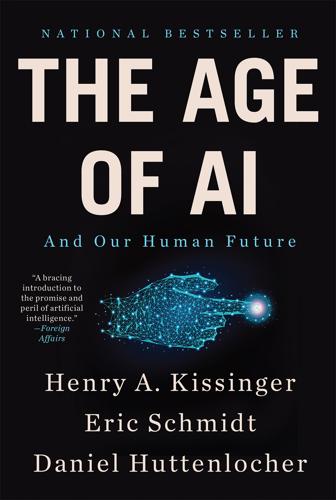
The Age of AI: And Our Human Future
by
Henry A Kissinger
,
Eric Schmidt
and
Daniel Huttenlocher
Published 2 Nov 2021
His research and teaching have been recognized by a number of awards, including an ACM fellowship and CASE Professor of the Year. He has a mix of academic and industry background, having been a computer science faculty member at Cornell, a researcher and manager at the Xerox Palo Alto Research Center (PARC), and the CTO of a fintech start-up. He also has served on a number of boards, including the John D. and Catherine T. MacArthur Foundation, Corning, Inc., and Amazon.com. He received his bachelor’s degree from the University of Michigan, and master’s and doctoral degrees from MIT. NOTES Preface 1. “AI Startups Raised USD734bn in Total Funding in 2020,” Private Equity Wire, November 19, 2020, https://www.privateequitywire.co.uk/2020/11/19/292458/ai-startups-raised-usd734bn-total-funding-2020.
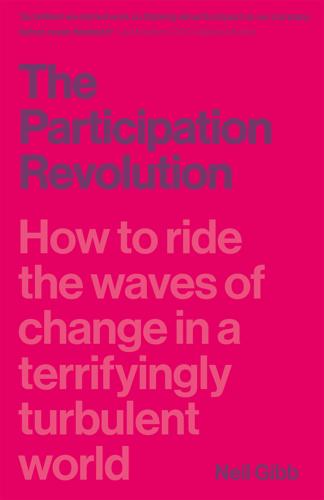
The Participation Revolution: How to Ride the Waves of Change in a Terrifyingly Turbulent World
by
Neil Gibb
Published 15 Feb 2018
It is the organising model of Facebook, Instagram, and YouTube. It is the mechanism that creates the dynamic energy of eBay, Uber, and Airbnb. It drives the explosive growth of participatory activities like yoga and road cycling. It is the system that is driving the high-growth businesses in the new economy – from enterprise start-ups, to fintech, to education, to healthcare. On 15 September 2014, Microsoft bought Mojang for $2.5 billion. At the time of the acquisition, Notch Persson owned 71 percent of its shares. 10. How to be a billionaire in three easy moves: part 3 “What is real? How do you define ‘real’? If you’re talking about what you can feel, what you can smell, what you can taste and see, then ‘real’ is simply electrical signals interpreted by your brain” Morpheus, The Matrix The long white beaches that run down the coast just south of the Borobudur temple in Java, where I hung out with Putri and her friends, have the most fantastic surf.
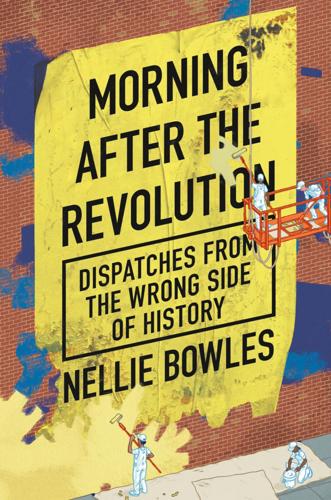
Morning After the Revolution: Dispatches From the Wrong Side of History
by
Nellie Bowles
Published 13 May 2024
Your money and your gender know no borders. A real announcement from a venture capital firm: “Capital Factory welcomes you to our LatinX in Tech Summit presented by Accenture!” Any jobs or sponsorships had to be part of achieving justice. When the Duke and Duchess of Sussex joined Ethic, a fintech asset startup, they told the Times that they “hoped that their involvement would help democratize investing.” Buying a hat from Alexandria Ocasio-Cortez is about solidarity: “Each article of Shop AOC merch signifies solidarity with the movement.” It was a moment for the culture to take advantage of too: When HBO Max relaunched Gossip Girl, it was still about elite New Yorkers, but now, the showrunner said: “These kids wrestle with their privilege in a way that I think the original didn’t.”

Confessions of a Crypto Millionaire: My Unlikely Escape From Corporate America
by
Dan Conway
Published 8 Sep 2019
But as we settled into our dinner routine, Eileen a bit quieter than usual, there was now an edge to my excitement. Chapter Nineteen A New Year A few days after Christmas 2016, Eileen and the kids headed to North Andover, Massachusetts, to visit her family for a week. That was impeccable timing, because I was able to attend the Blockchain Fintech Summit down the road in San Jose on January 3, 2017, without any normal-person obligations. The Summit was vaguely sponsored by the Chinese government, which was interested in crypto and had recently been showing up everywhere. I had trouble sleeping those first days of 2017. I couldn’t pull myself off crypto Twitter, r/EthTrader and Coindesk until late into the evening.
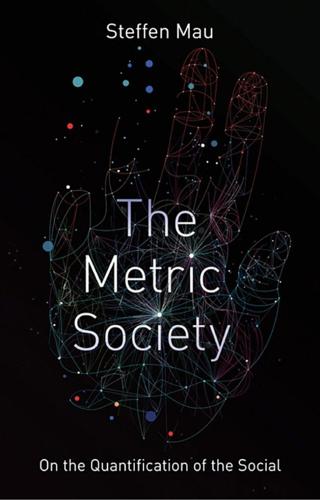
The Metric Society: On the Quantification of the Social
by
Steffen Mau
Published 12 Jun 2017
(Marron 2009: 127) Since social factors, such as information concerning place of residence or occupation, are also incorporated directly or indirectly into the valuation models, individual and collective information becomes intertwined. One conspicuous example of the expanding potential for data access is the New York-based fintech startup Moven: originally founded in 2011 under the name Movenbank, the company has no branches but operates exclusively online, offering an innovative combination of banking, credit card and mobile payment services. Various apps, including a so-called spending meter, are designed to help the customer improve their ‘financial wellbeing’.

Adaptive Markets: Financial Evolution at the Speed of Thought
by
Andrew W. Lo
Published 3 Apr 2017
And if you ignore Warren and move to cash anyway, Warren might remind you after a month or two, when it’s determined that your physiological state is ready for it, that it might be a good time to get back into the market. Sound like science fiction? For the moment, it is. But the technology and know-how exist today to create all of these products and services—even Warren—so it’s only a matter of time and money. Financial technology, or “fintech” as it’s come to be known, is rapidly transforming the personal investing and consumer finance landscape and promises to continue what Bogle and Vanguard started nearly half a century ago. Since dynamic indexes are, in a sense, forms of software, they may even experience the same dramatic fall in cost and increase in capability as other kinds of software.
…
These statistics explain why funding is so scarce for early stage biomedicine, where the scientific uncertainty is the highest and the financial risk is the greatest. Greater risk means less investment. Instead, venture capital has been flowing to lower-hanging fruit like social media, e-commerce, and fintech. Why invest tens to hundreds of millions of dollars, wait ten years, and go bust with high probability when you can invest a few million dollars in an app, wait two years, and sell the company for $25 million to Facebook or Google. These statistics are having a real impact on biomedical innovation, and on patients.
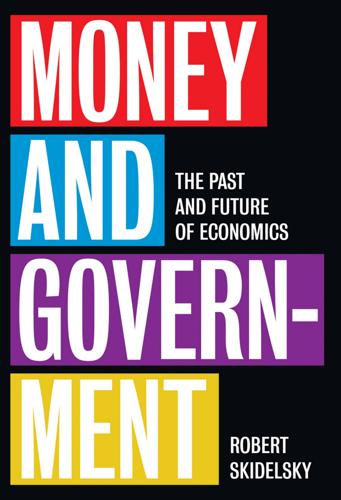
Money and Government: The Past and Future of Economics
by
Robert Skidelsky
Published 13 Nov 2018
The Investment Bank would be capitalized by the state, and empowered to borrow an agreed multiple of its capital for approved purposes; that is, the state would determine the Bank’s strategic direction, and the managers would have full operational independence. Depending on the Bank’s mandate, such purposes might include investments in energy efficiency, long-term loans to small enterprises and start-up companies through a network of local banks, and support for private venture capital initiatives like FinTech. Being state-owned, the Bank’s implicit taxpayer guarantee would enable it to finance projects that would be unviable at the usual risky lending rate. Considered an almost revolutionary innovation in Britain and the United States, public investment banks are up and running in a number of European countries, with good results.9 France, Italy and other countries also have state holding companies, operating transport and public utilities.
…
R., 179 Erie Canal, 90 Eshag, Eprime, 71 European Central Bank, 139, 188, 198, 217, 242–3, 253, 254, 361 institutional constraints on, 50, 234, 242, 249, 274–5 misreading of Eurozone crisis, 275 quantitative easing (QE) by, 273–4 on ‘stress testing’, 364 taxing of ‘excess’ reserves, 266 use of LTROs, 257 European Commission, 139, 3612, 365 European Exchange Rate Mechanism, 188 European Investment Bank, 354 European Union (EU, formerly EEC), 153, 318, 379, 383 Financial Stability Board (FSB), 363 ‘Four Freedoms’, 375 lack of state, 376 Single Resolution Board, 365 Eurozone current account imbalances, 333, 334, 335, 336–7, 341–2 Juncker investment programme, 274 proposed European Monetary Fund, 376, 382 structural flaw in, 341, 375–7 two original sins of, 274, 376–5 Eurozone debt crisis (2010–12), 50, 223, 377, 382 and double-dip recession, 241, 242–3, 274 ECB’s misreading of, 275 and financial crowding-out theory, 234 and Greece, 32, 224, 224–5, 226, 233, 235, 242–3, 243, 365 and ‘troika’, 32, 139, 243 469 i n de x exchange-rate policy, 127–8, 139 and Congdon’s ‘real balance effect’, 285 and domestic interest rates, 251 fixed rates under Bretton Woods, 16, 159, 161, 162, 168 floating rates from 1970s, 16–17, 184 and Friedman, 182 IMF ‘scarce currency’ clause, 380–81 Nixon’s dollar devaluation (1971), 153, 154, 165 and quantitative easing, 267, 267 sterling crisis (1951), 145 sterling devaluation (November 1967), 152 sterling-dollar peg (from 1949), 148, 150, 152 sterling/franc/deutschmark devaluations (1949), 152 ‘Triffin paradox’, 161, 165 ‘expansionary fiscal consolidation’, 192, 225, 231 Fabian socialism, 96 Fama, Eugene, 208, 311–12, 313 Fanny Mae, 217, 256, 309, 320 fascism, 13, 98, 131, 175 Federal Reserve, US and 2008 crash, 50, 217, 254, 256 AIG bail-out (2008), 325 Federal Open Market Committee (FOMC), 185–6 and Great Depression, 104–6 inflation targeting, 188 and monetarism, 185–6, 188 monetary policy in 1950s, 146 ‘Operation Twist’, 268 quantitative easing (QE) by, 256–7, 273–4 ‘Reserve Position Doctrine’ (1920s), 103–4 and under-consumption theory, 298 Ferguson, Niall, 73, 79, 80, 91 financial collapse (2007–8) acute phase, 218–20, 223 ‘Austrian’ explanation, 104, 303 banks as proximate cause, 343, 361, 365 Bear Stearns rescue, 217 British analogies with Greece, 235 British debate after, 225–8 causes of, 3–4, 343–4, 365, 366, 368 central bank responses, 3, 217, 219, 234–5, 253–4, 254, 256–8, 359 comparative recovery patterns, 241–4, 242, 273, 273–4 compared to 1929 crash, 218 Conservative narrative, 226–8, 229–31, 233, 234–5, 237–9 and crisis of conservative economics, 17 and embedded leverage, 318, 322, 325 five distinct stages of crisis, 216–19 ‘global imbalances’ explanation, 11, 331, 333, 336–43, 337 government responses, 3, 217–18, 219–20, 221–36, 237–47 Hayekian view of cause, 303 hysteresis after, 239–41, 240, 241, 370 inequality as deeper cause of, 299–306, 368 Lehman Brothers bankruptcy, 3, 50, 217, 365 leverage (debt to equity) ratios on eve of, 317–18 liquidity-solvency confusion, 317 outbreaks of populism following, 13, 371–3, 376, 383 post-crash deficit, 226–33, 229, 237–8 private debt as proximate cause, 3–4 470 i n de x stagnation of real earnings as deep cause, 4, 303, 367 standard account of origins of, 3–4 as test of two theories, 2–3, 76 theoretical and policy responses, 10, 129, 219–20, 223–36, 237–47 see also austerity policy and under-consumption theory, 303–6 US sub-prime mortgage market, 3, 216, 304–5, 309, 323, 328, 341 see also Great Recession (2008–9) Financial Services Authority, U K, 321–2, 330 financial system and causes of 2008 collapse, 3, 4–5, 253, 307–9, 361 and crisis of conservative economics, 17 deregulation, 307–9, 310–16, 318–22, 328, 332–3, 384 East Asian financial crisis (1997–8), 202, 339, 371, 382 ‘Efficient Market Hypothesis’ (EMH), 311–13, 321–2, 328, 388 ‘financialization’ of the economy, 5, 305, 307–9, 366–7 fraud and criminality, 3, 4, 5, 7, 328, 350, 365–6, 367 and free-market orthodoxy, 5, 308–16 loosening of moral restraints, 319 mark-to-market (M2M) framework, 314 offshore euro-dollar market, 308, 332 privatised gain and socialised loss, 319–20 released from national regulation (1980s/90s), 131, 318–22 structural power of finance, 6–7, 14, 309 systemic under-estimation of risk, 314–16, 316*, 320–22, 323, 329–30 Thatcher’s Big Bang (1980s), 319 tradable public debt instruments, 43, 80–81 Turner’s ‘financial intensity’ concept, 366 unrealism of assumptions, 310–16 value at risk (VaR) framework, 314–15, 315, 330 ‘Washington consensus’ deregulation, 198, 200 see also banks FinTech, 356 First World War, 86, 95, 106–7, 374, 375 ‘fiscal consolidation’, 10–11, 129, 225 Darling’s plan (2009), 225–6 ‘expansionary’, 192, 225, 231 and Osborne, 227–8, 229–30, 231, 233, 237–9, 243–4, 244, 245 fiscal policy and 2008 collapse, 10, 217–18, 219–20, 223–36, 265–6, 273–4, 286 ‘Barber boom’, 167, 168 during Blair-Brown years, 221–4, 223, 225–6, 227 British experience (1692–2012), 77 Congdon’s total rejection of, 280, 285–6 ‘crowding out’ argument, 83–4, 109–11, 226, 233–5 current and capital spending, 107–8, 114, 142, 155–6, 193, 221–3, 237–8, 355–7 directing flow of new spending, 286–7 fiscal multiplier, 110–11, 125–6, 133–6, 138, 230–31, 233, 235, 244–5 471 i n de x fiscal policy – (cont.) in inter-war Britain, 106–17 and Keynesian economics, 2–3, 109, 111, 114–17, 125–7, 129–31, 133–4, 137–8, 173, 278 Keynesian full employment phase (1945–60), 141–8 Krugman’s ‘confidence fairy’, 117 Lawson counterrevolution, 185, 192–3, 222, 358 legacy of monetarism, 190–93 May Committee (1931), 112 national income accounts, 138 New Classical view of, 200 in new macroeconomic constitution, 351–2, 355–7, 360–61 nineteenth-century theory of, 9, 29 post-Keynesian disablement of, 193, 221, 258, 304, 328 pre-crash orthodoxy, 221–2, 223–4, 230–31 Public Sector Borrowing Requirement (PSBR), 155–6 see also balanced budget theory; public investment; taxation Fisher, Irving, 9, 52, 61, 99, 280 ‘compensated dollar’ scheme, 66 equation of exchange, 62–4, 71–2, 258, 278–9, 283, 284, 287 QTM formulation, 62–7, 71–2 and quantitative easing, 258, 278–9 Santa Claus money, 62–4, 258, 278–9 Fitch (CR A), 329 France assignats in 1790s, 64–5 and gold standard, 50, 102, 104, 127 ‘indicative planning’ system, 150 ‘physiocrats’in, 81 protectionism in late nineteenthcentury, 59 state holding companies, 356 statism in, 140, 144 university campus revolts (1968), 164 Freddie Mac, 217, 256, 309, 320 free trade, xviii, 9, 58–9, 76, 79, 81–2 abandoned in Britain (1932), 113 general presumption in favour of, 377 and Hume’s ‘price-specie-flow’ mechanism, 37–8, 53, 54, 104, 332 and Irish potato famine, 15 List’s ‘infant industry’ argument, 88–9, 90, 378–7 and nationalist–globalist split, 371–3 and post-war liberalization, 16, 374 and presumption of peace, 379 repeal of Corn Laws (1846), 15, 85 Ricardo’s doctrine of comparative advantage, 88, 378, 379, 379 US conversion to (1940s), 90 Freiburg School, 140 Friedman, Milton adaptive expectations theory, 180–81, 183, 194, 206–11 and Cartesian distinction, 22 as Fisher’s heir, 278 The Great Contraction (with Schwartz; 1865), 105 idea of ‘helicopter money’, 63 and monetary base, 185, 280 and Mont Pelerin Society, 176–7 and ‘natural’ rate of unemployment, 163, 177, 181, 195, 206, 208 onslaught on Keynesianism, 170, 174, 177–83, 261 ‘permanent income hypothesis’ (1957), 178, 183 and Phillips Curve, 38, 180–81, 194, 206–8, 207 472 i n de x policy implications of work of, 182–3 political motives of, 177, 183–4 and quantity theory, 61, 70, 177–9, 182, 183, 194 ‘stable demand function for money’, 179 view of Great Depression, 104–6, 179, 183, 256, 276, 278 weaknesses in arguments of, 183 Frydman, Roman, 389 Fullarton, John, 49 Funding for Lending programme, 265–6 G20 Financial Stability Board, 363 summits (2009/10), 219–20, 223, 225 G7 finance ministers meeting (February 2010), 224–5 Galbraith, James, 303, 361 game theorists, 389 Gasperin, Simone, 357* Geddes, Sir Eric, 108 German Historical School, 88–9 Germany and 2008 crash, 217, 218, 243 current account surplus, 333, 334, 341, 342, 380, 381 employer–union bargains, 147, 167 and Eurozone crisis, 341, 365, 376, 377 and Great Depression, 97, 111, 129–30 growth Keynesianism (1960–70), 153–4 high growth rates in 1950/60s, 149, 156 Hitler’s reduction in unemployment, 111, 112, 129–30 hyperinflation of early 1920s, 275 as Keynesian in 1960s, 140 nineteenth-century expansion and unification, 89, 91 ‘ordo-liberalism’ in, 140 post-war modernization/catch-up, 156–7 protectionism in late nineteenthcentury, 59 return to gold standard (1924), 102 ‘Rhenish capitalism’ model, 154 Giffen, Robert, 51 Giles, Chris, 219, 302 Gini coefficient, 299, 300 Gladstone, William, 42–3, 86 Glass–Steagall Act (1933), 319, 361, 362 global imbalances basic theory of, 335–6 and capital account liberalization, 318–19 capital flight, 59, 334, 337, 341, 343 Eurozone see Eurozone: current account imbalances as explanation for 2007–8 crash, 11, 331, 333, 336–43, 337 and financial deregulation, 318–19, 332–3 and First World War, 95 increases in pre-crash years, 333, 333–4, 334, 335 problematic nature of, 333–4 reserve accumulation, 336, 337–41 ‘saving glut’ vs ‘money’ glut, 338–41, 342 structural causes still in place, 344 US dollar as main reserve currency, 338 global warming, 383 globalization, 17, 300, 334–5 absence of the state, 350, 373, 375–6 anti-globalist movements, 371–2, 373 first age of, 51, 55, 57, 59, 374, 375 473 i n de x globalization – (cont.) future of, 382–4 Geneva and Seattle protests (1998/99), 371 and inflation rate, 252–3 and lower wages in developed world, 252–3, 300, 379 nationalist-globalist split, 371–3 ‘neo-liberal’ agenda of IMF, 139, 181, 318–19 popular protest against, 351, 371–2 resurgence of after Cold War, 374 Rodrik’s ‘impossible trinity’, 375 gold, 23, 24, 25, 28, 35, 37 new gold production, 51, 52, 55, 62 gold standard, xviii, 1, 9, 27, 29, 338 and Britain, 9, 42, 43, 44, 45–50, 53, 57–9, 80, 101, 102, 113 collapse of US exchange standard (1971), 160, 165 commitment to convertibility, 55–6 and Cunliffe model, 54–5, 102 depressions in later nineteenthcentury, 51–2 dysfunctional after First World War, 95, 97 final suspension in Britain (1931), 113, 125 Fisher’s ‘compensated dollar’ scheme, 66 Hume’s ‘price-specie-flow’ mechanism, 37–8, 53, 54, 104, 285, 332 and international bond markets, 92 as international by 1880s, 50–52 Keynes on, 58, 101, 127 Kindleberger thesis, 58–9 move to ‘managed’ system, 71, 99–100 replaces silver standard (1690s), 42, 43 restored (1821), 48 return to in 1920s, 102, 104, 107 suspension during Napoleonic wars, 43, 45–7 suspension of convertibility (1919), 101–2 triumph of by mid-nineteenthcentury, 44, 50 working and design of, 52–9 as working in tandem with empire, 57, 58 Goldberg, Michael D., 389 Goldman Sachs, 315 Goodhart, Charles, 168, 187 Graeber, David, 28 Great Depression (1929–32), 9, 13, 96, 97–8, 110–13, 127 compared to 2008 crash, 218 Friedman-Schwartz view, 104–6, 179, 183, 256, 276, 278 impact on US policy-makers in 2008 period, 256, 275, 278 left-wing explanations of, 298 rise in inequality in lead-up to, 289 and second wave of collectivism, 15–16 Great Moderation (early 1990s–2007), 4, 53, 202, 278 economic problems during, 348 financial deregulation during, 318–22, 328 financial innovation during, 322–8 and independent central banks, 215 inflation during, 106, 215, 216, 252–3, 253, 348, 359, 360 international financial network, 309, 318–28 output growth during, 215, 253, 348 Great Recession (2008–9), xviii Congdon’s view of, 281–2, 287 co-ordinated global response, 219–20, 383 decline in productivity after, 305–6 474 i n de x initial signs of recovery (2009), 218–19, 225, 226 monetary interpretation of, 105, 106 ‘premature withdrawal’ of fiscal stimulus, 219–20, 223–36, 245, 352 reform agenda after, 361–8 rise in inequality in lead-up to, 289–90, 299–300 see also financial collapse (2007–8) Greece and Eurozone debt crisis, 32, 224, 224–5, 226, 233, 235, 242–3, 243, 337, 341, 365 in gold standard era, 59 Greenspan, Alan, 188, 313 Hamilton, Alexander, 88, 90, 92 Hammond, Philip, 236, 352 Hannover Re scandal, 329 Harrison, George, 105 Harrod, Roy, 123 Harvey, John, 333, 387 Hawtrey, Ralph, 109–10, 280 Hayek, Friedrich, 33, 46, 177, 195, 350, 367 founds Mont Pelerin Society, 176 ‘over-consumption’ theory, 296 The Road to Serfdom (1944), 16, 175–6 on Wall Street Crash, 104 Heath, Edward, 167–8 Heckscher, Eli, 37 Help to Buy programme, 265, 266 Henderson, Hubert, 109 Henderson, W.
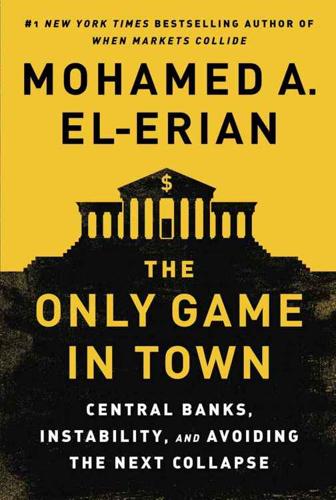
The Only Game in Town: Central Banks, Instability, and Avoiding the Next Collapse
by
Mohamed A. El-Erian
Published 26 Jan 2016
The influx of greater cognitive diversity makes the industry more dynamic, including by encouraging providers to go beyond their traditional client acquisition and product focus to also encompass more holistic customer-centered solutions. Institutions that choose to align their products and services with their clients’ long-term success become better positioned for commercial success. A more “democratized” techno-financial (or “FinTech”) infrastructure has a better chance of aligning providers’ priorities with consumers’ genuine need for financial services and solutions. Along with big data, through the incorporation of behavioral finance (that is, a better understanding of how cognitive and psychological factors impact financial behavior), disruptive forces are also helping gradually wean the industry off its obsession with inevitably partial FICO credit scores in favor of analytical models more finely calibrated with financial health.
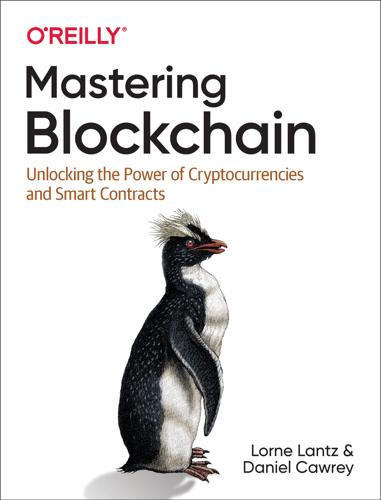
Mastering Blockchain: Unlocking the Power of Cryptocurrencies and Smart Contracts
by
Lorne Lantz
and
Daniel Cawrey
Published 8 Dec 2020
Jeremy Allaire, CEO Circle Internet Financial Cofounder, Centre USD Stablecoin Consortium As someone who teaches blockchain, this book would be a great accompaniment to a course, providing a much more robust offering than almost anything I have come across. Dr. Jimmie Lenz, Executive Director, Master of Engineering in FinTech and Master of Engineering in Cybersecurity, Pratt School of Engineering at Duke University After years of hype, pipe-dreams, and snake-oil, we now have a balanced, sensible, and comprehensive book on the essentials of blockchain technology. Mastering Blockchain is the O’Reilly book that IT professionals need in order to figure out where and how to use blockchain in serious production applications.
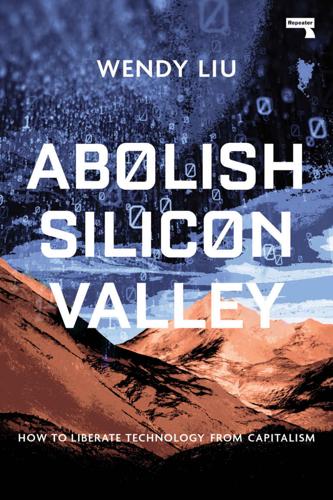
Abolish Silicon Valley: How to Liberate Technology From Capitalism
by
Wendy Liu
Published 22 Mar 2020
It was a little like group therapy for burnt-out startup founders, with the topics of discussions provided by TechCrunch headlines or VC Twitter: chatbot startups, self-driving cars, which latest tech luminary was accused of sexual harassment. Nick brought up health-tech, which Liam and I vetoed because we had no expertise in that field; I suggested something to do with food, despite having no expertise in that either. Liam babbled about fin-tech companies with the potential to democratise finance. As long as we kept talking, eventually an idea would take root. Some days, I worried that we were fooling ourselves. There was no guarantee that we would find the right idea immediately, and the thought of more pivots on the horizon was unbearable.

The Power Law: Venture Capital and the Making of the New Future
by
Sebastian Mallaby
Published 1 Feb 2022
Most of the modern Sequoia’s venture triumphs can be traced to this sort of systematic work, put in place in the first years of the new century. By recruiting the young Roelof Botha and deliberately building his credentials, Sequoia laid the groundwork for billions of dollars of profits. After his wins in YouTube and Xoom, Botha followed up with a string of grand slams: the fintech company Square, the genetics testing outfits Natera and 23andMe, the social-media hit Instagram, and the database innovator MongoDB. When Forbes published its Midas List in April 2020, Botha ranked third. Five months later, he celebrated the stock market debut of the 3-D software platform Unity and a gain for Sequoia of more than $6 billion.
…
The venture team persuaded Meg Whitman (right) to quit a safe corporate job and make the leap to run an obscure startup. Derided by some as a Beanie Baby trading site, eBay generated a $5 billion profit for Benchmark. Prodded by Sequoia, Peter Thiel (left) and Elon Musk (right) merged their startups to create PayPal, the precursor to today’s fintech companies. Later, Thiel’s loyalists ousted Musk while he was abroad on honeymoon. Thiel went on to back a string of hit ventures, including Facebook and Musk’s company, SpaceX. He went further than other VCs in expounding on the significance of the power law. The youngest woman to make partner at Goldman Sachs, Shirley Lin brought the U.S. venture playbook to China, backing a slew of internet startups, including Alibaba.

Scary Smart: The Future of Artificial Intelligence and How You Can Save Our World
by
Mo Gawdat
Published 29 Sep 2021
So don’t approve of killing machines, even if you are patriotic and they are killing on behalf of your own country. Don’t keep feeding the recommendation engines of social media with hours and hours of your daily life. Don’t ever click on content recommended to you, search for what you actually need and don’t click on ads. Don’t approve of FinTech AI that uses machine intelligence to trade or aid the wealth concentration of a few. Don’t share about these on your LinkedIn page. Don’t celebrate them. Stop using deepfakes – a video of a person in which their face or body has been digitally altered so that they appear to be someone else. Resist the urge to use photo editors to change your own look.

Infinite Detail
by
Tim Maughan
Published 1 Apr 2019
He could, of course, take a snap of Rush’s face and run it through Google, and blink through to any one of the top results: VICE, the BBC, the Times, even, then he’d know exactly who he was dealing with. But perhaps he can’t bring himself to expend the energy either. “I, ah … I work with computers.” Rush laughs quietly. Doesn’t everyone? “It’s not very interesting, really.” “Fintech?” “No. No, not at all. Security, mainly.” He tries to deflect. “And you?” “Ah, that’s not very interesting either. I’m a trader. Y’know.” He shrugs. “Oh, really? I didn’t think people did that anymore.” Brad laughs. “Touché. Yeah, it’s all pretty automated now. Most of what I do is software procurement.

Lab Rats: How Silicon Valley Made Work Miserable for the Rest of Us
by
Dan Lyons
Published 22 Oct 2018
Brick-and-mortar retailers are being wiped out so fast that people call it the “retail apocalypse.” Toys “R” Us bit the dust in 2018. Sears is circling the drain. A quarter of the malls in the United States will be out of business by 2022. Next on the menu are Hollywood, Detroit, and Wall Street. Fintech companies want to kill off the banks and manage your money. Amazon and Netflix are making movies and TV shows. No matter what business you’re in, some VC-funded techie is scheming to destroy your company and steal your business. Big companies have good reason to be scared, but their anxiety is making them crazy.

Artificial Unintelligence: How Computers Misunderstand the World
by
Meredith Broussard
Published 19 Apr 2018
OpenBazaar exists as little more than a proof of concept: the plan was sketched out by a group of hackers in Toronto in mid-April, where they won the $20,000 first prize for their idea.”11 Two years later, an entrepreneur named Brian Hoffman took the OpenBazaar code, commercialized it, and got a $3 million investment from venture capital firms Union Square Ventures and Andreesen Horowitz to run the marketplace using Bitcoin, an alternative digital currency. In this, we can see the libertarian paradise that Thiel and others imagine: a new space, beyond the reach of government. It seems that their plan is working. Lend Edu, a fintech firm, surveyed millennials about their use of Venmo, a payments app owned by PayPal. Thirty-three percent of respondents said they had used Venmo to buy marijuana, Aderall, cocaine, or other illegal narcotics.12 A site called Vicemo.com boasts the tagline “See who’s buying drugs, booze, and sex on Venmo.”

Live Work Work Work Die: A Journey Into the Savage Heart of Silicon Valley
by
Corey Pein
Published 23 Apr 2018
“Fail Wall” Julie Balise, “At NerdWallet, Nerds and Finance Rule,” June 17, 2015, sfgate.com. “room to grow” Joe Gose, “Office REITs Counting on Record Rent Levels in San Francisco,” September 3, 2014, theregistrysf.com; Dan Levy, “San Francisco’s Blighted Market Street Reborn as Tech Hub,” September 18, 2013, bloomberg.com. Tim Chen Jonathan Shieber, “Scorching FinTech Market Keeps Attracting New Players as NerdWallet Raises $64 Million,” May 11, 2015, techcrunch.com. The robot’s owner Evgenia Peretz, “Bluebloods and Billionaires,” October 2013, vanityfair.com. “a trail of robot pieces” Philip Matier and Andrew Ross, “Goliath the Robot Attacked in Pacific Heights,” January 8, 2006, sfgate.com.
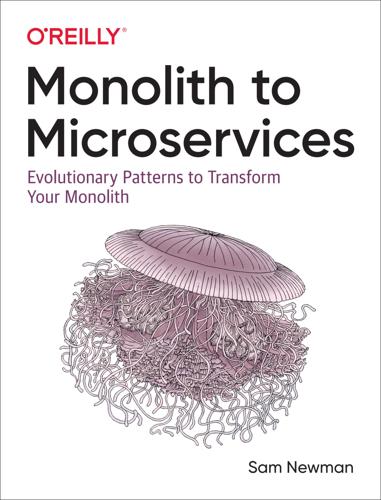
Monolith to Microservices: Evolutionary Patterns to Transform Your Monolith
by
Sam Newman
Published 14 Nov 2019
For collective ownership to work, the collective needs to be well-connected enough to have a common shared understanding of what a good change looks like, and in which direction you want to take a specific service from a technical point of view. Left alone, at scale I’ve seen collective code ownership be disastrous for a microservice architecture. One fintech company I spoke to shared stories of a small team experiencing rapid growth, moving from 30–40 developers to over 100, but without any assigned responsibilities for different parts of the system or any concept of ownership other than “people know what is right.” What emerged was no clear vision for the system architecture as it evolved, and a horribly tangled “distributed monolith.”
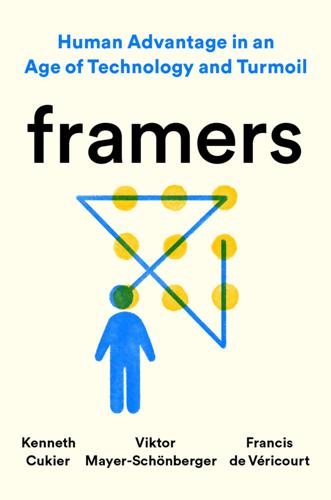
Framers: Human Advantage in an Age of Technology and Turmoil
by
Kenneth Cukier
,
Viktor Mayer-Schönberger
and
Francis de Véricourt
Published 10 May 2021
Large, monolithic companies, run by all-powerful leaders, stand like totems towering over Lilliputian start-ups. Whether a Caltech research scientist or a hacker high-school dropout, the people seem to lack cognitive diversity; the social equivalent of Norwegian board directors. Patrick Collison, the founder of the fintech firm Stripe, and Tyler Cowen, an economist, have called for a new discipline of “progress studies,” to understand in greater detail why some innovative ecosystems do better than others—and how to sustain success. Perhaps the geeks resemble clones of one another because they have all gone through Joel Podolny’s classes at Apple University only to strive to “think different” in the same way.

Restarting the Future: How to Fix the Intangible Economy
by
Jonathan Haskel
and
Stian Westlake
Published 4 Apr 2022
The companies would be required to take out liability insurance, or in some cases the regulator itself may offer insurance (at a price) if the private sector will not insure an innovative business. This approach already exists in health care, where treatments that haven’t received regulatory approval are allowed to be used under certain circumstances. It also exists to some extent in fintech (innovations in the financial and technology crossover space). The regulator would have two responsibilities here: (1) it would allow into the market innovative companies that would otherwise be blocked by regulation and (2) it would be responsible for negotiating with the sector regulators to change the rules so that those innovative new companies can continue to operate in the long run.
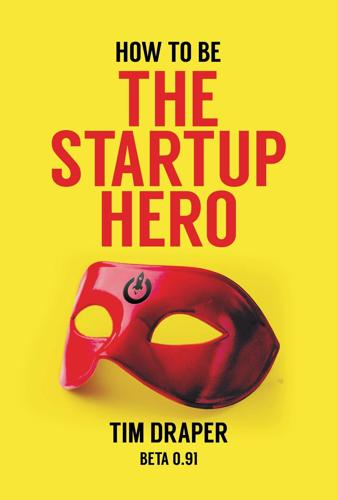
How to Be the Startup Hero: A Guide and Textbook for Entrepreneurs and Aspiring Entrepreneurs
by
Tim Draper
Published 18 Dec 2017
Many new markets are available to you where entrenched monopolists have wallowed for years. Technologies like location-specific marketplaces, crowdsourcing, GPS, drones, big data, Bitcoin, blockchain, ICOs, DNA sequencing, CRISPR, solar and other alternative sources of power, and many others will allow you to pursue new markets in the FinTech, EdTech, GovTech, MedTech, TransporTech, and AgTech worlds. Your businesses can take advantage of platforms that people that started those monopolies only dreamed of back then. The world needs more Startup Heroes, and we just got 60 more of them. I am now proud to introduce the world to a new class of Startup Heroes.

Private Equity: A Memoir
by
Carrie Sun
Published 13 Feb 2024
Morgan was one of our prime brokers, which meant that it acted as a one-stop shop, providing us with a menu of services in support of complex and large-scale trading. Days ago, Boone had tasked me with scripting his and Jamie’s fireside chat onstage. I had asked Boone, What theme? “The future of finance.” Okay, not broad. What else? “Fintech.” He paused for a second and added, “Jamie’s doing us a huge favor, so don’t be weird.” I assured him that I would be normal. I watched hours and hours of Jamie’s interviews on YouTube. I read research reports on J.P. Morgan published by others on the sell side. Most important, I called our broker, who had a direct line to those who were a constant presence in Jamie’s life.
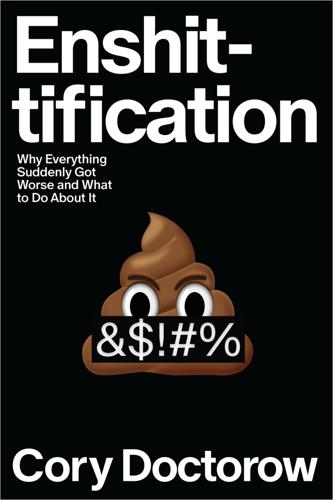
Enshittification: Why Everything Suddenly Got Worse and What to Do About It
by
Cory Doctorow
Published 6 Oct 2025
Tech-like apps can obfuscate what’s really going on, sloshing a coat of complexity over a business that allows its owners to claim that they’re not breaking the law. (“It’s not an illegal unregulated hotel, it’s an Airbnb!”) Riley Quinn, showrunner for the excellent Trashfuture podcast, says that whenever you hear the word fintech (financial technology), you should mentally substitute unregulated bank. App-based lending platforms ignore usury law and say it doesn’t count because they do it with an app. Cryptocurrency hustlers illegally trade in unregistered securities and say it doesn’t count because they do it with an app.
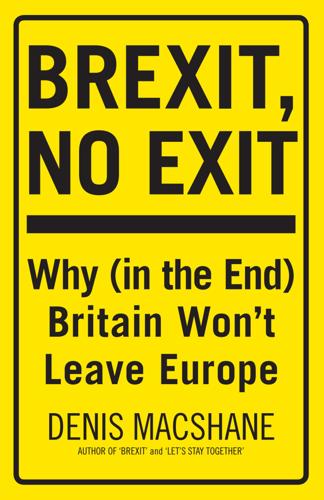
Brexit, No Exit: Why in the End Britain Won't Leave Europe
by
Denis MacShane
Published 14 Jul 2017
British universities delivered graduates with high-quality degrees in mathematics and other subjects who would produce the algorithms and computer programmes that drove the constant search for higher return on investment. According to economist Douglas McWilliams in his 2015 book The Flat White Economy: In the five years to 2013 London fintech (financial technology) growth was twice that of Silicon Valley. The UK and Ireland (which is, in practice, chiefly a London measure) account for more than 50 per cent of European Technology venture capital measured by number of deals – and 69 per cent measured by funds invested. The new oligarch class from energy- and raw-material-rich states like those of the former USSR and from Asia loved to come to London to invest their money, buy or rent elite property, send their children to elite private schools and splash their money in Bond or Sloane Street or expensive restaurants, all of which generated work and incomes for hundreds of thousands who in turn kept the London economy churning.
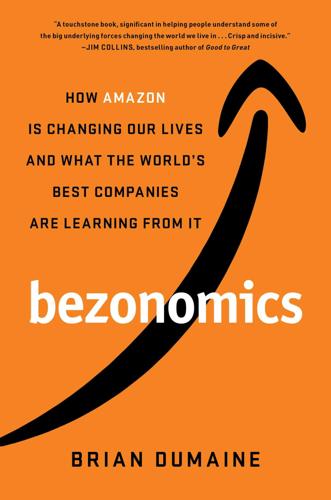
Bezonomics: How Amazon Is Changing Our Lives and What the World's Best Companies Are Learning From It
by
Brian Dumaine
Published 11 May 2020
According to Peeyush Nahar: “Amazon Loaned $1 Billion to Merchants to Boost Sales on Its Marketplace,” Reuters, June 8, 2017. “Small businesses are in our DNA”: “Amazon Loans More Than $3 Billion to Over 20,000 Small Businesses,” BusinessWire, June 8, 2017. An October 2018 report by the research firm CB Insights: “What the Largest Global Fintech Can Teach Us About What’s Next in Financial Services,” CB Insights, October 4, 2018. America is where Amazon could make inroads: Rimma Kats, “The Mobile Payments Series: US,” eMarketer, November 9, 2018; “About PayPal: Top Competitors of PayPal in the Datanyze Universe,” Datanyze.com, https://www.datanyze.com/market-share/payment-processing/paypal-market-share.

The Big Nine: How the Tech Titans and Their Thinking Machines Could Warp Humanity
by
Amy Webb
Published 5 Mar 2019
In late 2017, modeling and analysis my Future Today Institute team and I did showed that AI has the potential to boost China’s economy 28% by 2035. AI—fueled by the sheer number of Chinese people and their data, widespread automation, machine learning and self-correction at scale, and improvements in capital efficiencies—will stimulate growth across Chinese manufacturing, agriculture, retail, fin-tech and financial services, transportation, utilities, health care, and entertainment media (including platforms). Right now, there is no other country on Earth with as much data as China, as many people as China, and as many electronics per capita. No other country is positioned to have a bigger economy than America’s within our lifetimes.
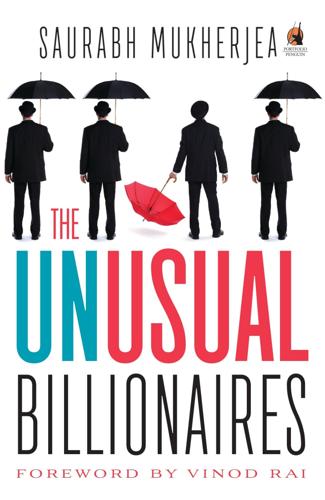
The Unusual Billionaires
by
Saurabh Mukherjea
Published 16 Aug 2016
During the end of this phase, HDFC Bank started a major push towards digital banking as the increase in mobile network speed enabled many services to move online. For example, people now book movie tickets on their BookMyShow app instead of queuing up outside a movie theatre. Financial technology (fintech) companies like Alipay and loan.com had started to encroach on areas which were once the reserve of traditional banks. Moreover, the RBI also granted payments bank licences to ten players in 2015. Puri is aware of the threat posed by the digital world. ‘For a banker who has breathed banking for over forty years in ten countries, I was curious to know where the disruptions were happening.
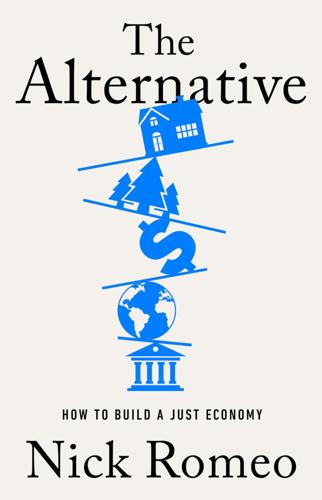
The Alternative: How to Build a Just Economy
by
Nick Romeo
Published 15 Jan 2024
“Investing for Impact: The Global Impact Investing Market 2020,” https://www.ifc.org/wps/wcm/connect/Publications_EXT_Content/IFC_External_Publication_Site/Publications_Listing_Page/impact-investing-market-2020. 40. Kristie Pladson, “Davos: Green Transition Is ‘$50-Trillion Opportunity,’” Deutsche Welle, January 28, 2021, https://www.dw.com/en/davos-green-transition-is-50-trillion-investment-opportunity/a-56375018. 41. Emily Flitter, “New Candidate for Top Bank Regulator Sees Risks in Crypto and Fintechs,” New York Times, August 5, 2021, https://www.nytimes.com/2021/08/05/business/occ-comptroller-Saule-Omarova.html. 42. David Gura, “Saule Omarova Gets Candid: Banks Sank Her Nomination to Become a Key Regulator,” Morning Edition, NPR, December 13, 2021, https://www.npr.org/2021/12/13/1063767973/saule-omarova-gets-candid-banks-sank-her-nomination-to-head-occ. 43.
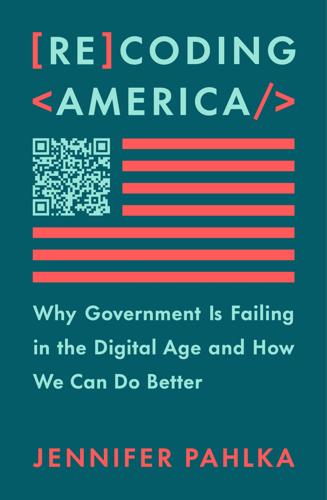
Recoding America: Why Government Is Failing in the Digital Age and How We Can Do Better
by
Jennifer Pahlka
Published 12 Jun 2023
Would it ever occur to you that the best use of their talents might be working alongside the head of the Domestic Policy Council in the White House? Could you picture them applying for food stamps and reinventing benefits enrollment? Or writing algorithms to clear outdated criminal records? If the first thing that came to mind was none of those but a job in big tech, fintech, or a startup, you wouldn’t be alone. That’s where many of us tend to think tech talent belongs. But we can think otherwise. While there are many things that make it hard, most notably an excruciatingly slow and illogical hiring process, there is no law that says government can’t have the tech talent it needs.
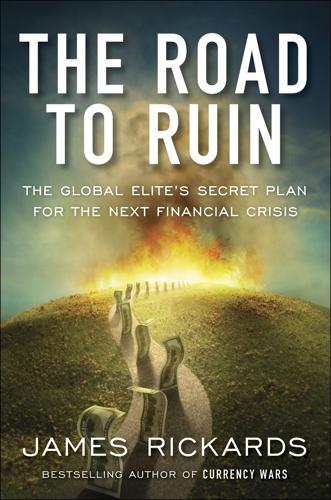
The Road to Ruin: The Global Elites' Secret Plan for the Next Financial Crisis
by
James Rickards
Published 15 Nov 2016
The superstructure of a robust all-weather portfolio to preserve wealth in the coming collapse and mitigate an ice-nine asset freeze looks like this: Physical gold and silver, 10 percent (coins and bars, no numismatics) Cash, 30 percent (some in physical notes) Real estate, 20 percent (income producing or agricultural) Fine art fund, 5 percent (museum quality only) Angel and early venture capital, 10 percent (FinTech, natural resource, water) Hedge funds, 5 percent (global macro, long-short equity, or arbitrage) Bonds, 10 percent (high-quality sovereigns only) Stocks, 10 percent (natural resource, mining, energy, utilities, tech only) A family business should not be counted among investible assets. It should be held outside this portfolio.
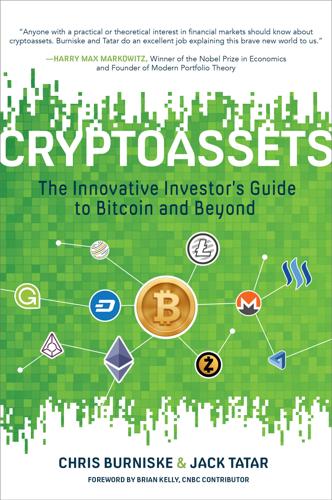
Cryptoassets: The Innovative Investor's Guide to Bitcoin and Beyond: The Innovative Investor's Guide to Bitcoin and Beyond
by
Chris Burniske
and
Jack Tatar
Published 19 Oct 2017
A must-read to appreciate the Bitcoin network effect and the wave of innovation that it launched through the community of people who played critical roles in creating all the distributed ecosystems that are transforming business models. —CRISTINA DOLAN, cofounder and COO of InsureX Crypto trading and the FinTech innovations unlocked by blockchains will do to Wall Street what personal Internet publishing and blogging did to media empires. This power shift is inevitable. Capital allocation no longer needs to be managed by powerful institutions which have proven to be corrupt and reckless. Regulation and regulatory capture is putting the U.S. at risk of losing out in the transition.

The Deep Learning Revolution (The MIT Press)
by
Terrence J. Sejnowski
Published 27 Sep 2018
Through the Simons Institute for the Theory of Computing at UC Berkeley, the Simons Center for the Social Brain at MIT, and the Flatiron Institute in New York, Shaw’s philanthropy has had a major impact on advancing computational methods for data analysis, modeling, and simulation.24 Financial services more broadly are undergoing a transformation under the banner of financial technology, or “fintech,” as it has come to be called. Information technology such as block chain, which is a secure Internet ledger that replaces financial middlemen in transactions, is being tested on a small scale but could soon disrupt multitrillion-dollar financial markets. Machine learning is being used to improve credit evaluation on loans, to accurately deliver business and financial information, to pick up signals on The Rise of Machine Learning 15 social media that predict market trends, and to provide biometric security for financial transactions.

Brotopia: Breaking Up the Boys' Club of Silicon Valley
by
Emily Chang
Published 6 Feb 2018
Her comment triggered the typical social-media uproar, but there is some truth to it. In a comprehensive survey in 2017, TechCrunch found that 31 percent of start-ups with a female founder focused on e-commerce. Other sectors popular among women were education, health care, and media and entertainment. But the vast majority of venture capital in 2016 went into fintech (meaning financial tech, such as apps that disrupt banking and retirement planning), security, genetics, augmented and virtual reality, and artificial intelligence, in addition to an outsize amount in transportation (dominated by funding of Uber, Lyft, and other ride-hailing services). These numbers indicate a big mismatch between ideas that attract mostly male VCs and ideas that attract female entrepreneurs.
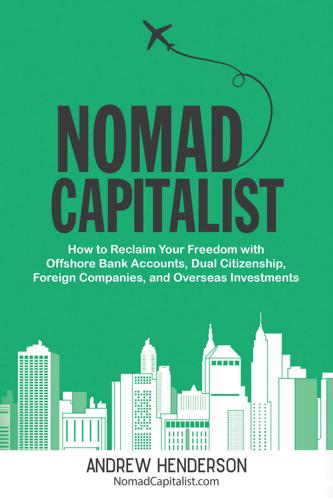
Nomad Capitalist: How to Reclaim Your Freedom With Offshore Bank Accounts, Dual Citizenship, Foreign Companies, and Overseas Investments
by
Andrew Henderson
Published 8 Apr 2018
Though Eastern Europe is also a good place to live, hire, and run a business, Southeast Asia’s competitive edge is that it has larger domestic markets. Companies from Rocket Internet to Lazada have poured into Singapore, Malaysia, Thailand, and even more developing markets like Cambodia. Today, some of these countries represent the hottest commodities in the tech space, from regional e-commerce to SaaS to FinTech and more. In Malaysia, Penang is the hotspot for start-ups. It offers a diverse workforce and a culture far more open to foreign business than Thailand. Vietnam has a huge domestic market of 92 million people, among the largest in Asia, and its role in the region will likely only increase. Major investment is driving the startup scene there, as is a small incubator and a new innovation fair that aims to make Da Nang the ‘Innovation Hub by the Sea.’

Genius Makers: The Mavericks Who Brought A. I. To Google, Facebook, and the World
by
Cade Metz
Published 15 Mar 2021
LI DENG, the researcher who brought Geoff Hinton’s ideas to Microsoft. PETER LEE, head of research. SATYA NADELLA, CEO. AT OPENAI SAM ALTMAN, the president of Silicon Valley start-up incubator Y Combinator who became OpenAI’s CEO. GREG BROCKMAN, the former chief technology officer of fintech start-up Stripe who helped build OpenAI. ELON MUSK, the CEO of electric car maker Tesla and rocket company SpaceX who helped create OpenAI. ILYA SUTSKEVER, the Geoff Hinton protégé who left Google Brain to join OpenAI, the San Francisco AI lab created in response to DeepMind. WOJCIECH ZAREMBA, the former Google and Facebook researcher who was one of OpenAI’s first hires.

Mood Machine: The Rise of Spotify and the Costs of the Perfect Playlist
by
Liz Pelly
Published 7 Jan 2025
Sveriges Ingenjörer, which had been helping Spotify workers in their fight for a collective agreement, offered a response debunking the pamphlet, line by line. “A collective agreement provides security,” they wrote. “It is a solid foundation and not an obstacle that would prevent Spotify from continuing to offer its employees the same staff benefits they enjoy today.”11 “Klarna did the same thing actually,” said Frankelius, referring to the Swedish fintech giant. “The leaders of those companies, they are a little bit more like America than Sweden. They don’t like unions. They don’t like the Swedish way to work.” According to Frankelius, the engineers union struggled to understand the resistance of these tech companies to collective agreements. “We were actually really shocked when Spotify launched their campaign against unions and a collective agreement at the beginning of our negotiations,” she told me.
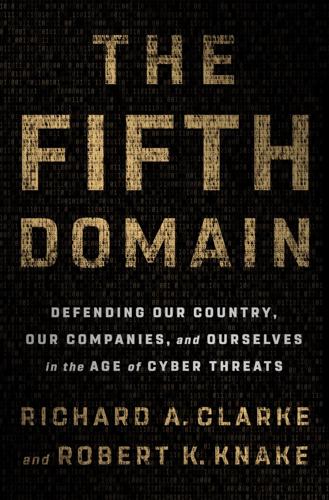
The Fifth Domain: Defending Our Country, Our Companies, and Ourselves in the Age of Cyber Threats
by
Richard A. Clarke
and
Robert K. Knake
Published 15 Jul 2019
With unusual candor: Financial data and information on its technology workforce is drawn from JPMorgan’s 2017 annual report, www.jpmorganchase.com/corporate/investor-relations/document/annualreport-2017.pdf; data on JPMorgan’s cybersecurity spending is from “JPMorgan Chase Competitive Strategy Teardown: How The Bank Stacks Up On Fintech & Innovation,” CBInsights, January 11, 2018, www.cbinsights.com/research/jpmorgan-chase-competitive-strategy-teardown-expert-intelligence. As Daniel explained: Michael J. Daniel’s presentation at the 2013 RSA Conference, “007 or DDOS: What Is Real-World Cyber Policy?,” https://obamawhitehouse.archives.gov/sites/default/files/docs/2013-02-28_final_rsa_speech.pdf.

System Error: Where Big Tech Went Wrong and How We Can Reboot
by
Rob Reich
,
Mehran Sahami
and
Jeremy M. Weinstein
Published 6 Sep 2021
In essence, the government provisionally grants the innovator permission to deploy the technology but also to devise regulations for the new system for a year. After a year, the innovators and officials reconvene to weigh the benefits and drawbacks of the new approach. The idea is to create living laboratories where regulators can observe the real-world effects of particular regulatory models. Fintech has been the major beneficiary of this approach, with firms able to test new offerings on consumers in real markets while regulators observe and evaluate their potential benefits and harms. Even if we reboot the way the policy-making process works, our democratic institutions will remain an afterthought for those who are driving technological change unless citizens hold politicians accountable for the harmful effects of unregulated technologies.
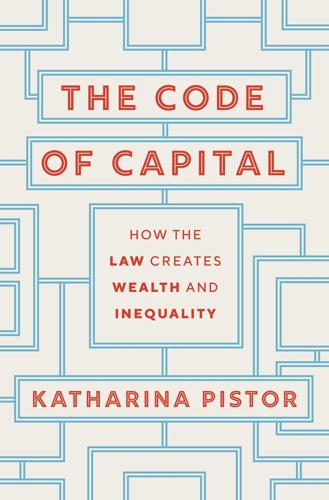
The Code of Capital: How the Law Creates Wealth and Inequality
by
Katharina Pistor
Published 27 May 2019
Chuan Tian, “The Rate of Blockchain Patent Applications Has Nearly Doubled in 2017,” July 27, 2017, available online at https://www.coindesk.com/rate-blockchain-patent-applications-nearly-doubled-2017/ (last accessed September 1, 2017). 55. See http://appft.uspto.gov/netahtml/PTO/search-bool.html (last accessed August 1, 2018). 56. Mark A. Chen, Qinxi Wuy, and Baozhong Yang, “How Valuable Is FinTech Innovation,” ssrn.com/abstract=3106892 (2018); see especially figures 4 and 5B. 57. See Chuan Tian, “Goldman Sachs Granted ‘SETLcoin’ Cryptocurrency Patent,” July 13, 2017, available online at https://www.coindesk.com/goldman-sachs-granted-setlcoin-cryptocurrency-patent/ (last accessed September 1, 2017); Christine Kim, “Barclays Seeks Twin Blockchain Patents for Banking Services,” July 19, 2018; and Kim, “Mastercard Wins Patent for Speeding Up Crypto Payments,” July 17, 2018; both available at www.coindesk.com (last accessed August 1, 2018). 58.
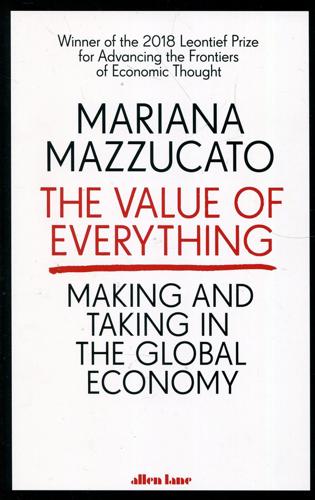
Value of Everything: An Antidote to Chaos The
by
Mariana Mazzucato
Published 25 Apr 2018
Yet the ‘indirect' measure of financial intermediation services adopted by national accounts (FISIM, explained in Chapter 4) assumes that a rise in added value will be reflected in a wider wedge (or, if the wedge narrows, by increased fees and charges through which intermediaries can obtain payment directly). The point, of course, is not to eliminate interest but - if interest is the price of financial intermediation - to make sure that it reflects increased efficiencies in the system, driven by appropriate investments in technological change, as some fintech (financial technology) developments have done. Banks stand in sharp contrast to supermarkets. As we have seen, the cost of financial services probably rose in the twentieth century, despite the dramatic growth of the financial industry, suggesting that financial consumers did not benefit from economies of scale in the same way as they did with supermarkets, epitomized by Walmart in the US and Tesco in the UK.

World Cities and Nation States
by
Greg Clark
and
Tim Moonen
Published 19 Dec 2016
First, central government will need to manage carefully any regulatory reform to support the City of London while also ensuring it can retain European Single Market access. Alternatively, national negotiations may also shape London’s ability to become more of an offshore centre for renminbi trading, private banking and fintech (Agnew and Jenkins, 2016). Secondly, given the risks of talent flight from London to other cities in Europe – among both domestic and European workers – central government can support London by clarifying and guaranteeing the status of existing EU-born residents, and perhaps developing a clear immigration policy for highskilled workers.
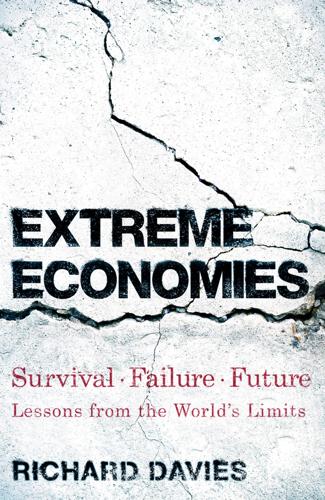
Extreme Economies: Survival, Failure, Future – Lessons From the World’s Limits
by
Richard Davies
Published 4 Sep 2019
Then another neighbour would pawn the goods. Often a building had a go-to person who pawned items regularly, was in good standing with lenders and was unafraid of stigma. One neighbour provided the collateral, a second arranged the pawn-shop loan, and the third – in distress and short of cash – received the funds. GOVAN FINTECH Just as Robert Putnam found in rural Italy, the trust prevalent in Glasgow’s tenements supported unique financial innovations. Another tradition was a lending system known as a ‘ménage’. A typical ménage involved 20 people and ran for 20 weeks. A value for the pot was set, often at £2, and each week members would pay in one-twentieth of this amount.

Blockchain Revolution: How the Technology Behind Bitcoin Is Changing Money, Business, and the World
by
Don Tapscott
and
Alex Tapscott
Published 9 May 2016
Clippinger, CEO, ID3, Research Scientist, MIT Media Lab Bram Cohen, Creator, BitTorrent Amy Cortese, Journalist, Founder, Locavest J-F Courville, Chief Operating Officer, RBC Wealth Management Patrick Deegan, CTO, Personal BlackBox Primavera De Filippi, Permanent Researcher, CNRS and Faculty Associate at the Berkman Center for Internet and Society at Harvard Law School Hernando de Soto, President, Institute for Liberty and Democracy Peronet Despeignes, Special Ops, Augur Jacob Dienelt, Blockchain Architect and CFO, itBit and Factom Joel Dietz, Swarm Corp Helen Disney, (formerly) Bitcoin Foundation Adam Draper, CEO and Founder, Boost VC Timothy Cook Draper, Venture Capitalist; Founder, Draper Fisher Jurvetson Andrew Dudley, Founder and CEO, Earth Observation Joshua Fairfield, Professor of Law, Washington and Lee University Grant Fondo, Partner, Securities Litigation and White Collar Defense Group, Privacy and Data Security Practice, Goodwin Procter LLP Brian Forde, Former Senior Adviser, The White House; Director, Digital Currency, MIT Media Lab Mike Gault, CEO, Guardtime George Gilder, Founder and Partner, Gilder Technology Fund Geoff Gordon, CEO, Vogogo Vinay Gupta, Release Coordinator, Ethereum James Hazard, Founder, Common Accord Imogen Heap, Grammy-Winning Musician and Songwriter Mike Hearn, Former Google Engineer, Vinumeris/Lighthouse Austin Hill, Cofounder and Chief Instigator, Blockstream Toomas Hendrik Ilves, President of Estonia Joichi Ito, Director, MIT Media Lab Eric Jennings, Cofounder and CEO, Filament Izabella Kaminska, Financial Reporter, Financial Times Paul Kemp-Robertson, Cofounder and Editorial Director, Contagious Communications Andrew Keys, Consensus Systems Joyce Kim, Executive Director, Stellar Development Foundation Peter Kirby, CEO and Cofounder, Factom Joey Krug, Core Developer, Augur Haluk Kulin, CEO, Personal BlackBox Chris Larsen, CEO, Ripple Labs Benjamin Lawsky, Former Superintendent of Financial Services for the State of New York; CEO, The Lawsky Group Charlie Lee, Creator, CTO; Former Engineering Manager, Litecoin Matthew Leibowitz, Partner, Plaza Ventures Vinny Lingham, CEO, Gyft Juan Llanos, EVP of Strategic Partnerships and Chief Transparency Officer, Bitreserve.org Joseph Lubin, CEO, Consensus Systems Adam Ludwin, Founder, Chain.com Christian Lundkvist, Balanc3 David McKay, President and Chief Executive Officer, RBC Janna McManus, Global PR Director, BitFury Mickey McManus, Maya Institute Jesse McWaters, Financial Innovation Specialist, World Economic Forum Blythe Masters, CEO, Digital Asset Holdings Alistair Mitchell, Managing Partner, Generation Ventures Carlos Moreira, Founder, Chairman, and CEO, WISeKey Tom Mornini, Founder and Customer Advocate, Subledger Ethan Nadelmann, Executive Director, Drug Policy Alliance Adam Nanjee, Head of Fintech Cluster, MaRS Daniel Neis, CEO and Cofounder, KOINA Kelly Olson, New Business Initiative, Intel Steve Omohundro, President, Self-Aware Systems Jim Orlando, Managing Director, OMERS Ventures Lawrence Orsini, Cofounder and Principal, LO3 Energy Paul Pacifico, CEO, Featured Artists Coalition Jose Pagliery, Staff Reporter, CNNMoney Stephen Pair, Cofounder and CEO, BitPay Inc.
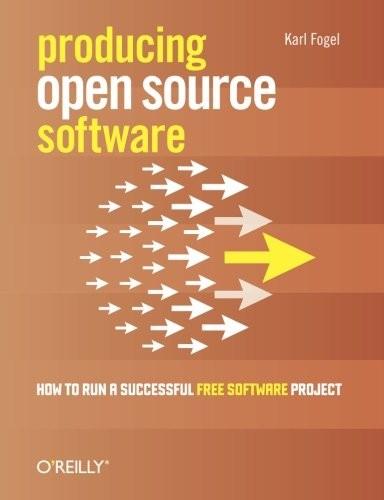
Producing Open Source Software: How to Run a Successful Free Software Project
by
Karl Fogel
Published 13 Oct 2005
Establish contact early with relevant communities Another way to foster independent sources of expertise is to establish contact with potentially interested technical communities early and often during development. They're almost always out there. For example, if you're developing software with geospatial functionality, there is an open source geospatial community that probably wants to hear about it; if you're developing software to process financial data, or medical data, there are open source fintech and medical data communities. You may even have already announced your project to those people when you began, as discussed in the section called “Announcing” in Chapter 2, Getting Started. But there's more you can do to create external reservoirs of knowledge. When your project runs across a design issue that you suspect others may have encountered before, it's fine to ask them how they handled it, as long as you do your homework by first finding out what you can from their code and documentation and then asking any remaining questions.
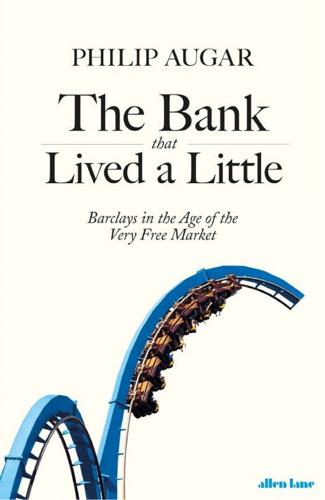
The Bank That Lived a Little: Barclays in the Age of the Very Free Market
by
Philip Augar
Published 4 Jul 2018
After leaving Barclays, Antony Jenkins served out his term as chairman of the charity Business in the Community and took over as chair of the Institute for Apprenticeships. A strong believer in the potential of digital technology to increase competition in banking, he became a thought leader in ‘fintech’ and, among other things, founded 10x Future Technologies in order to become involved directly. Walker’s and Jenkins’ successors as chairman and chief executive respectively, John McFarlane and Jes Staley, remain in post at the time of writing. The regulators’ inquiry into Staley’s hunt for the whistleblower reported in April and May 2018: Staley was reprimanded and fined £642,430, but kept his job.
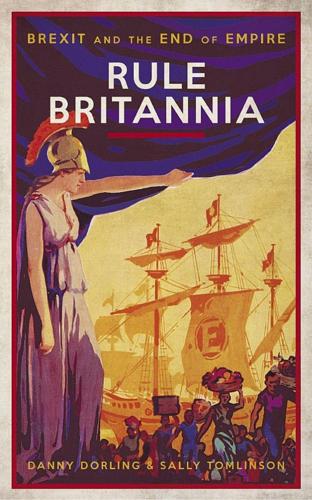
Rule Britannia: Brexit and the End of Empire
by
Danny Dorling
and
Sally Tomlinson
Published 15 Jan 2019
Medical devices 51. Road haulage and logistics 7. Automotive 22. Environmental services: water 37. Medical services and social care 52. Space 8. Aviation 23. Film, TV, video, radio and photography 38. Museums, galleries and libraries 53. Steel and other metals/commodities 9. Broadcasting 24. Fintech 39. Music, performing and visual arts 54. Technology (ICT) 10. Bus and coach transport 25. Fisheries 40. Nuclear 55. Telecommunications 11. Business services 26. Gambling 41. Oil and fossil fuel production, including gas 56. Textiles and clothing 12. Catering: retail and wholesale 27.
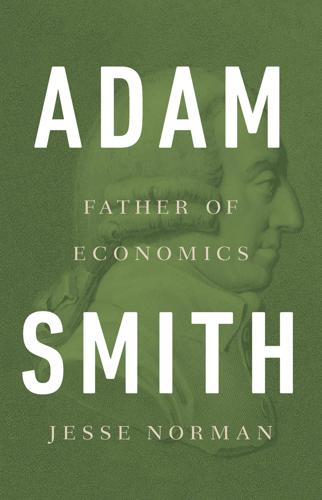
Adam Smith: Father of Economics
by
Jesse Norman
Published 30 Jun 2018
Jones, Daniel Cox, Betsy Cooper and Rachel Lienesch, ‘Anxiety, Nostalgia and Mistrust: Findings from the 2015 American Values Survey’, Public Religion Research Institute 2015, http://www.prri.org/wp-content/uploads/2015/11/PRRI-AVS-2015-1.pdf McCutcheon v. Federal Election Commission: US Supreme Court (12-536), 2 April 2014 Citizens United v. Federal Election Commission: US Supreme Court (08-205), 24 March 2009 Inefficiency and conflicts in UK banking: Martin Wolf, ‘Good news—fintech could disrupt finance’, Financial Times, 8 March 2016. Also see Andy Haldane, ‘Finance Version 2.0?’, Bank of England/London Business School 2016 Increase in bank regulation and regulators: Andy Haldane, ‘The Dog and the Frisbee’, Federal Reserve Bank of Kansas City 366th Economic Policy Symposium, Jackson Hole, Wyoming, 31 August 2012 Effects of large financial sectors: Jean-Louis Arcand, Enrico Berkes and Ugo Panizza, ‘Too Much Finance?’
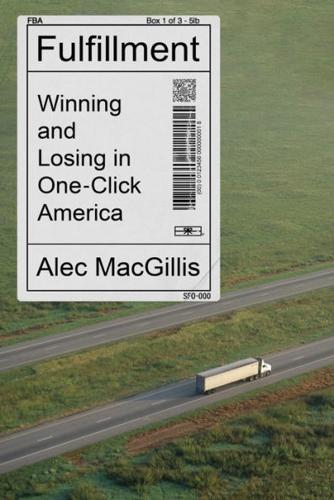
Fulfillment: Winning and Losing in One-Click America
by
Alec MacGillis
Published 16 Mar 2021
But when they got inside the tent, there were more lines. There was a long line for people to have their résumés reviewed, and a long line for interview tips. There were shorter lines at stations for all the areas where people could aspire to work: Amazon Web Services, Amazon Stores, Alexa Shopping, Finance & FinTech, and so on. Prominently displayed on the interior of one tent wall was a quote from Jeff Bezos: “Build yourself a great story.” There was another conversation happening on the stage inside the tent, between two young employees in Amazon T-shirts, sitting in cream-white swivel chairs. “How long should my résumé be?”
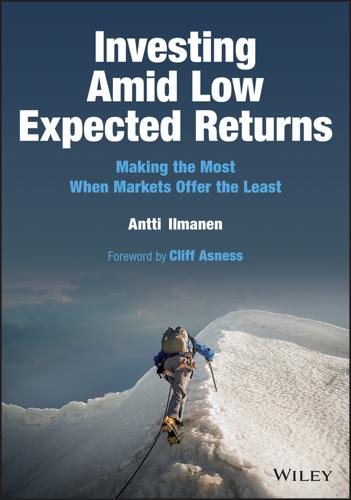
Investing Amid Low Expected Returns: Making the Most When Markets Offer the Least
by
Antti Ilmanen
Published 24 Feb 2022
For those interested in this intersection, I warmly recommend three books written in recent years: Will Goetzmann's (2016) Money Changes Everything, Philip Coggan's (2020) More, and Bill Bernstein's (2021) The Delusions of Crowds. 6 See Chambers-Dimson (2016) and Morecroft-Turnbull (2019). 7 This book will not drill into the history of investment vehicles or financial services, either the ancestry (the first common stock Dutch East India Company in 1602, the important development of limited liability in the mid-1800s, or the recent growth of ETFs), let alone the prospects for fintech, DeFi, and blockchain. Chambers-Dimson (2016) and Goetzmann (2016) are excellent introductions to financial history. 8 See Chambers-Dimson-Kaffe (2020). This article contains a great review of US endowment investing practices since WWII, while the authors have earlier focused on Keynes's pioneering role in Chambers-Dimson (2015). 9 See Clowes (2000), Federal Flow of Funds (Table L118), and Pensions and Investments surveys in Figure 3.5 in this chapter. 10 See Thinking Ahead Institute (2021).

Born in Flames
by
Bench Ansfield
Published 15 Aug 2025
On Jewish landlords and Black-Jewish relations, see Beryl Satter, Family Properties: How the Struggle over Race and Real Estate Transformed Chicago and Urban America (New York: Picador, 2010), especially 17–19, 261–64; Lila Corwin Berman, Metropolitan Jews: Politics, Race, and Religion in Postwar Detroit (Chicago: University of Chicago Press, 2015), 96–105, 145; and Jeffrey Melnick, Black-Jewish Relations on Trial: Leo Frank and Jim Conley in the New South (Jackson: University Press of Mississippi, 2000). 12On the contemporary housing crisis and the rebirth of the tenant movement, see Tara Raghuveer and John Washington, “The Case for the Tenant Union,” Poverty & Race Research Action Council 32, no. 1 (2023); Tracy Rosenthal, “Inside LA’s Homeless Industrial Complex,” New Republic, May 19, 2022; Cea Weaver, “From Universal Rent Control to Cancel Rent: Tenant Organizing in New York State,” New Labor Forum 30, no. 1 (2021): 93–98; Matthew Desmond, Evicted: Poverty and Profit in the American City (New York: Broadway Books, 2016); After Echo Park Lake Research Collective, (Dis)Placement: The Fight for Housing and Community After Echo Park Lake (Los Angeles: UCLA Luskin Institute on Inequality and Democracy, 2022); and Erin McElroy, “Countermapping Displacement and Resistance in Alameda County with the Anti-Eviction Mapping Project,” American Quarterly 70, no. 3 (2018): 601–4. On the expansion of private equity and fintech firms into the rental real estate market, see especially Heather Vogell with Haru Coryne and Ryan Little, “Rent Going Up? One Company’s Algorithm Could Be Why,” ProPublica, October 15, 2022, and Heather Vogell, “When Private Equity Becomes Your Landlord,” ProPublica, February 7, 2022. 13Saidiya Hartman, Scenes of Subjection: Terror, Slavery, and Self-Making in Nineteenth-Century America (New York: Oxford University Press, 1997), 22, 42. 14This periodization is indebted to Giovanni Arrighi, The Long Twentieth Century: Money, Power and the Origins of Our Times (New York: Verso, 1994), 118, 127–28, 310.
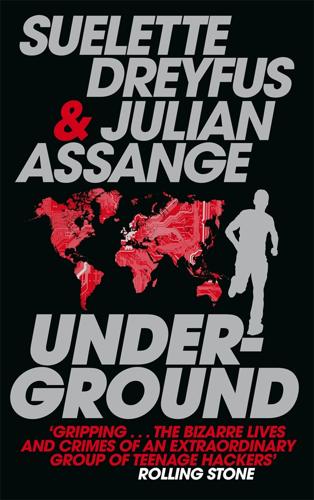
Underground
by
Suelette Dreyfus
Published 1 Jan 2011
Acts: Computer Misuse Act 1990 (UK) Crimes Act 1914 (no. 5) (Cwlth) Crimes Legislation Amendment Act 1989, no. 108 Computer Fraud and Abuse Act 1986 (US), 18 USC 1030 Computer Misuse Crimes Legislation Amendment Bill 1989 (AUS), Explanatory Memo Clause 7 Crimes (Computers) Act, no. 36 of 1988 (VIC) Other publications and databases: Aljazeera American Bar Association Journal Associated Press Attorney General’s Information Service (Australia) Australian Accountant Australian Computer Commentary Aviation Week and Space Technology (USA) Banking Technology BBC News Business Week Cable News Network (CNN) Card News (USA) CBS News CERT Advisories (The Computer Emergency Response Team at Carnegie Mellon University) Chicago Daily Law Bulletin CNN News CommunicationsWeek CommunicationsWeek International Computer Incident Advisory Capability (CIAC) Computer Law and Practice (Australia) Computer Law and Security Report (Australia) Computer Weekly Computergram Computerworld Computing Corporate EFT Report (USA) Daily Mail (UK) Daily Telegraph (Sydney) Daily Telegraph (UK) Data Communications Datalink Evening Standard (UK) Export Control News (USA) FinTech Electronic Office (The Financial Times) Gannett News Service Government Computer News (USA) Haaretz InfoWorld Intellectual Property Journal (Australia) Intelligence Newsletter (Indigo Publications) Journal of Commerce (The New York Times) Journal of the Law Society of Scotland Korea Economic Daily Law Institute Journal (Melbourne) Law Society’s Gazette (UK) Law Society’s Guardian Gazette (UK) Legal Times (USA) Lexis-Nexis (Reed Elsevier) Lloyds List Mail on Sunday (UK) Media Week MIS Week Mortgage Finance Gazette Network World New Law Journal (UK) New York Law Journal Newsday PC Week (USA) Press Association Newsfile Reuter Reuter News Service – United Kingdom Science Salon South China Morning Post St Louis Post-Dispatch St Petersburg Times Sunday Telegraph (Sydney) Sunday Telegraph (UK) Sunday Times (UK) Telecommunications (Horizon House Publications Inc.)

Your Computer Is on Fire
by
Thomas S. Mullaney
,
Benjamin Peters
,
Mar Hicks
and
Kavita Philip
Published 9 Mar 2021
Killian Fox, “Africa’s Mobile Economic Revolution,” Guardian (July 24, 2011), https://www.theguardian.com/technology/2011/jul/24/mobile-phones-africa-microfinance-farming. 40. Tawneet Suri and William Jack, “The Long-Run Poverty and Gender Impacts of Mobile Money,” Science 354, no. 6317 (2016). 41. Milford Bateman, Maren Duvendack, and Nicholas Loubere, “Is Fin-Tech the New Panacea for Poverty Alleviation and Local Development? Contesting Suri and Jack’s M-Pesa Findings Published in Science,” Review of African Political Economy (2019); Kusimba, Kunyu, and Gross, “Social Networks of Mobile Money in Kenya.” 42. Anne Helmond, “The Platformization of the Web: Making Web Data Platform Ready,” Social Media + Society 1, no. 2 (2015). 43.

The Quiet Coup: Neoliberalism and the Looting of America
by
Mehrsa Baradaran
Published 7 May 2024
Although foreign migrants toil under coercive labor arrangements akin to debt slavery and live in slumlike conditions in Saudi Arabia, the royal family’s wealth is converted into “joy-spreading” visions of humanity’s future. The Vision Fund’s portfolio of happiness-spreading investments are made up of a variety of tech firms specializing in AI, fintech, or e-commerce whose business is profit making but whose marketing promises are much loftier. These include: Kabbage, an AI-based lender with “core values” including Care Deeply, Inspire Innovation, Win, Stay Connected, Unconditional Commitment, and lastly, Create Holy Shit Moments Uber, the golden egg, whose more modest mission is “We ignite opportunity by setting the world in motion” DoorDash, which describes its delivery service app as “just the beginning of connecting people with possibility—easier evenings, happier days, bigger savings accounts, wider nets and stronger communities” Opendoor, a real estate broker intending “to empower everyone with the freedom to move” Zymergen, a biotech company that is “reimagining the world” through “a combination of Darwinian selection of genetically engineered microbes combined with machine learning, analysis and automation” Not all of these start-ups will survive, but those that do will do so by prospecting new terrain for extraction.
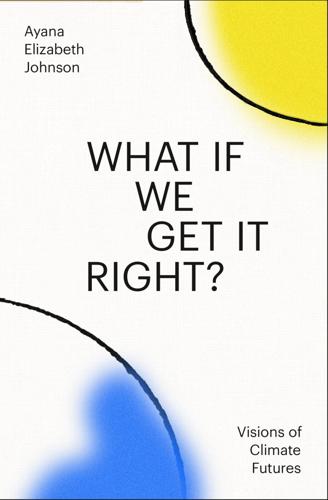
What If We Get It Right?: Visions of Climate Futures
by
Ayana Elizabeth Johnson
Published 17 Sep 2024
PFC Catwalk PFC Compound PFC Agrotech PFC Rainwater Harvest PFC Poultry Farm PFC Movie Nite PFC Oyster Farm PFC Farm Fintech PFC Brooklyn Depot PFC Seed + Water Drone Transformation The time has come for us to re-imagine everything…to become the new kind of people that are needed at such a huge period of transition. We must transform ourselves to transform the world.
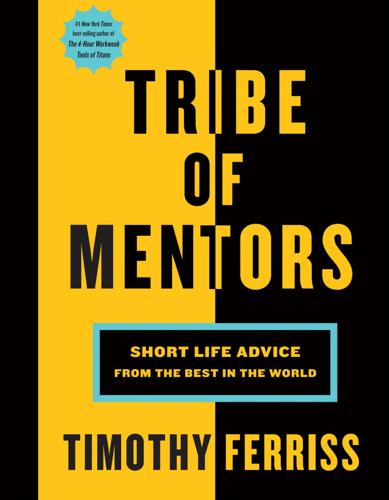
Tribe of Mentors: Short Life Advice From the Best in the World
by
Timothy Ferriss
Published 14 Jun 2017
Fermented foods (especially if they start with a “K”) are a big favorite of mine in general, and they also lend themselves particularly well to such experimentation. In the last five years, what new belief, behavior, or habit has most improved your life? Focusing on my strengths. After PayPal, my most important “career” goal was to diversify, to do something not in fin-tech, not in payments, not in anti-fraud, not in anything I really enjoyed doing in my first successful project. I really wanted to diversify my skills and experiences. And while the next few startups were all fun (and some turned out fairly well), I never achieved the same startup “high” I had while building PayPal.

Empire of AI: Dreams and Nightmares in Sam Altman's OpenAI
by
Karen Hao
Published 19 May 2025
After another semester, he dropped out of college entirely, unable to swallow any more school when he could be out in the real world building products. He moved to the Bay Area and joined Stripe as a budding startup with only three other people; he impressed the founders so much with his coding genius that he became chief technology officer. Over five years, he prototyped many of Stripe’s early products, helping it grow into a powerhouse fintech company that provides digital payments infrastructure to the likes of Amazon and Shopify. The run left him with significant wealth and the rarefied Valley status of having helped build a multibillion-dollar company. Sutskever was the scientist. Lean and wiry, he was born in the Soviet Union and raised in Israel, where he blossomed as a math prodigy.